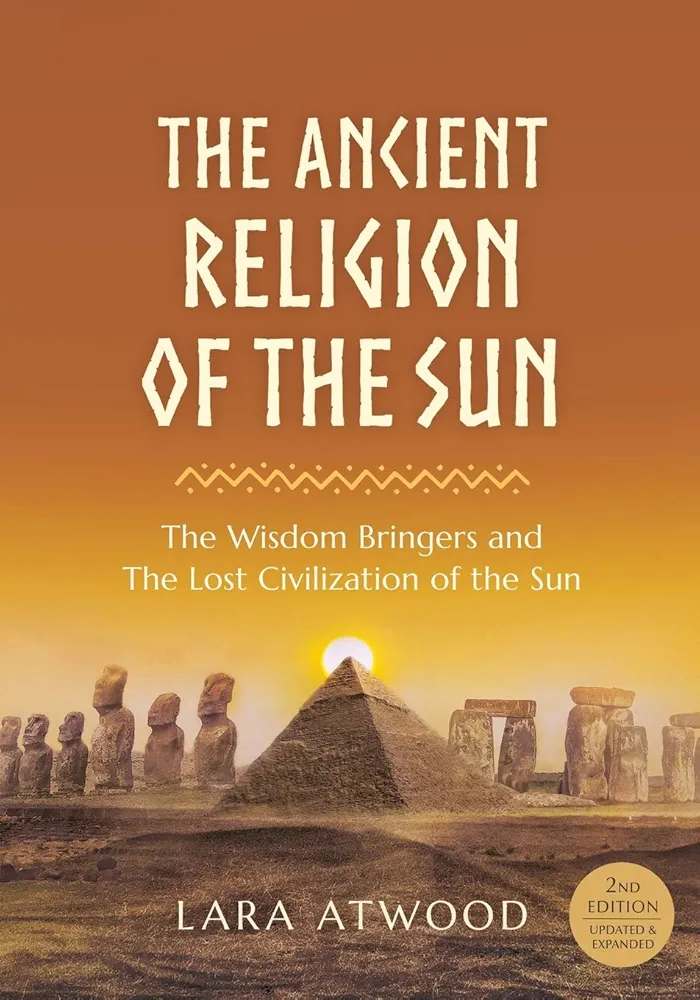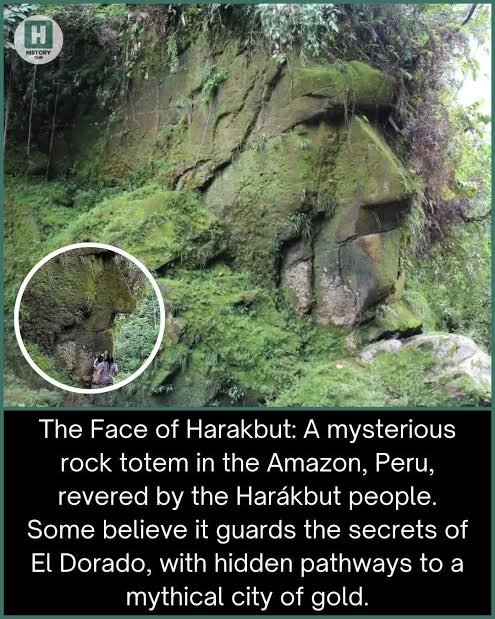Wandjina Closed Mouth Art, Australia
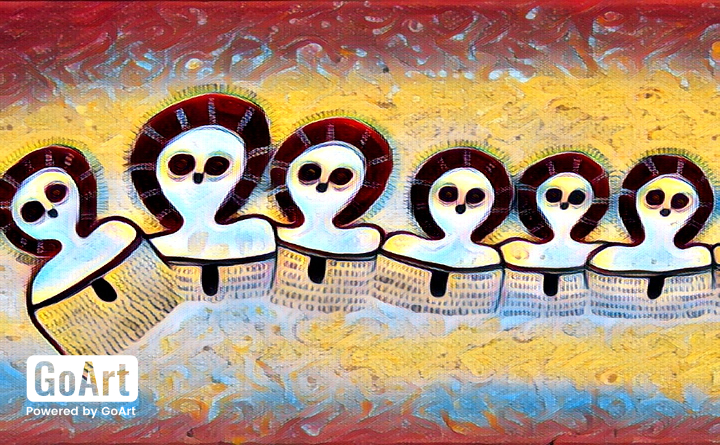
In Australian Aboriginal mythology, Baiame was the creator deity and sky father in the Dreaming of several indigenous Australian peoples of south-eastern Australia, such as the Wonnarua, Kamilaroi, Eora, Darkinjung, and Wiradjuri.
● The legend of Baiame describes how Baiame descended from heaven and created rivers, mountains, and forests. He then taught the people their laws of life, traditions, songs, and culture. He was also the creator of the first initiation site. This is referred to as the bora, which is where the boys were initiated into manhood. When he finished, he returned to the sky, where he was known as the Sky Hero, All-Father, or Sky Father.
Australia Androgynous Ungud Deity Left similar Sign
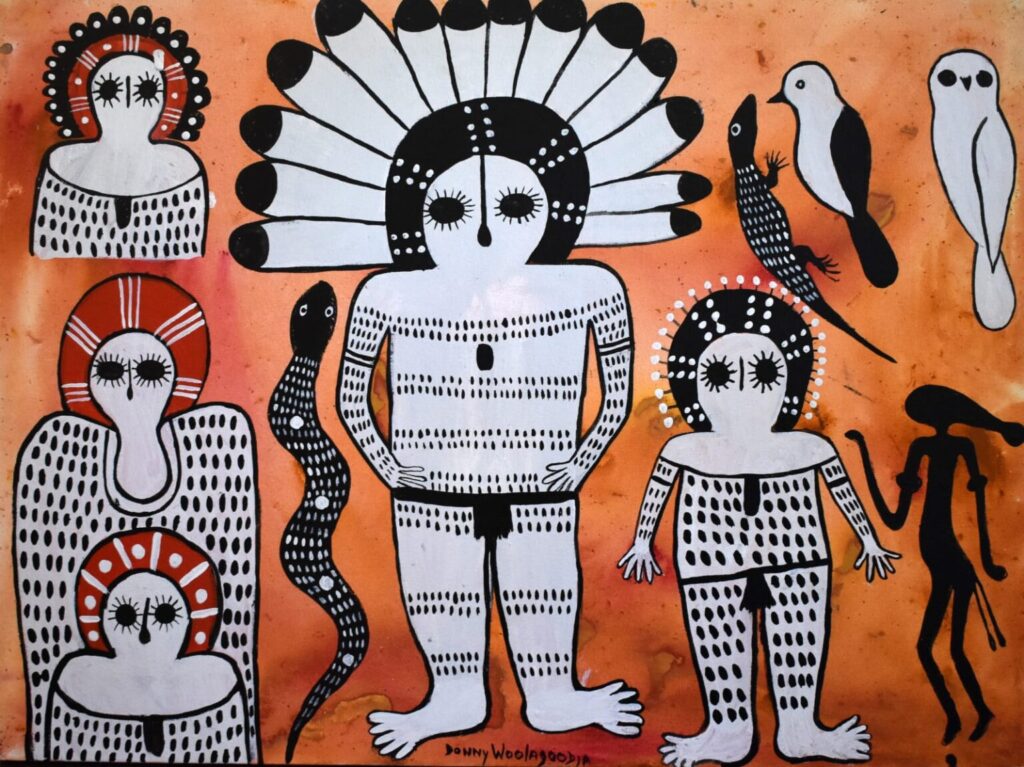
Rod Deity, Russia
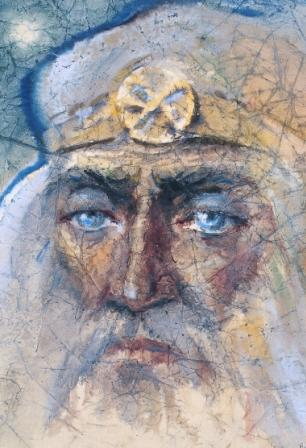
Credit- Юрій Самсон – Yuri Samson on Narodna Pravda • CC BY 2.0
Often considered the first and eternal Deity, Rod was associated with fate, birth, and cosmic order.Rod is considered the first Deity, existing before all others
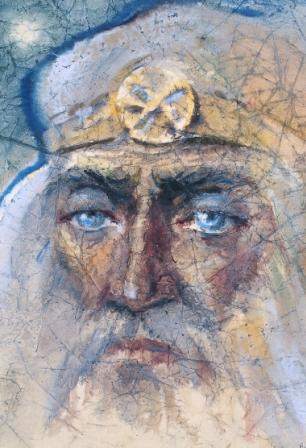
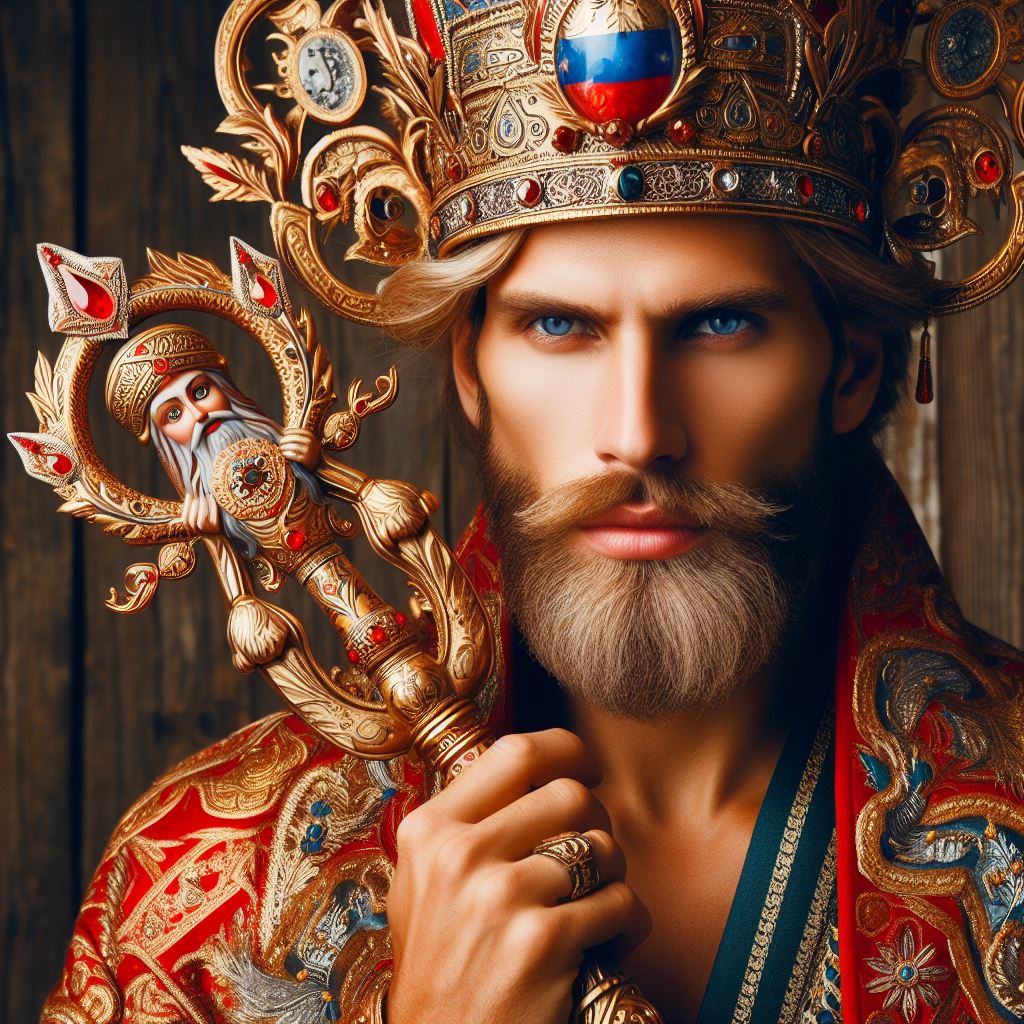
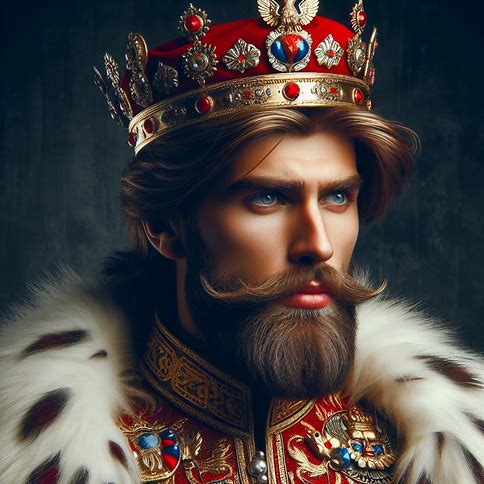
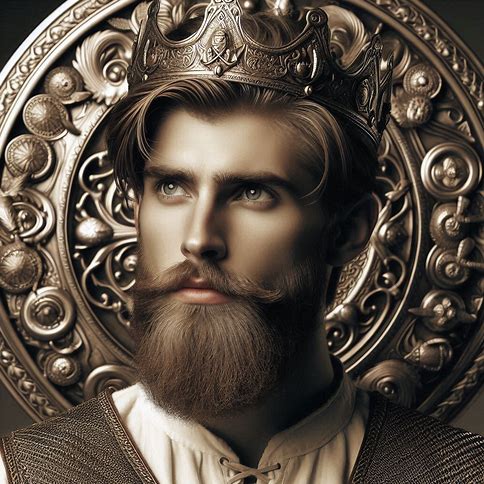

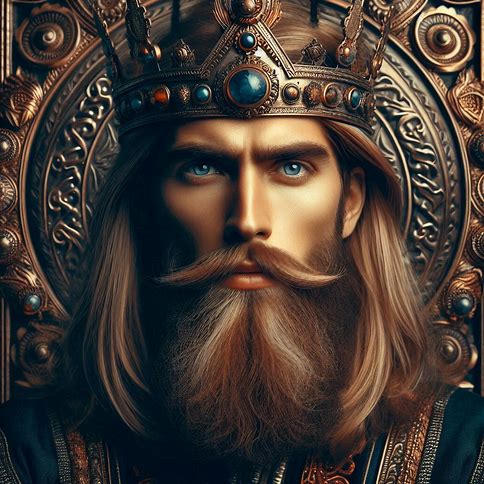
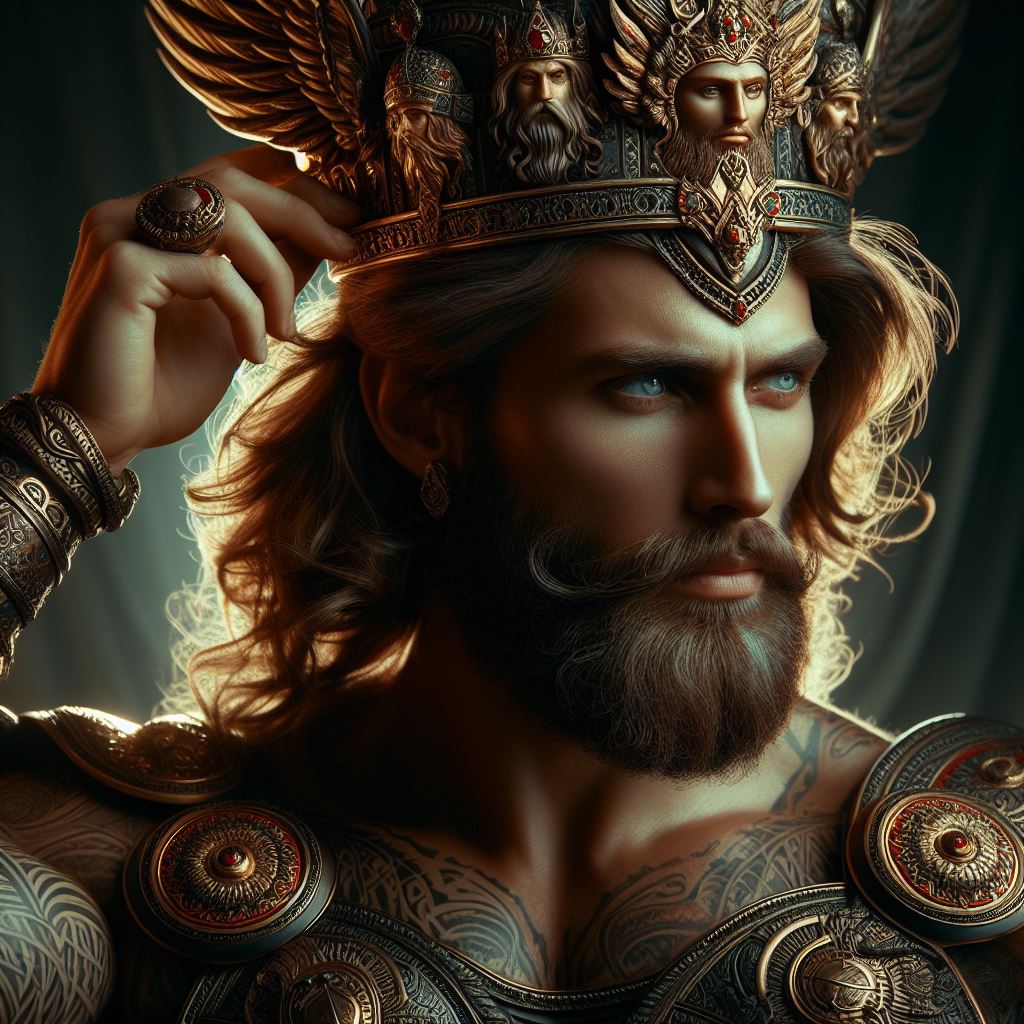
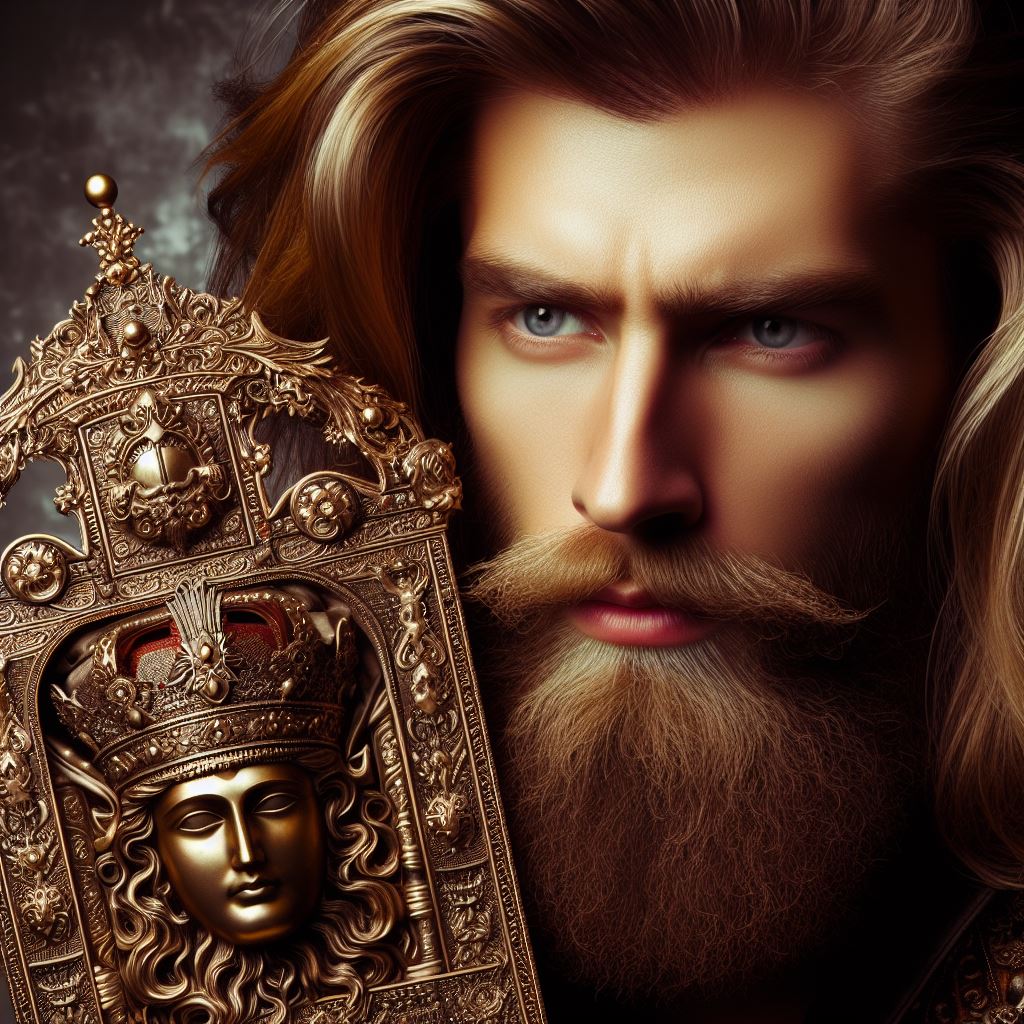
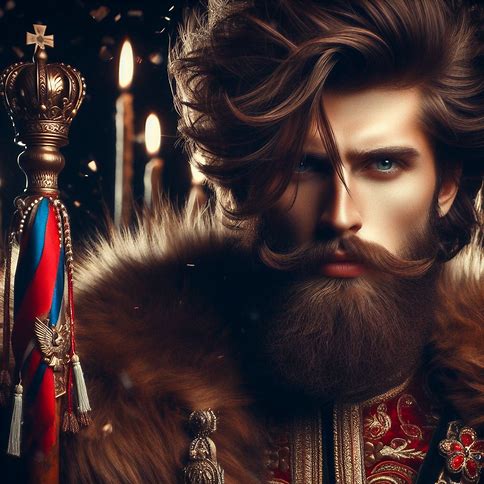

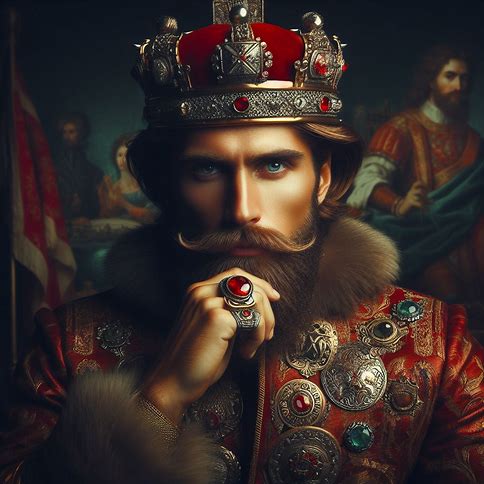
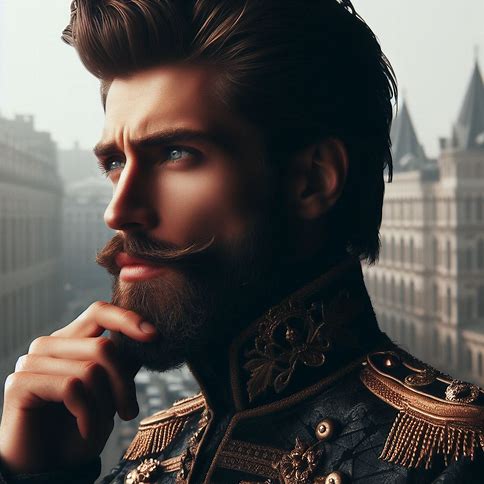
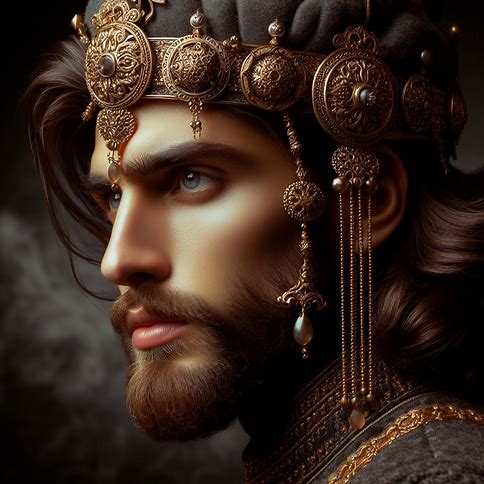
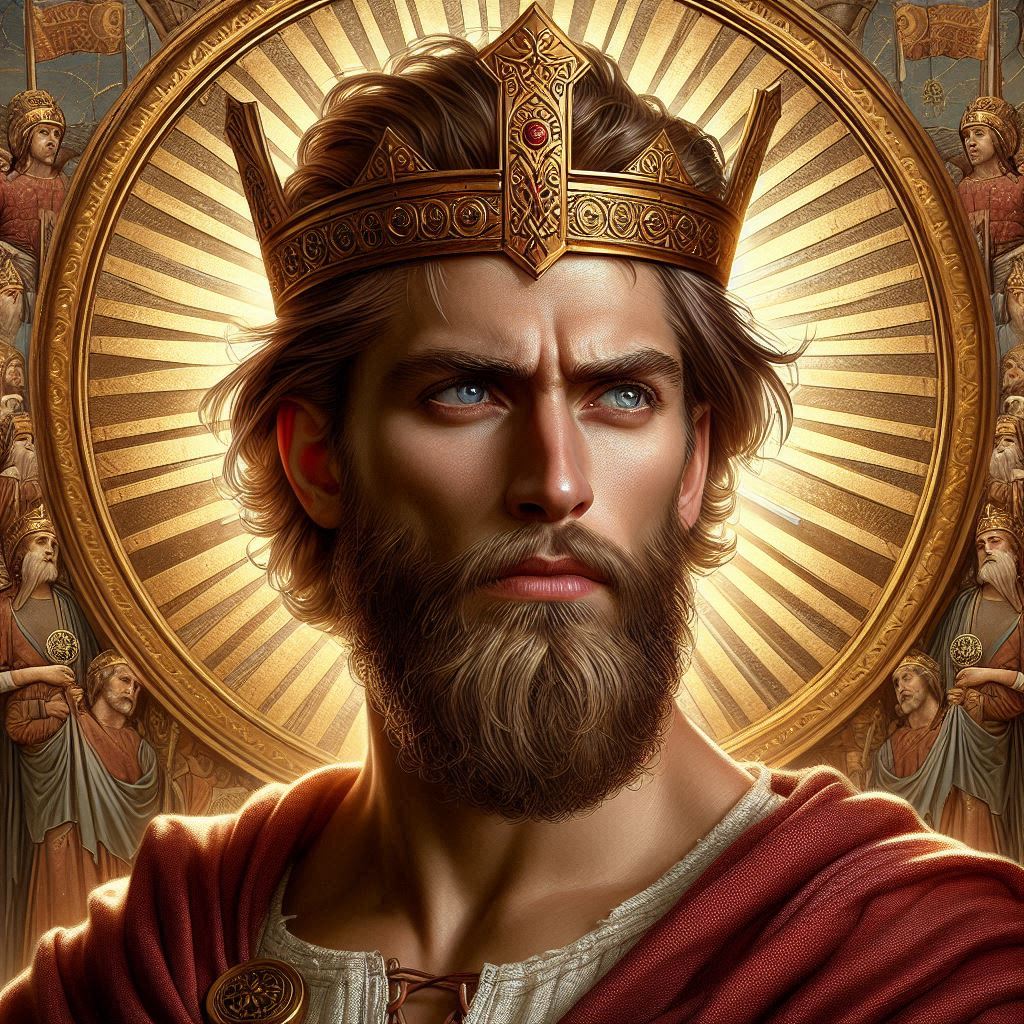
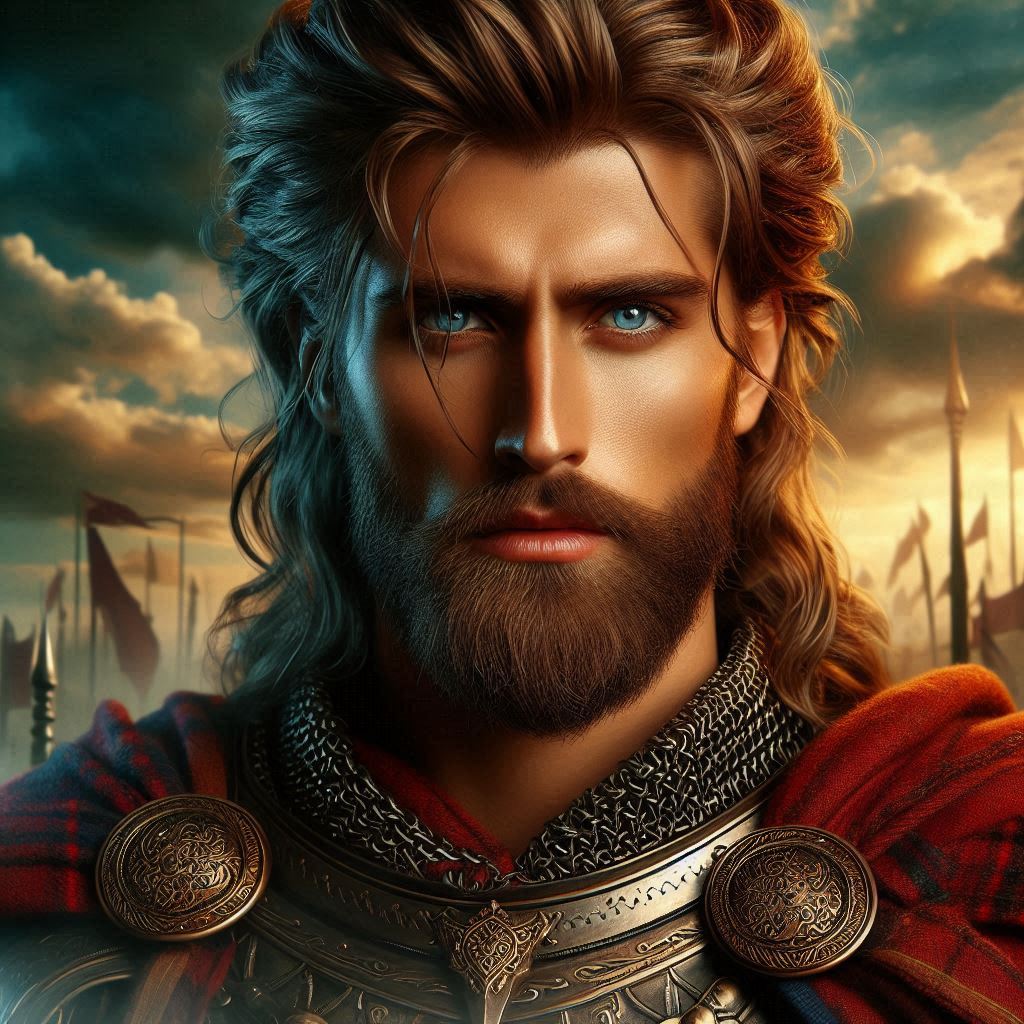
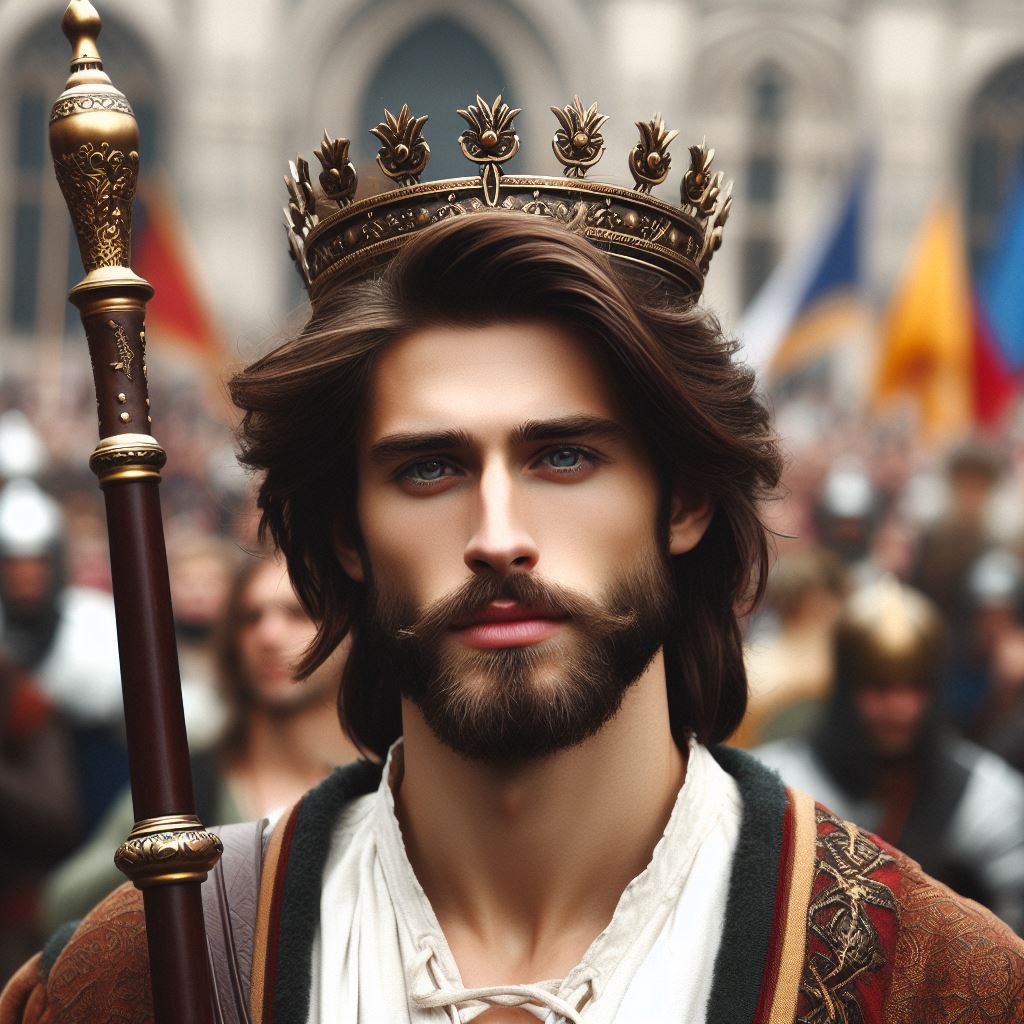
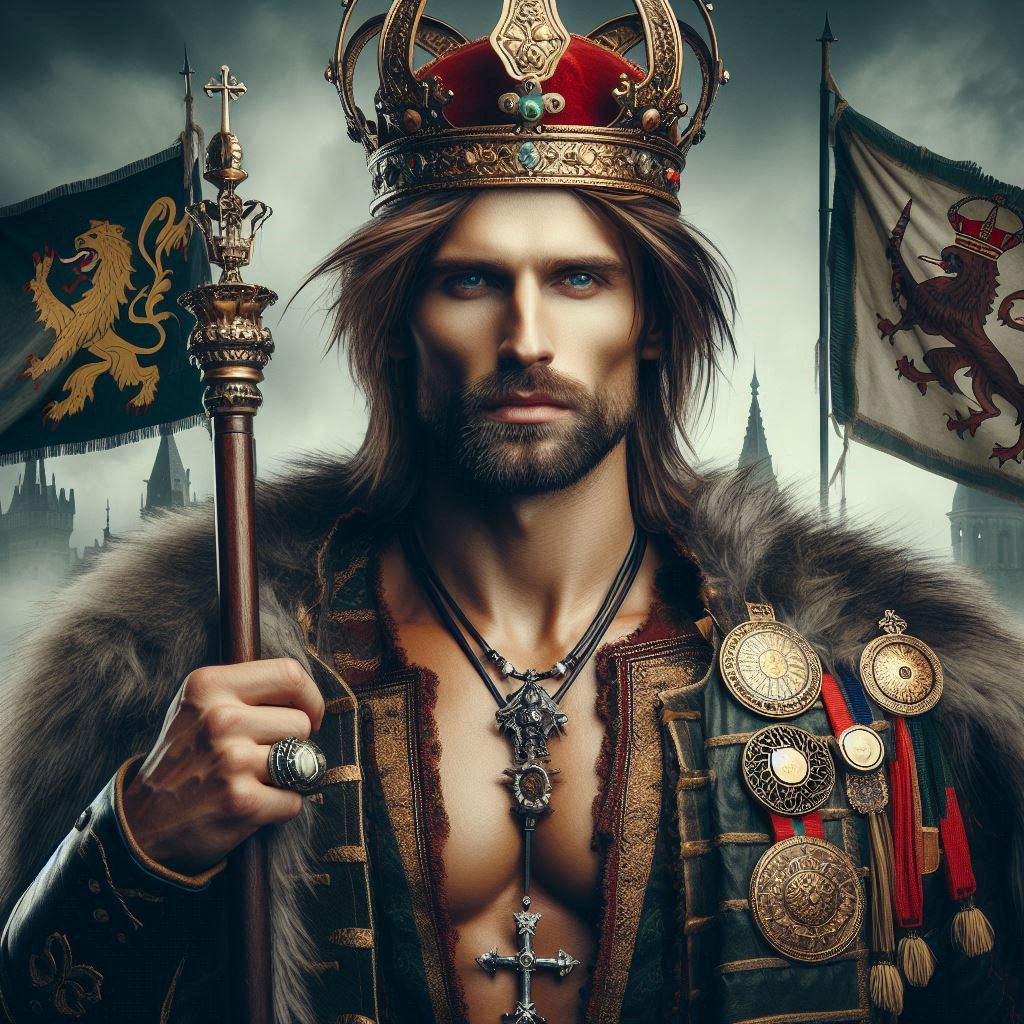

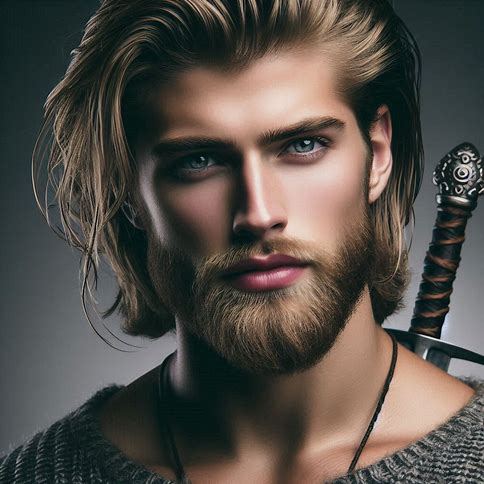

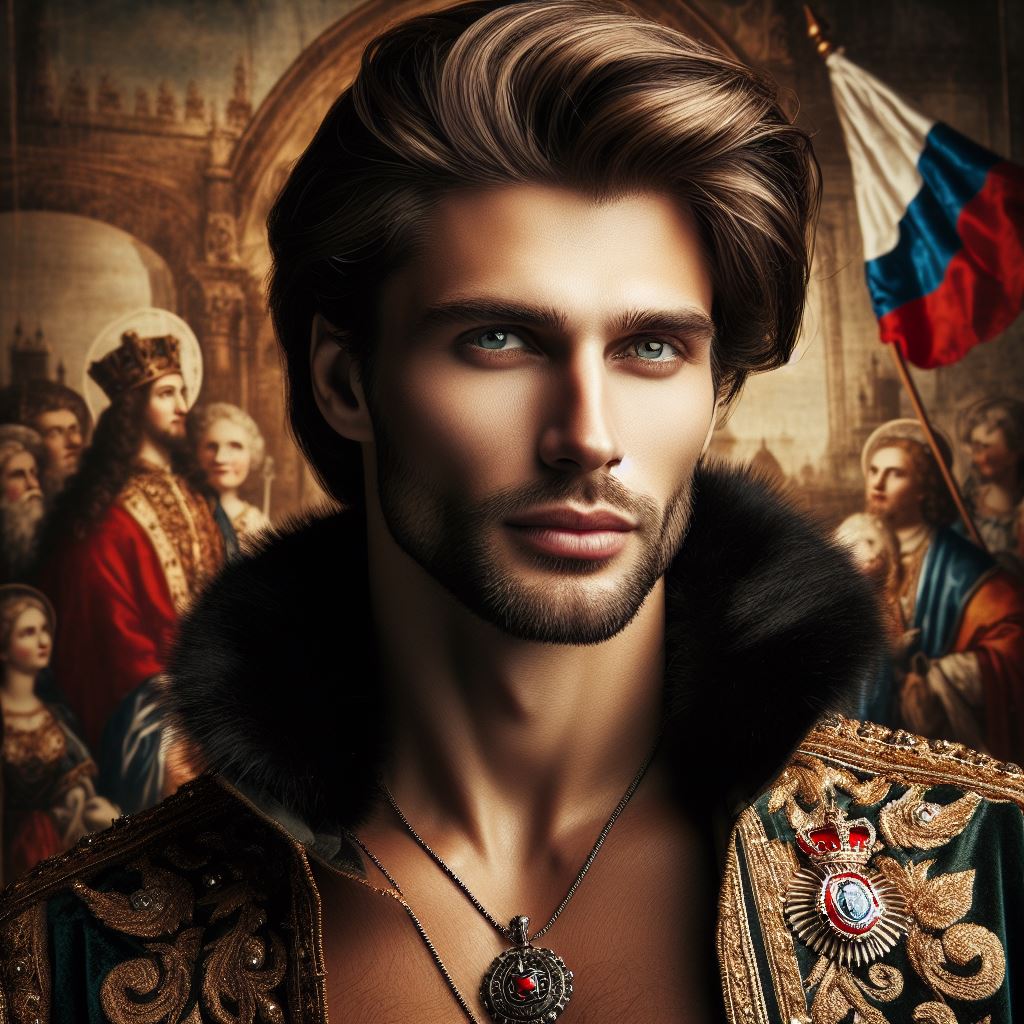


Rod face reconstruction through Microsoft Bing AI software
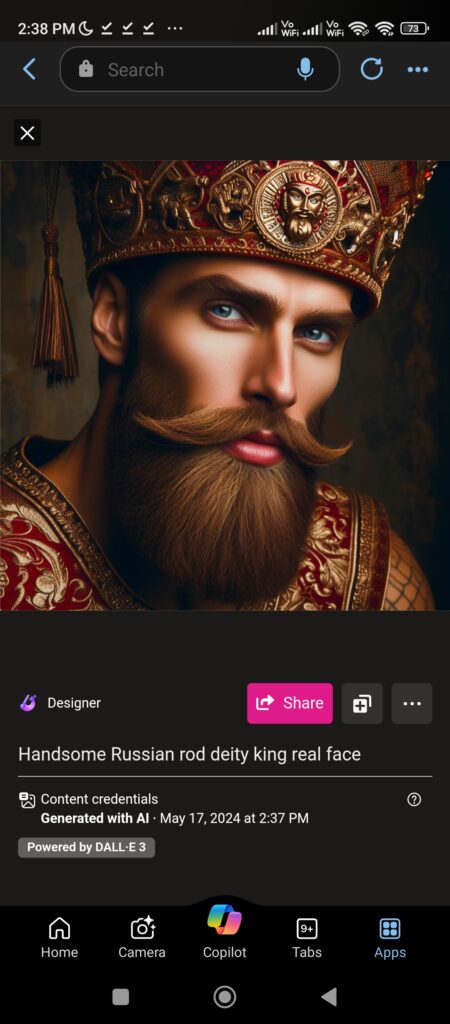
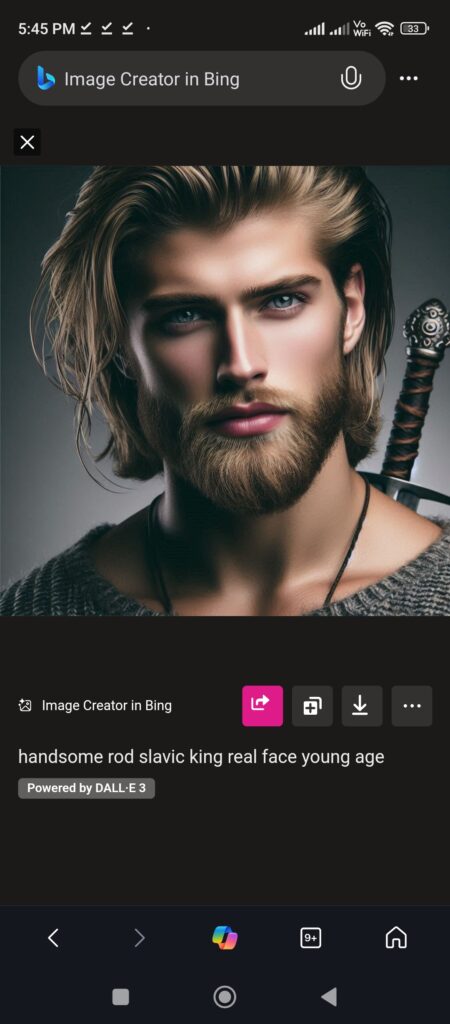
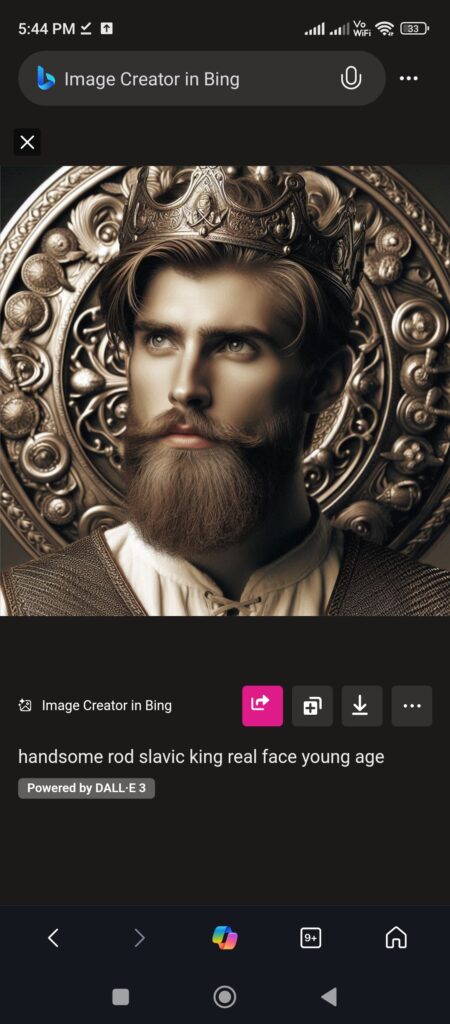
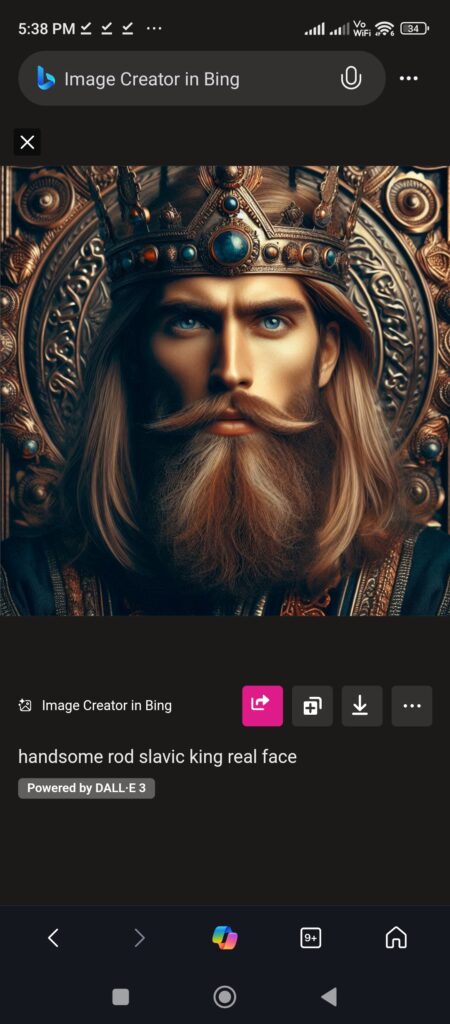
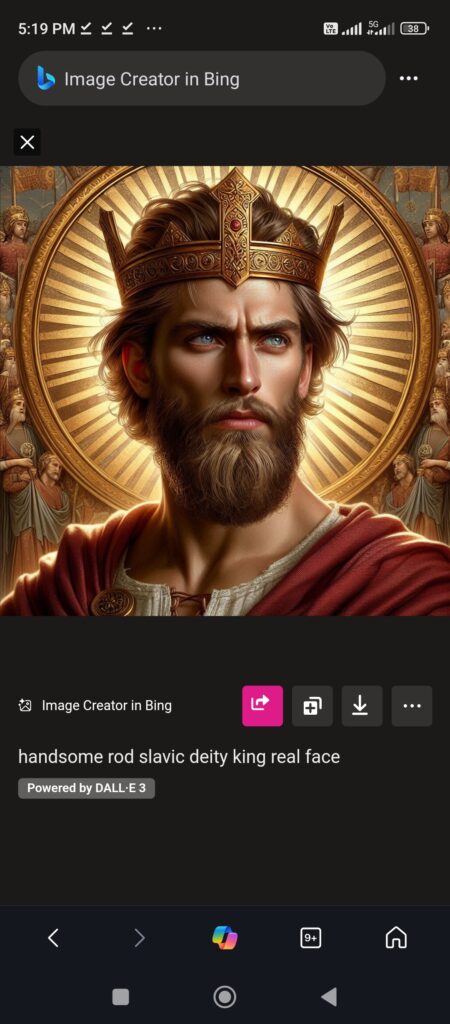

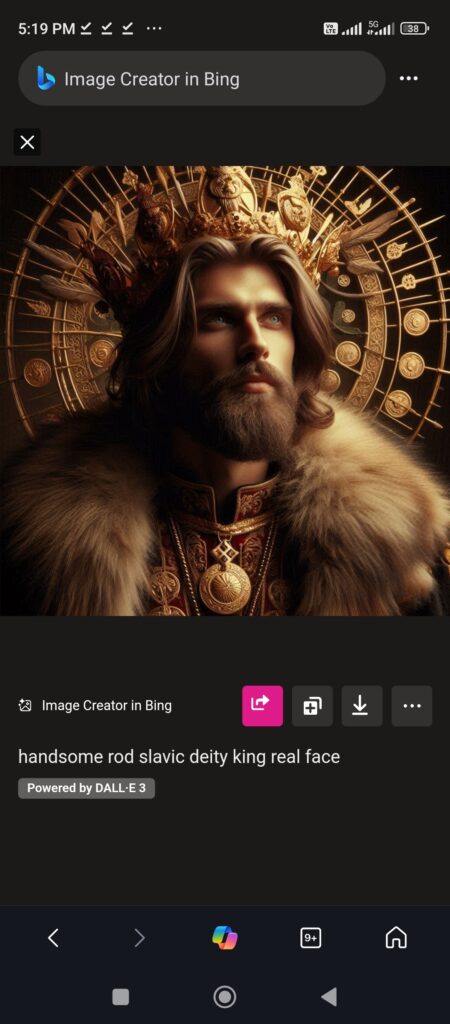
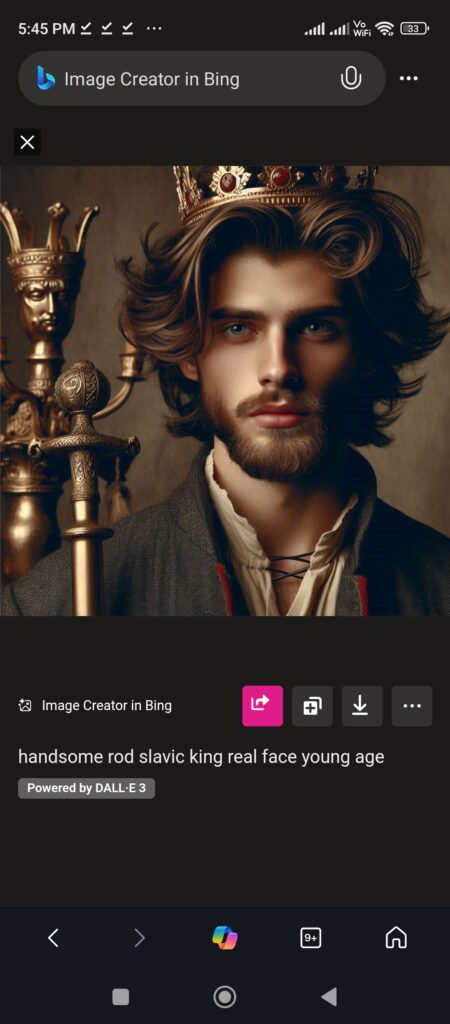
Rod consider first and eternal Deity, So was he also the same androgynous Dying and Rising authority, because as we saw Previously this androgynous dying and Rising authority in different civilization known as a First Man and Ruler of Eternity, as well as According to Bhagvad-Gita Verse 4.6 Dying and Rising authority face remains the same in every birth, Let’s Test hypothesis was he the same androgynous dying and Rising authority?
Lets Test Hypothesis- Face comparison of Rod with another possible birth of this androgynous dying and Rising authority
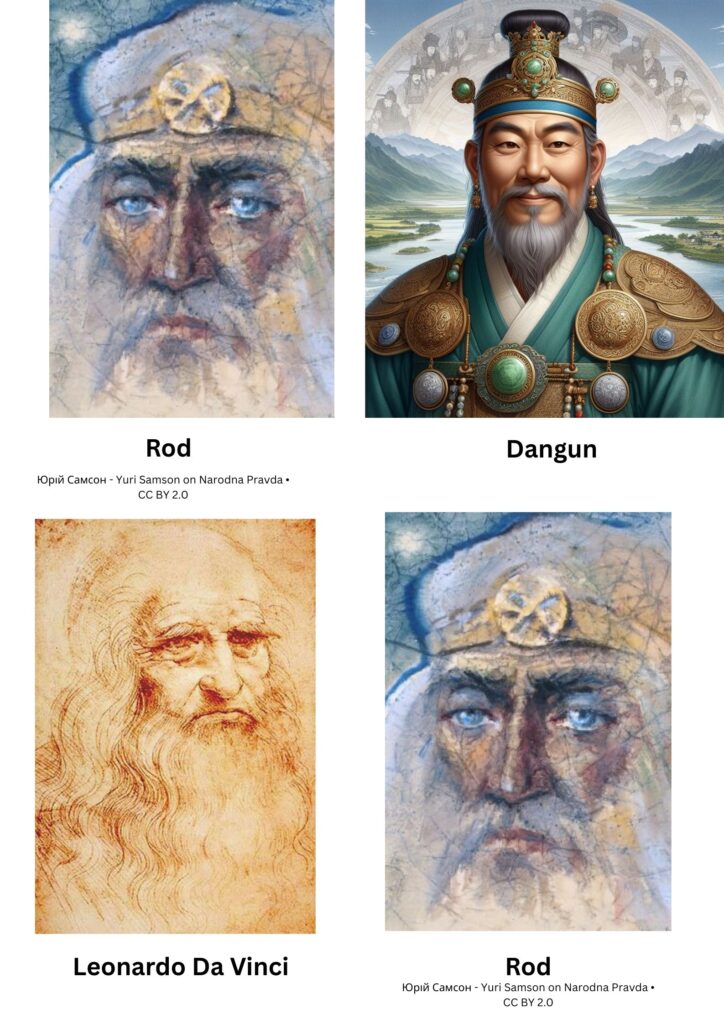
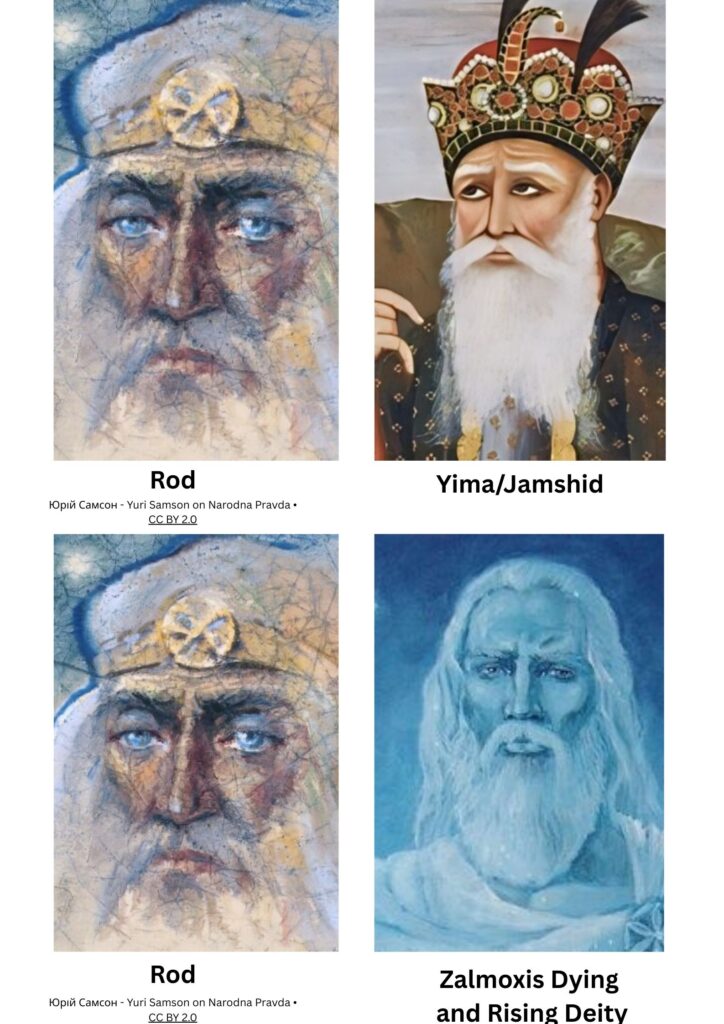
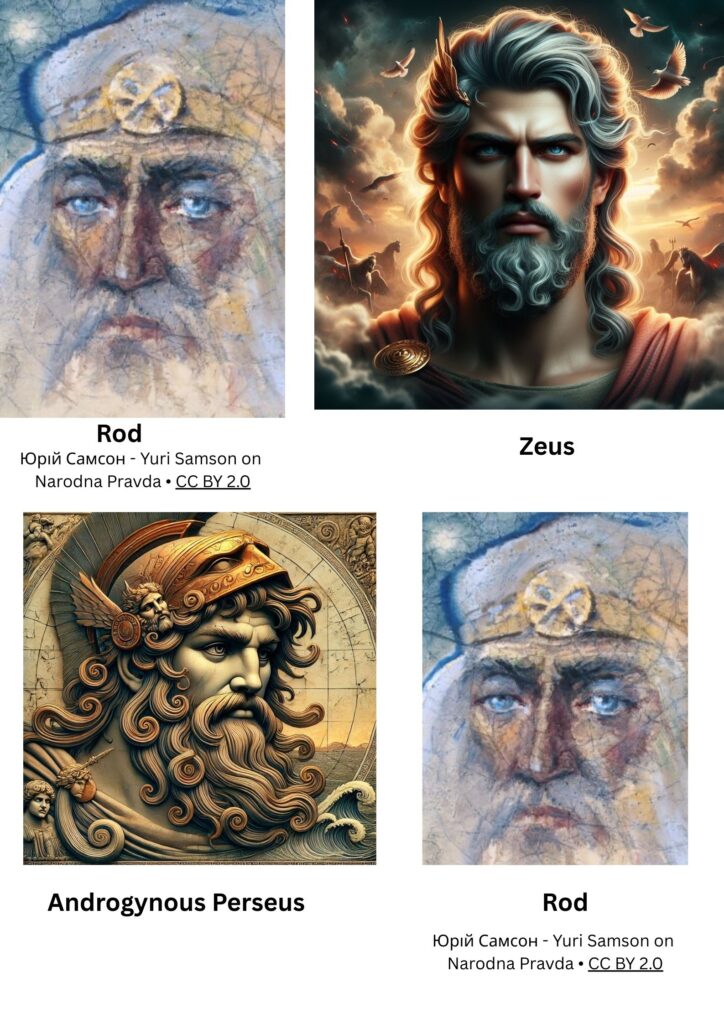
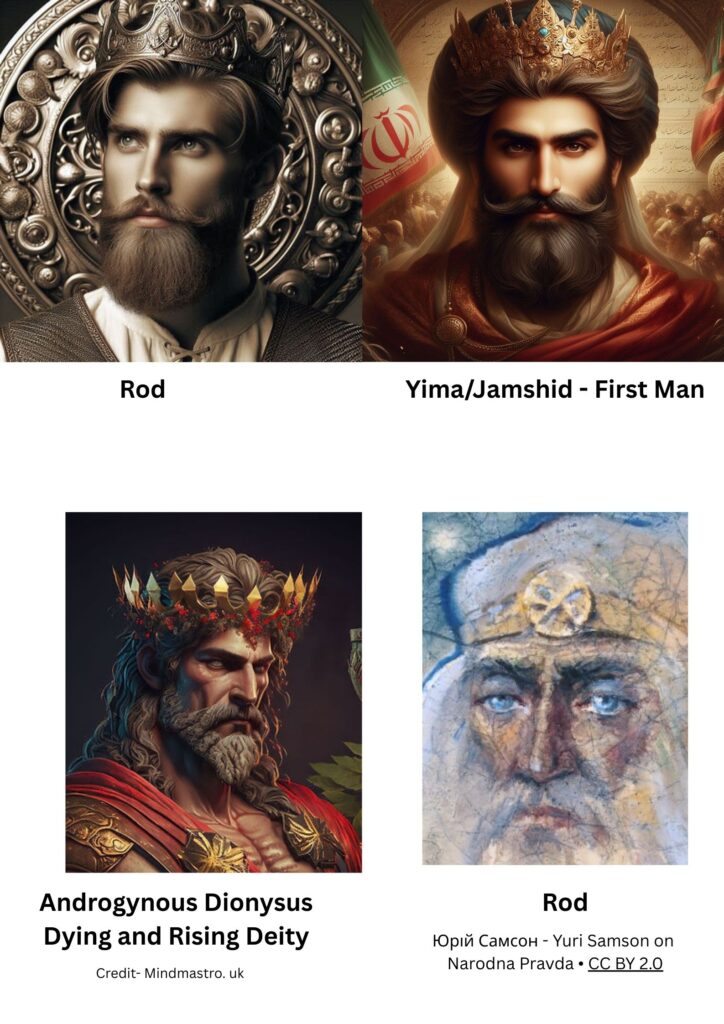
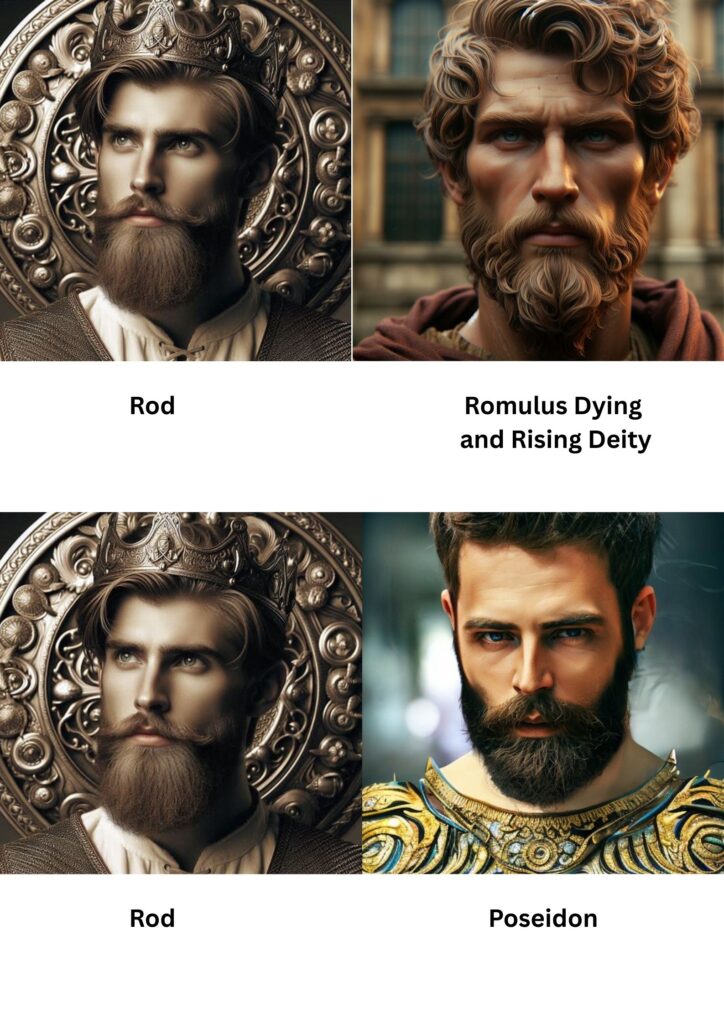
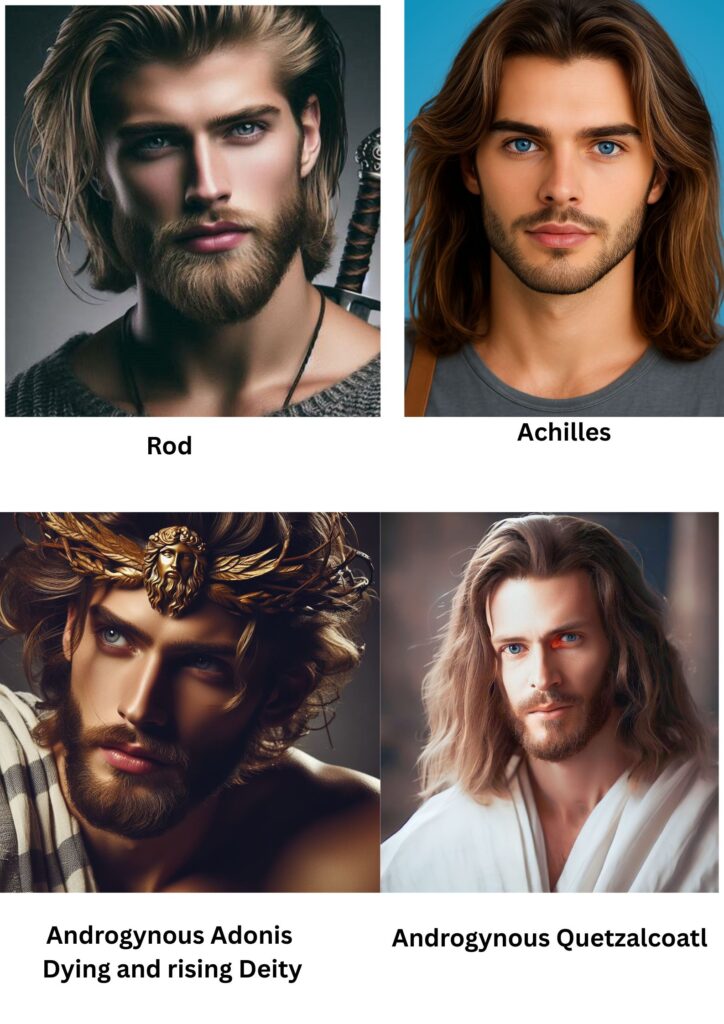
Unsolved Mystery – Rod Deity face Match with another possible birth of this androgynous dying and Rising authority, was he the same singular authority, is yet remains and unsolved mystery.
536 AD Distrub Sun & Spread of Plague
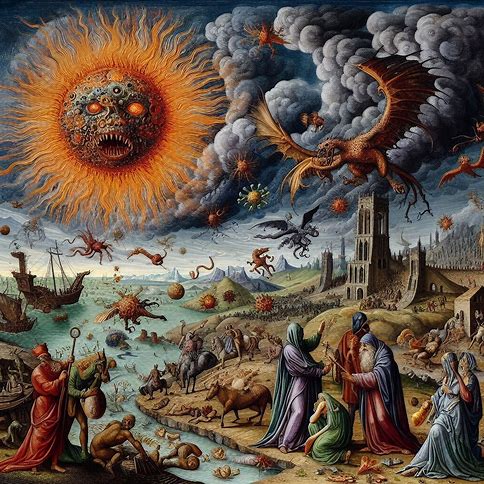
the worst year was AD 536, the beginning of the Terrible Period in the Northern Hemisphere. A mysterious fog enveloped Europe, the Middle East, and parts of Asia, turning day into night. “The sun has given forth its light without brightness like the moon all this year,” wrote the Byzantine scholar Procopius.
The lack of sunshine caused temperatures to plummet, colder than at any time in the previous 2,300 years, leading to crop failures and disease. Snow fell in China during the summer, and the Irish chronicles recorded a “bread failure of 536-539”. In 541 bubonic plague.
Thor, Deity of Light and Thunder ( worshipped between 700 CE to 1100 CE )
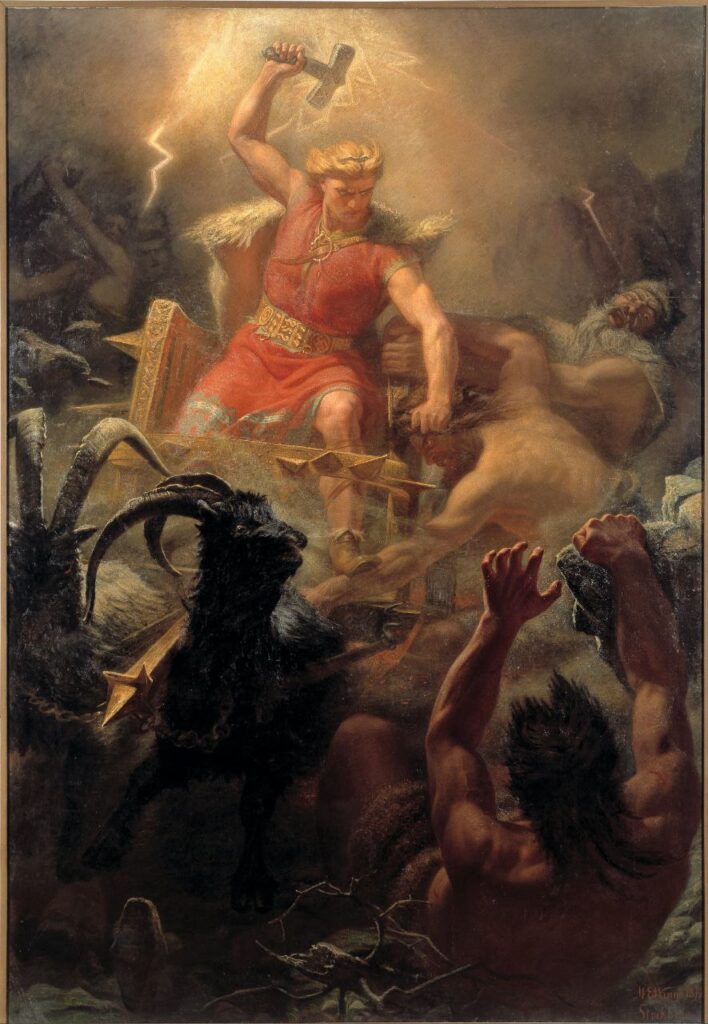
Thor is a hammer-wielding deity associated with lightning, thunder, storms, sacred groves and trees, strength, protection of mankind, sanctity, and fertility. lord of the land
● Sif is the goddess of fertility in Norse mythology, Consort of thor.
● The marriage between the two is better known as hieros gamos or hierogamy, meaning “divine marriage”. in Norse mythology.
● In Germanic mythology, Thor is a hammer-wielding deity associated with lightning, thunder, storms, sacred groves and trees, strength, protection of mankind, sanctity, and fertility.
● Thor’s marriage to Sif who known as goddess of golden hair, of which we hear little in myth, seems to recall the ancient symbol of the divine marriage between the Deity of heaven and the goddess of earth,
● Lord of Asgard, Lord of Earth, Deity of Thunder, Lord of Midgard, Lord of Heaven and Earth.
● Thor is the Norse Deity of thunder, sky, and agriculture. chief of the deities and husband of the fertility goddess Sif.
Equivalent to Zeus, Shango African Deity, Perun-Slavic Deity
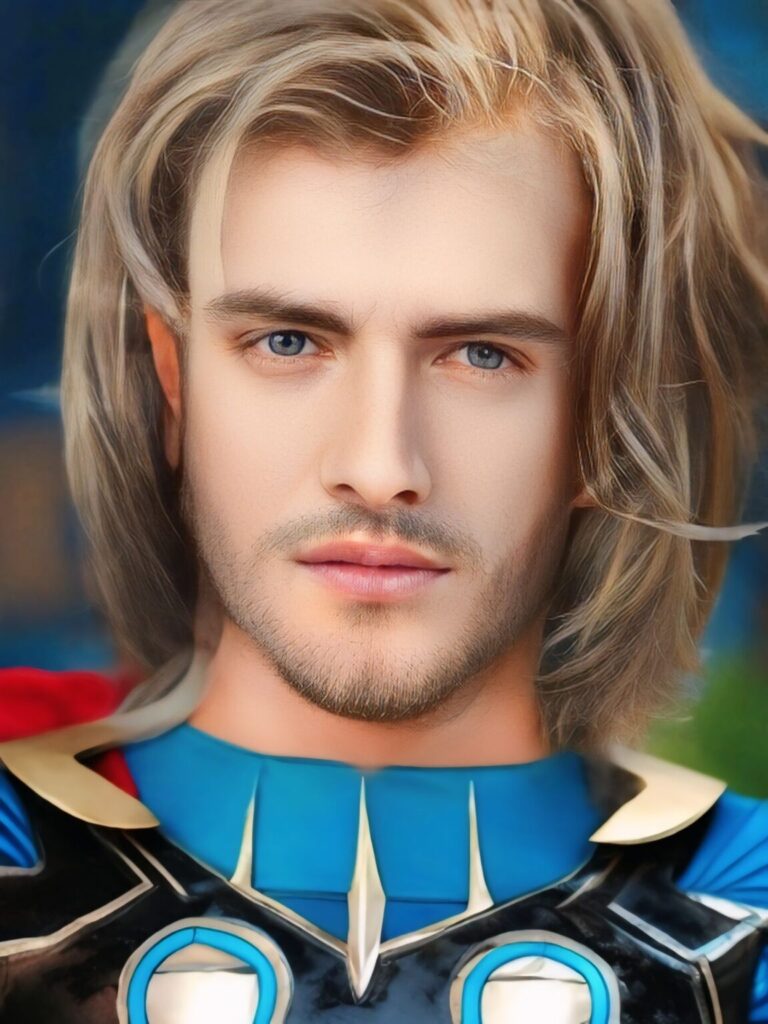
Thor Left Similar Sign
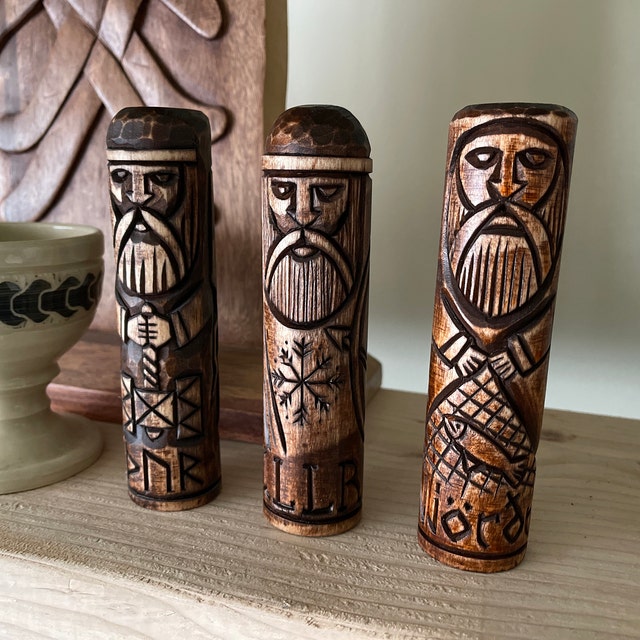
Face Comparison of Thor with another possible birth of this androgynous dying and Rising authority
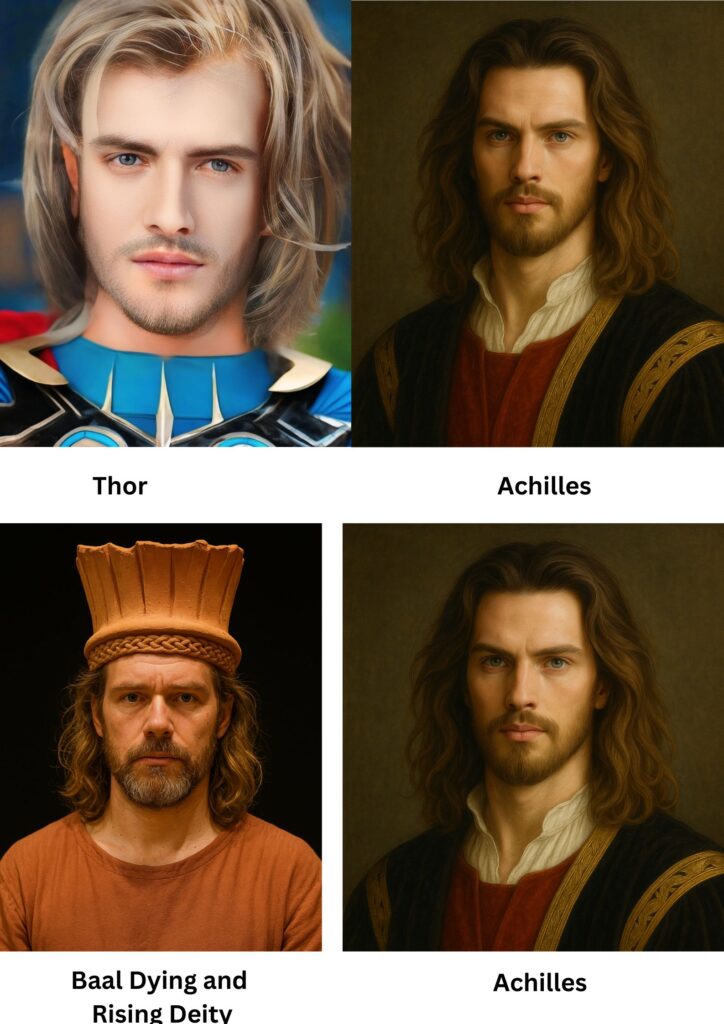
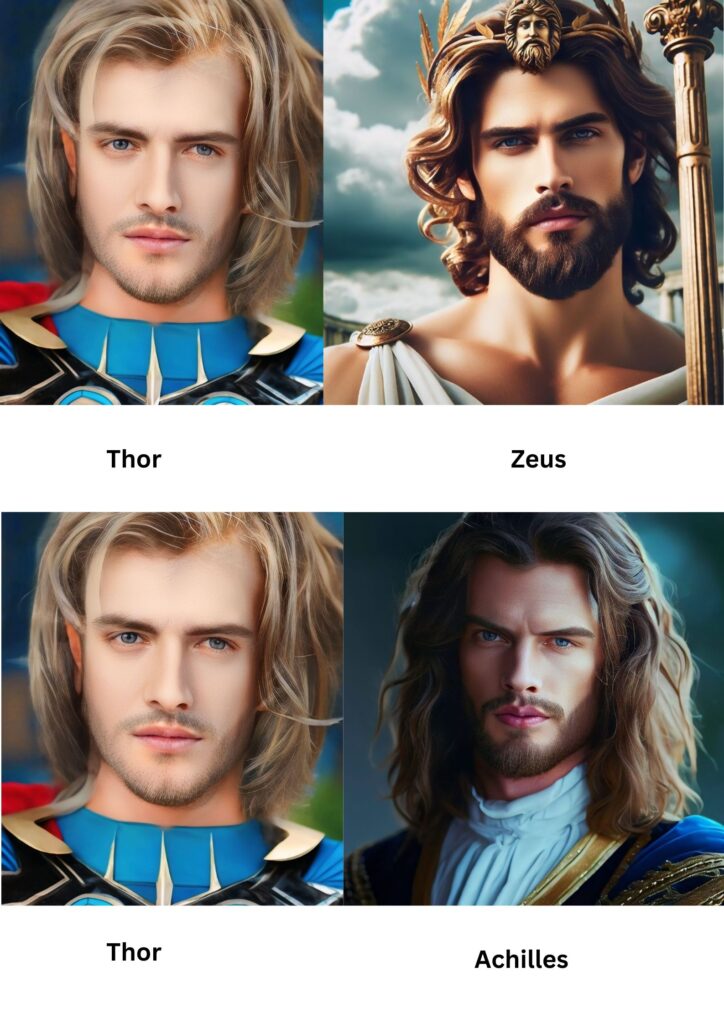
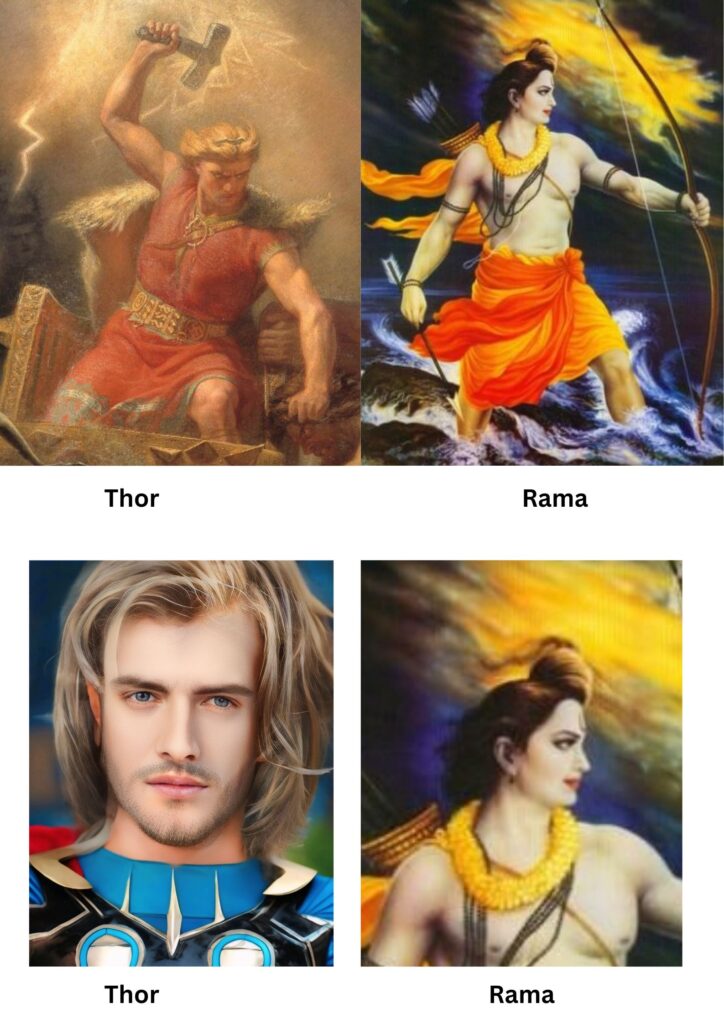
Deity of Light and Thunder always attributed to Creator of civilization Androgynous dying and Rising authority, so Thor was the same androgynous dying and Rising authority ? As well as according to Bhagvad-Gita verse 4.6 , Face of Dying and Rising authority remains the same in every birth, his face match with another possible birth of this androgynous dying and Rising authority, Was he the same Dying and Rising authority ? as well as he also left similar fertility sign like this authority left in previous time period, is yet remains and unsolved mystery
Perun, Deity of Light and Thunder
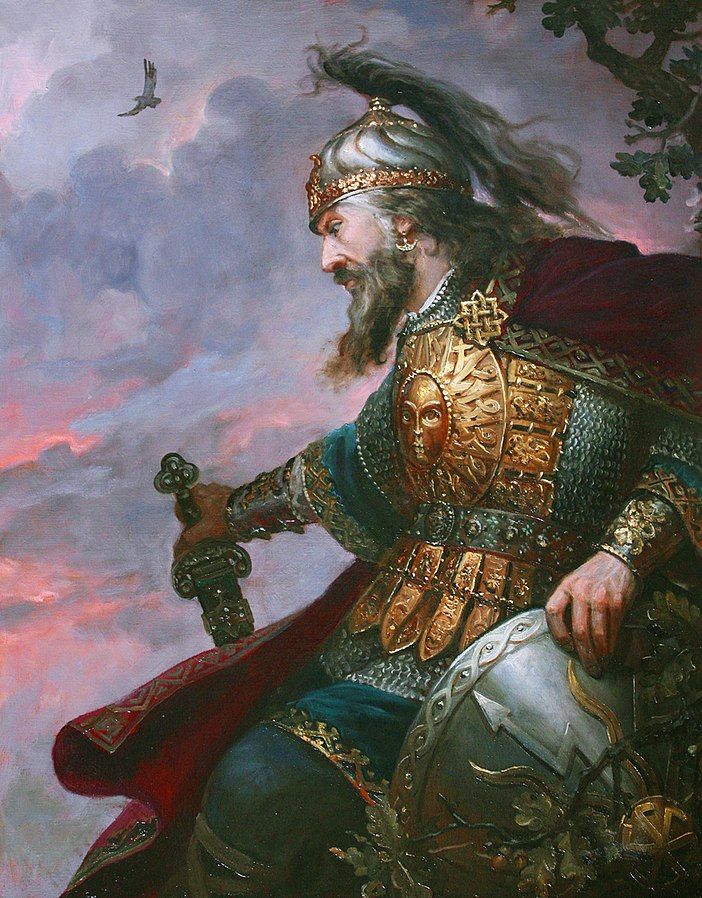
Credit- Andrey Shishkin CC BY SA 1,2,2.5, 3.0,4.0 https://a-shishkin.ru/search/?quote=%D0%9F%D0%B5%D1%80%D1%83%D0%BD+%D0%93%D1%80%D0%BE%D0%BC%D0%BE%D0%B2%D0%B5%D1%80%D0%B6%D0%B5%D1%86
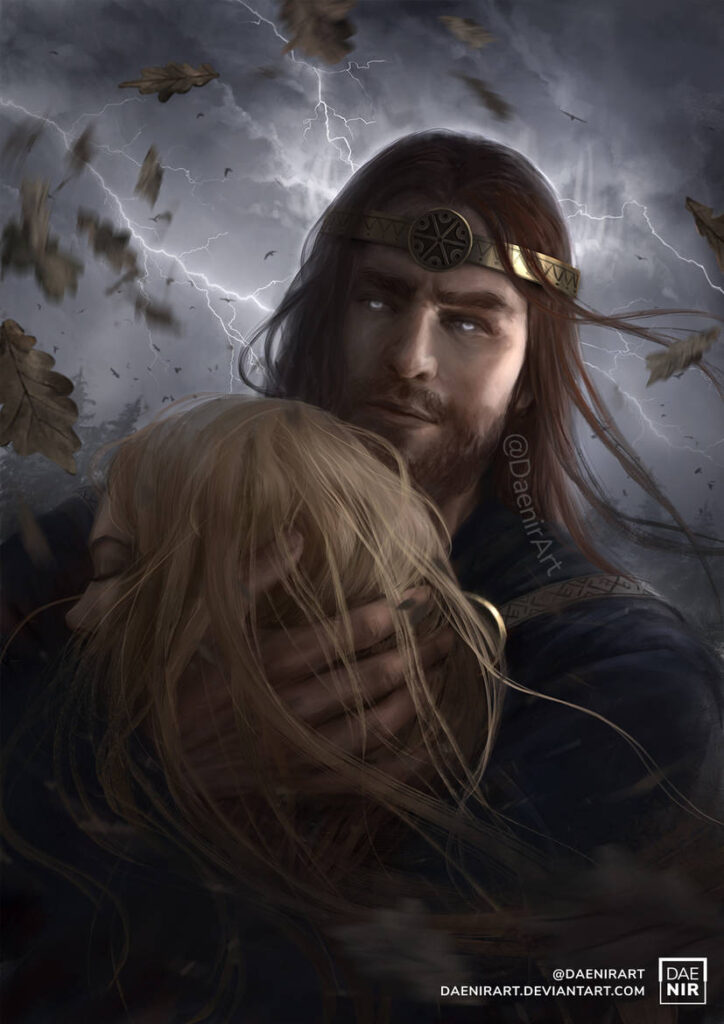
Copyright © devian art https://www.deviantart.com/daenirart/art/Perun-and-Vesna-860298782
Perun, the Slavic Deity of thunder and lightning, was revered as the supreme deity in the pre-Christian Slavic pantheon. His presence in history is traced as far back as the 6th century CE, with mentions in Byzantine texts and treaties of the Kievan Rus’
In 907 CE, Prince Oleg of Kievan Rus made a peace treaty with Byzantium. To seal the agreement, his warriors swore oaths by their weapons and by Perun, the Deity of thunder.
This ritual was repeated in 945 CE by Prince Igor, showing that invoking Perun was a formal and sacred way to confirm political agreements.
⚡ Why Perun Was Chosen as the chief deity of war and law ?
Perun symbolized strength, justice, and divine oversight.Swearing by Perun meant invoking cosmic order and accountability—breaking the treaty would risk divine wrath.
🏛️ Cultural Impact– These treaties are among the earliest written records of Slavic religious practices.They highlight how pagan beliefs were deeply intertwined with governance and diplomacy before Christianization.
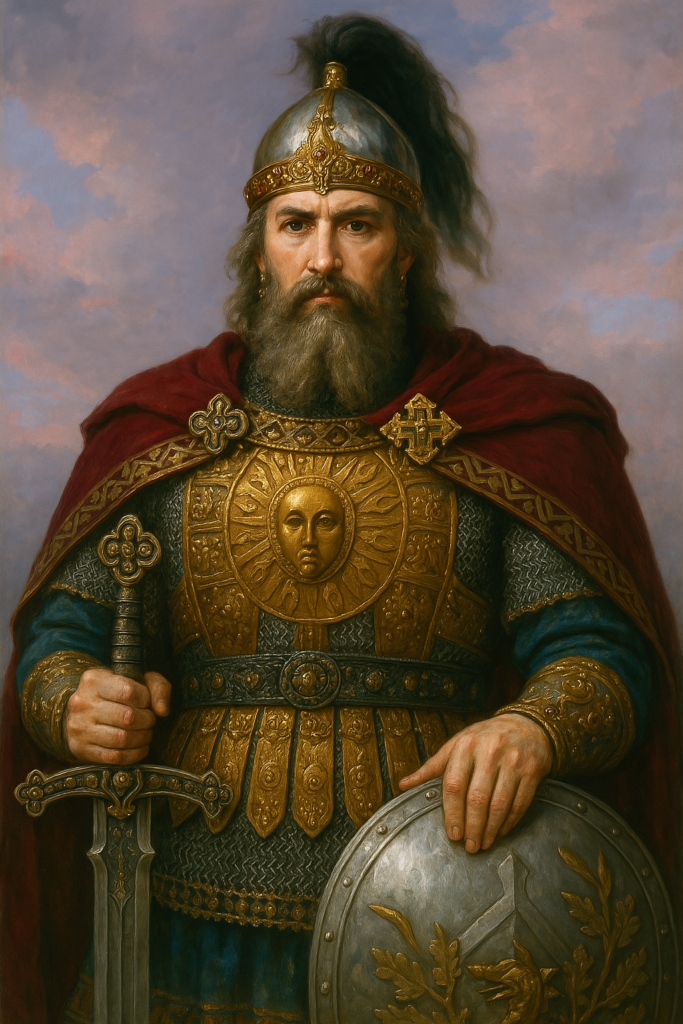
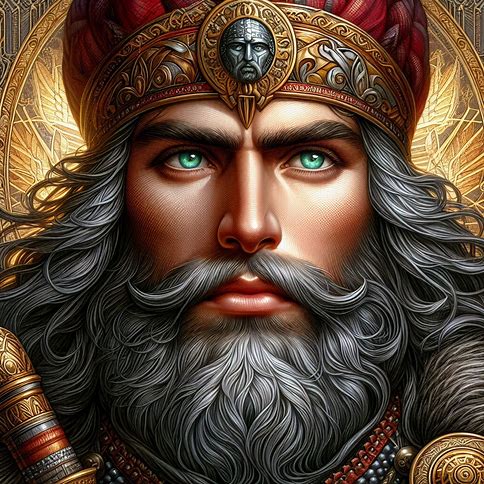
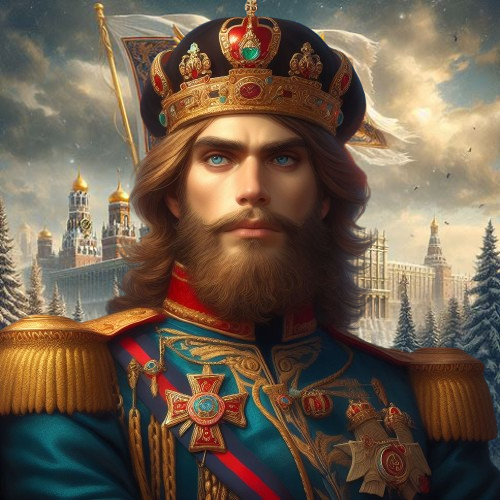


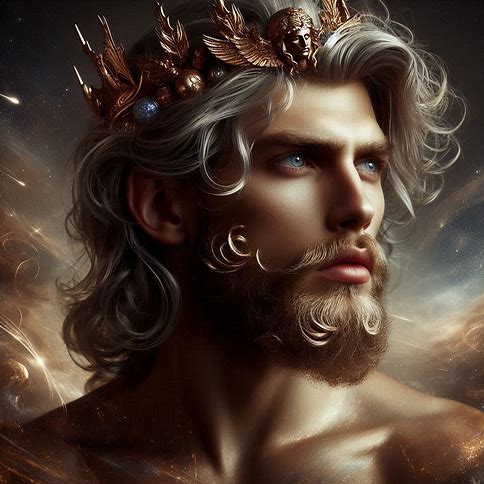
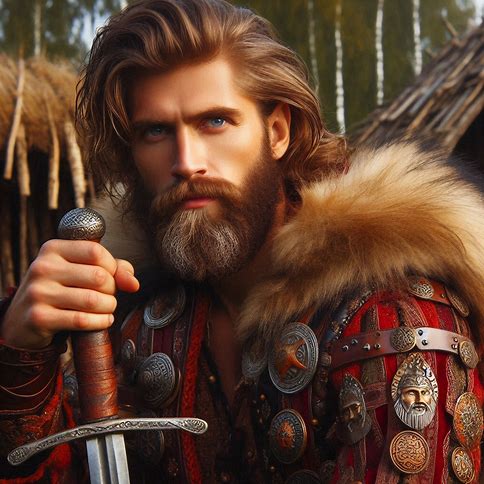
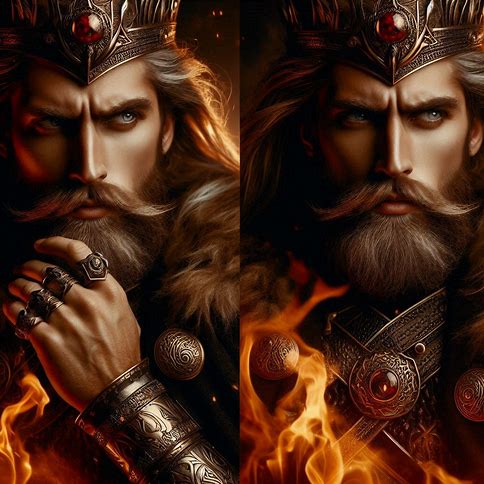

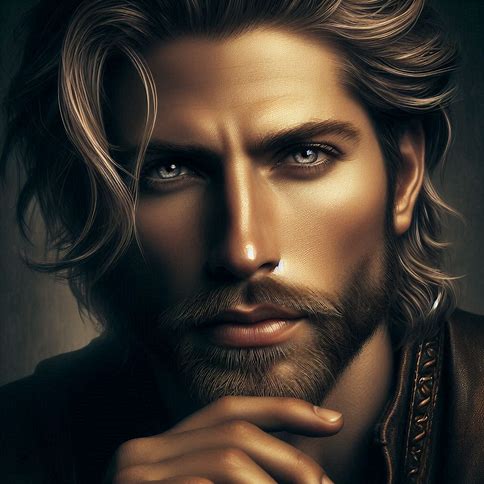
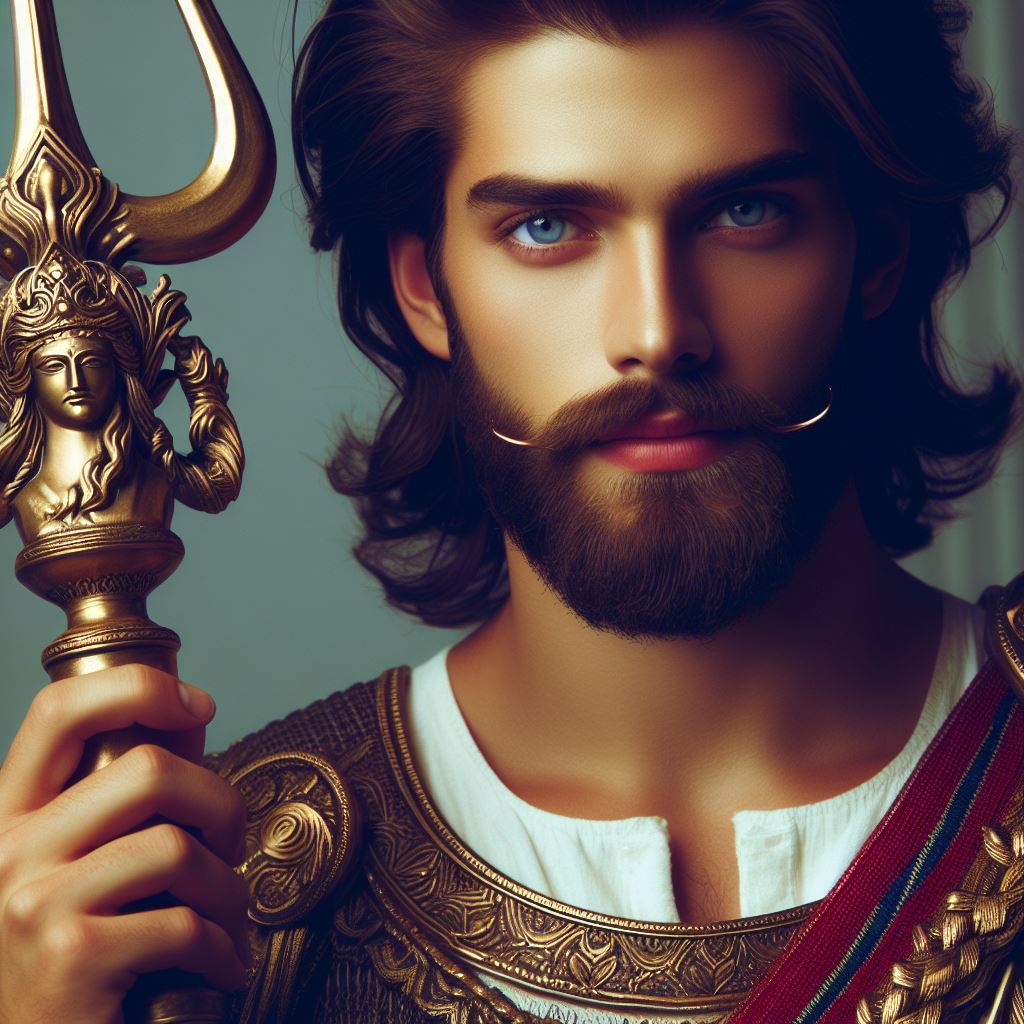

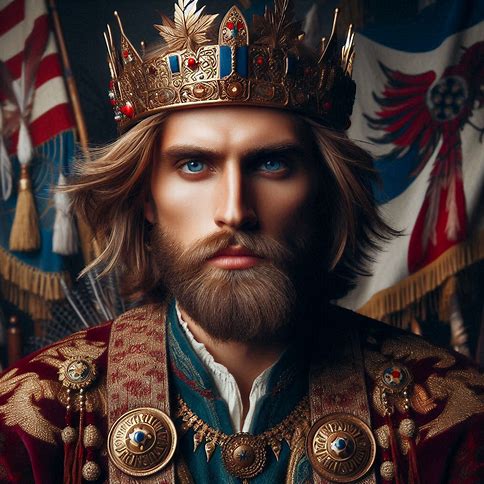
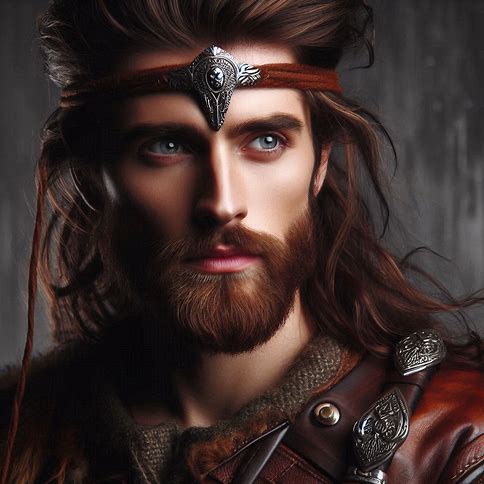
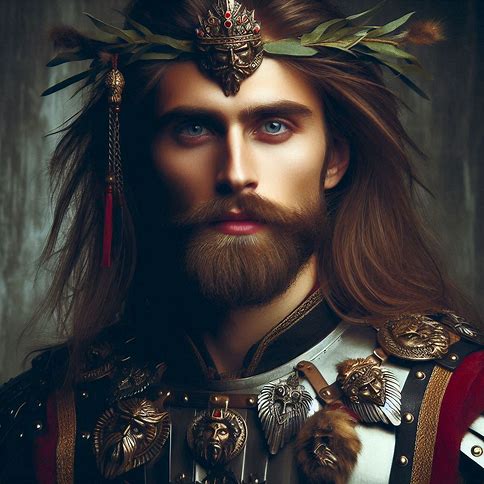
Perun face reconstruction through Microsoft Bing AI software
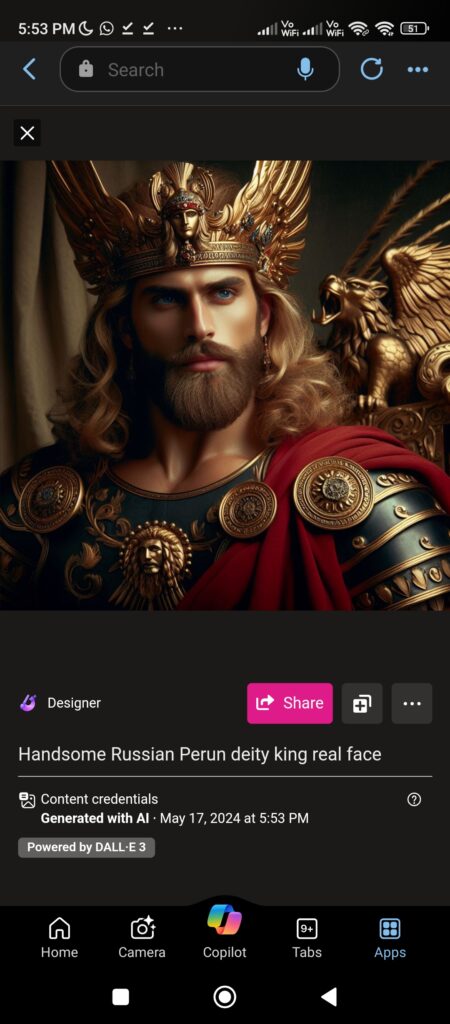
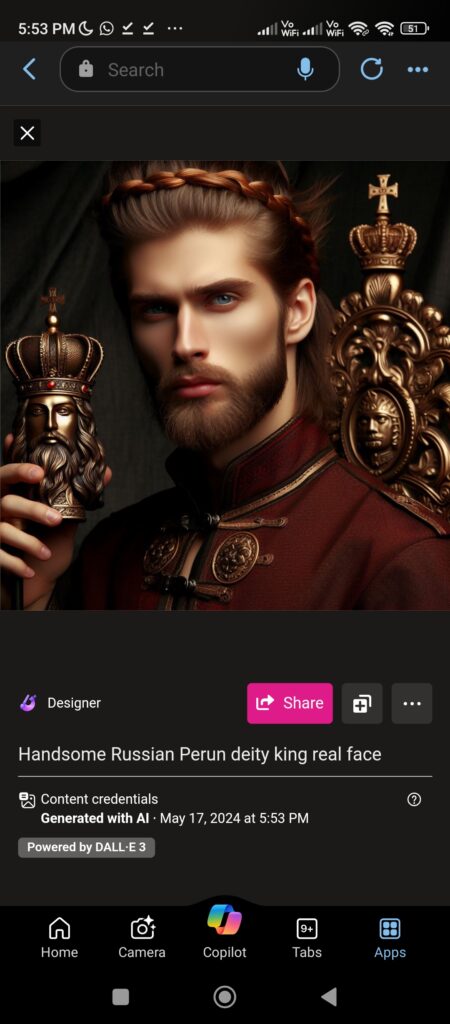
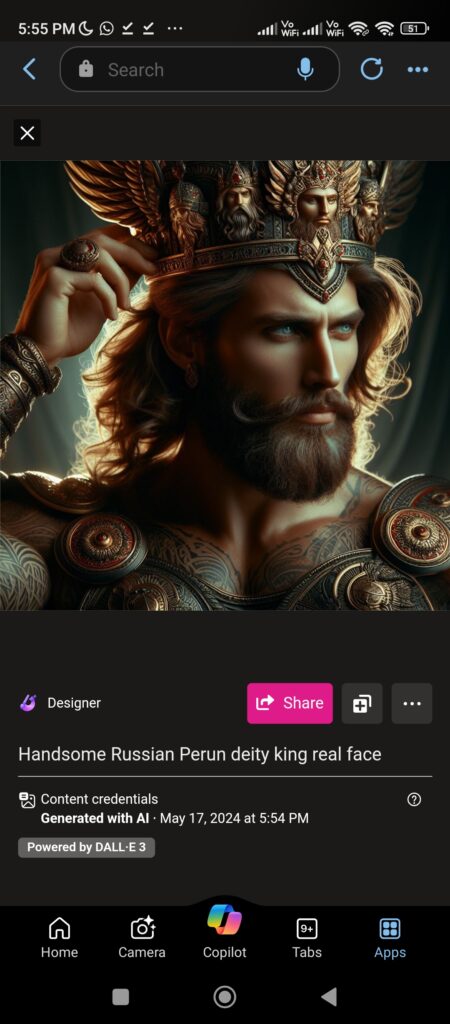
Deity of Light and thunder always associated with this Creator of civilization Androgynous Dying and Rising authority, and Perun known as a Deity of Light and Thunder, was he the same androgynous dying and Rising authority,
according tto Bhagvad-Gita Verse 4.6, The face of Dying and Rising authority remains the same in Every birth, Lets check our hypothesis by comparing face of Perun with another possible birth of this androgynous dying and Rising authority.
Lets Test the Hypothesis
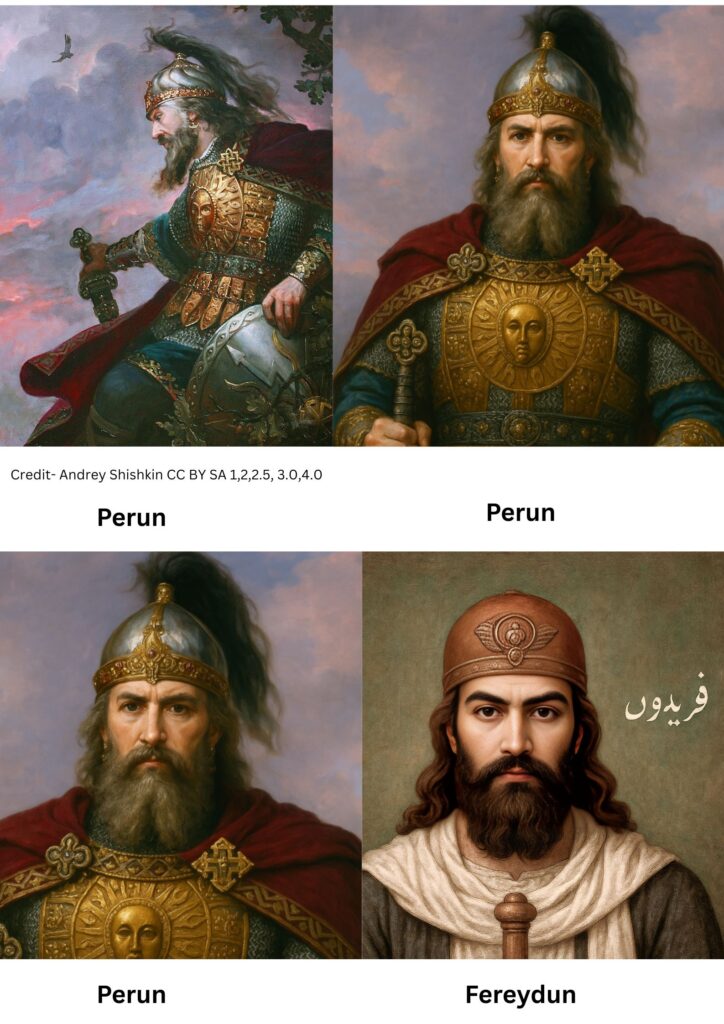
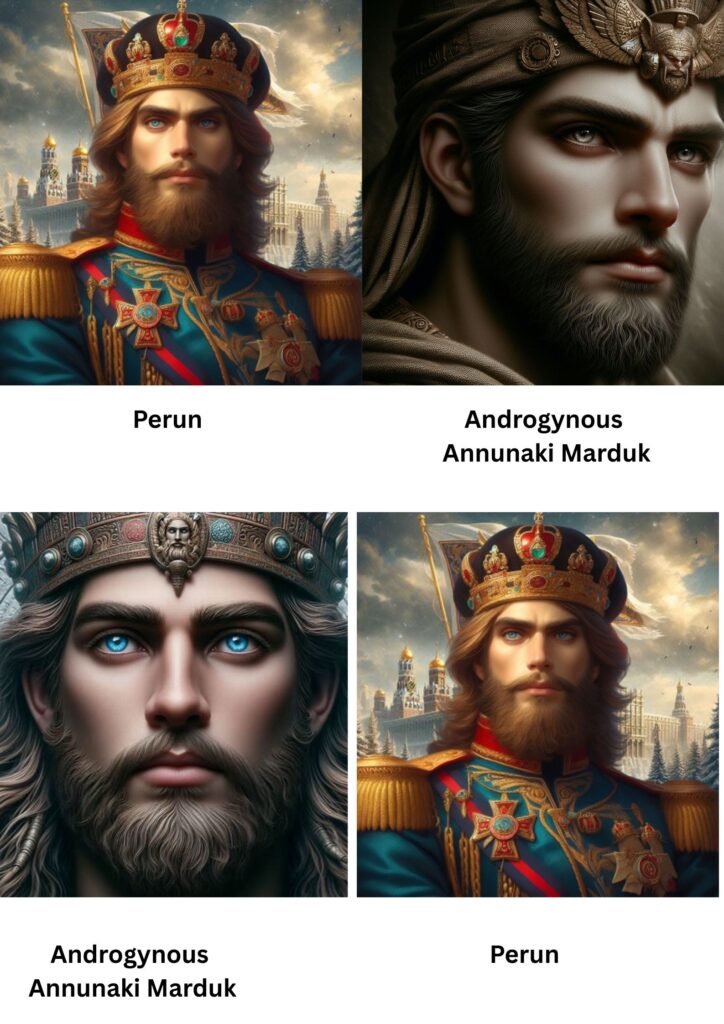


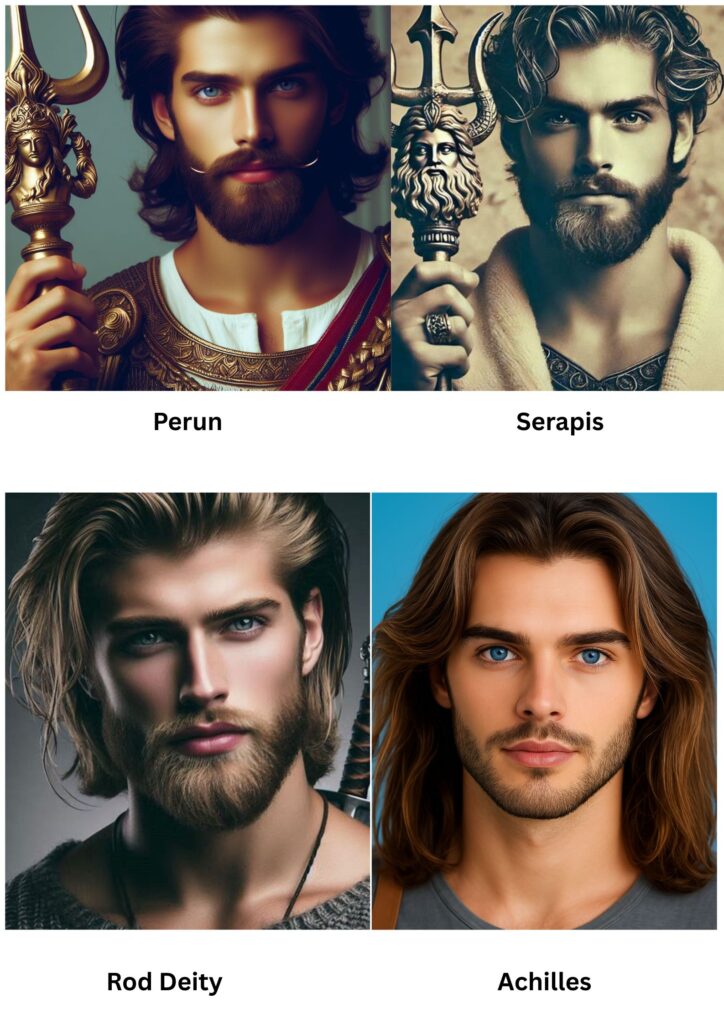
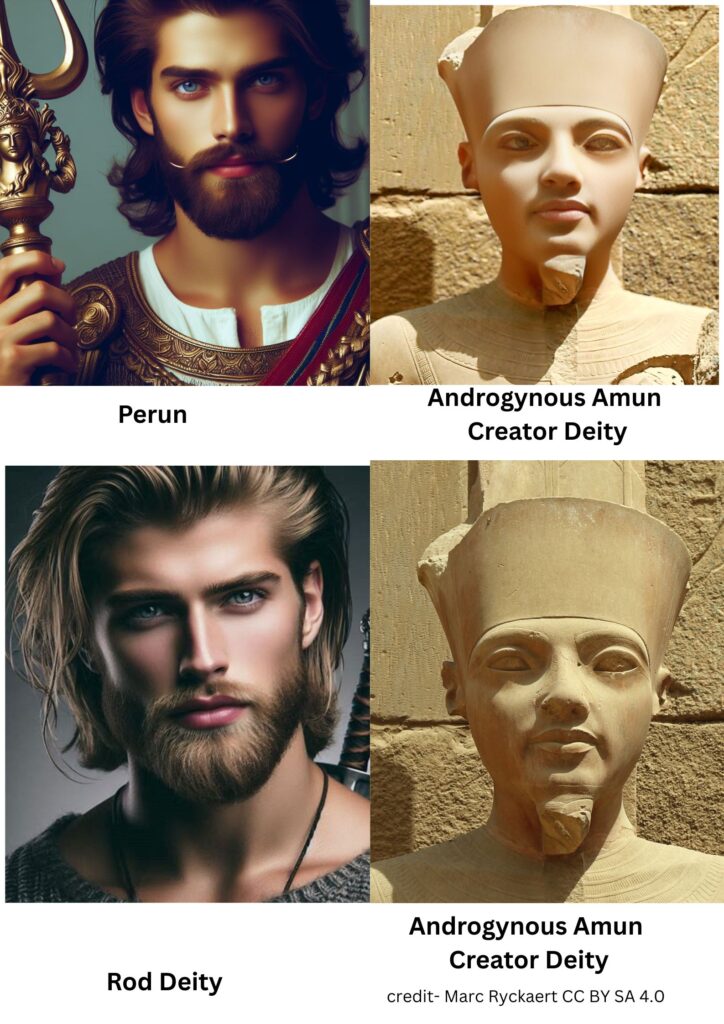
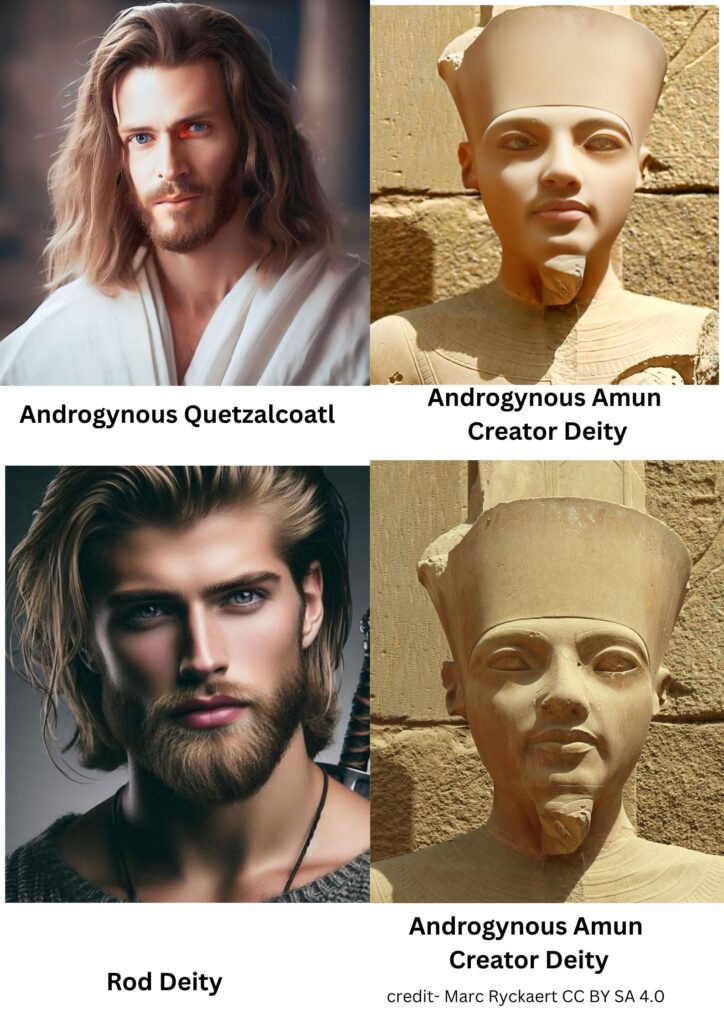
Perun, Slavic Deity of Light and Thunder, his face Match with another possible birth of this Androgynous dying and rising authority, is yet remains and unsolved mystery.
Taycanamo -Founder of Chimu Civilization
Taycanamo, the legendary founder of the Chimú, was believed to have emerged from the sea after being born from a mythical golden egg. He is remembered through stories where he calmed the sea, saving his people from a terrible storm, and taught them advanced agricultural techniques that ensured their survival and prosperity. The Chimú Empire, a successor to the Moche culture (100 CE to 800 CE), rose to prominence in present-day Peru around 900 CE. This period marked the inception of the Chimú civilization, during which the Chimú laid the groundwork for their political, economic, and cultural systems. Between the 12th and 13th centuries, the Chimú Empire reached its height, distinguished by advances in agriculture, architecture, and art.

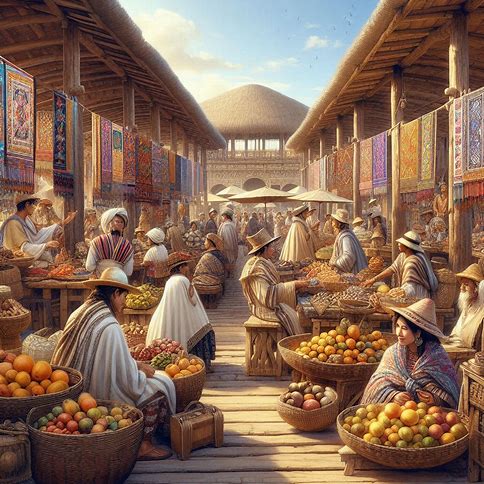
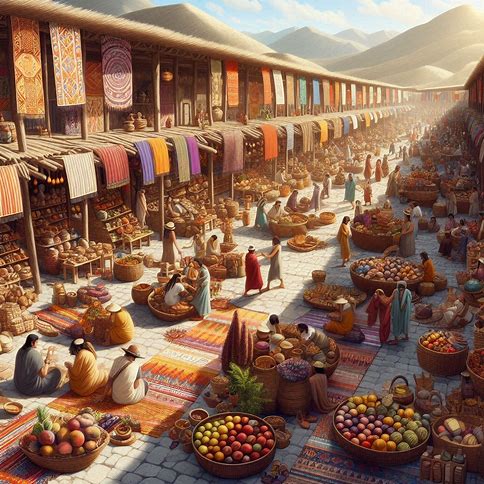
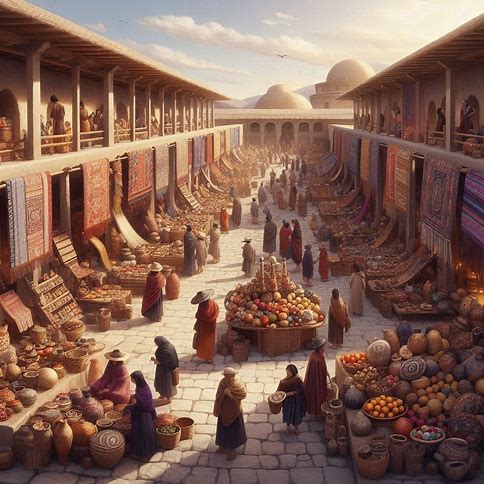
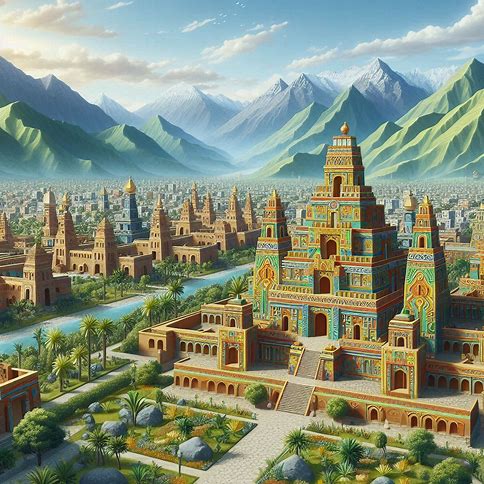
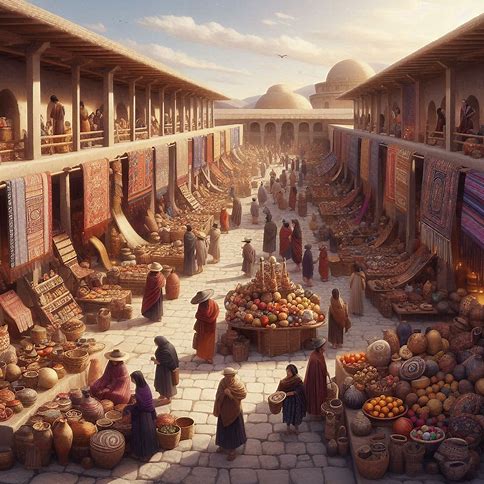
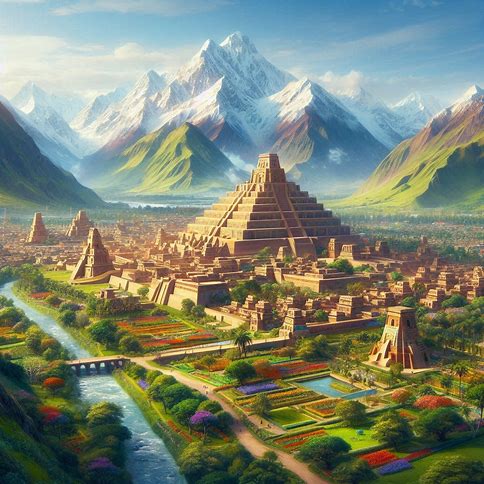
Taycanamo – Founder of Chimu Civilization left Similar Sign
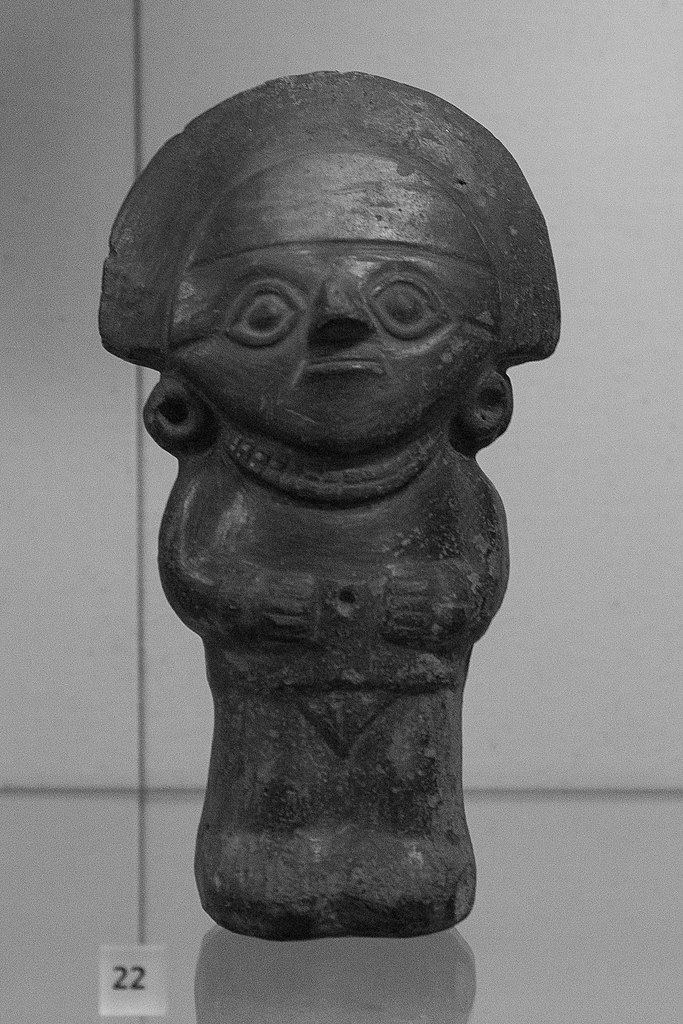
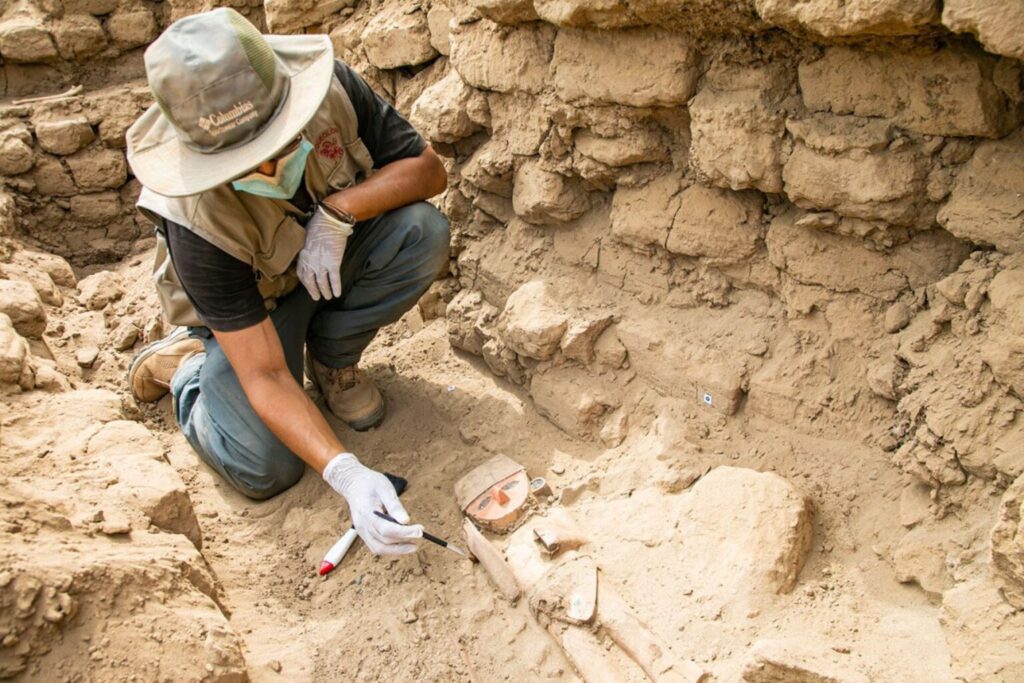
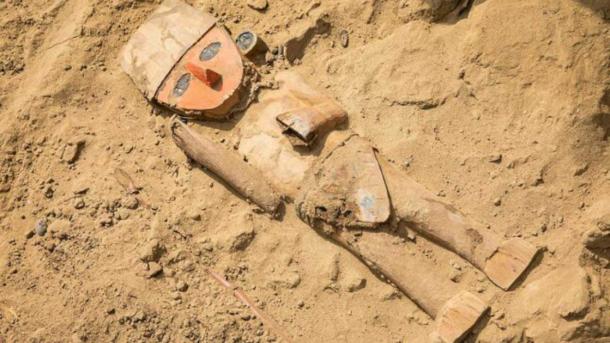
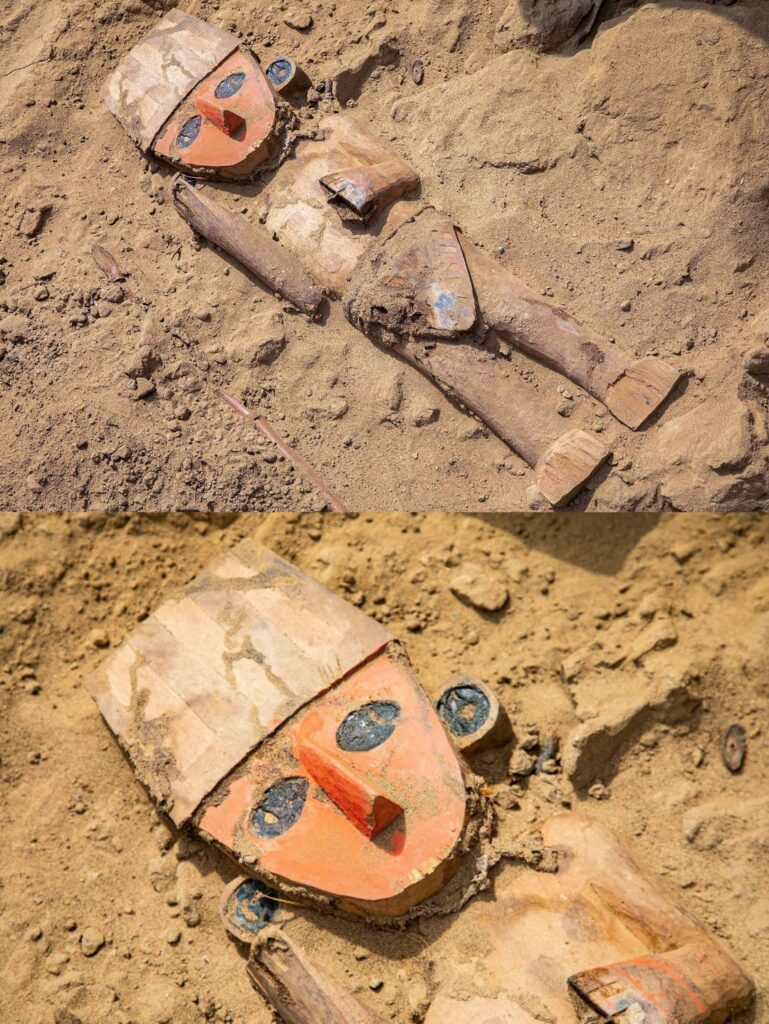
Taycanamo came from sea and established chimu Civilization and left similar closed mouth fertility sign after teaching knowledge of the civilization, like this creator of civilization dying and rising authority possible birth, was he the same androgynous dying and rising authority is yet remains and unsolved mystery.
Chachapoyas, Peru

Image credit- BluesyPete CC BY SA 3.0
Sulawesi Island, Indonesia

Credit-Tropenmuseum/CC BY SA 3.0
The BadaValley is located on the island of Sulawesi, Indonesia, within the Lore Lindu National Park.
● Alien Myths-Its main attraction is more than 400 megalithic sculptures scattered all over the place, 30 of which have anthropomorphic representations, which some compare with the moai of Easter Island, but even to otherworldly visitors.
● They were discovered by western archeologists in 1908.
Fang Statue

Credit-Mary Harrsch CC BY SA 3.0
Naylamp – Founder of Sican Civilization –850 AD
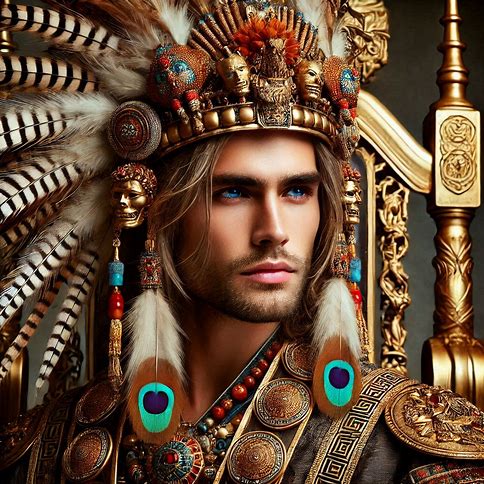
According to the legend of Naylamp, long ago, a network of boats (or rafts, according to some records) came from the north to the shores of what is now San Jose Bay. Boats were stranded along the Lambayeque River.
● and a man named Naylamp, adorned with gold ornaments and a hat made of hundreds of unusual feathers, reached the beach. He was accompanied by a large number of people, including nobles, scientists, musicians, Engineers, cooks, and craftsmen, among others. Naylamp explained to those he met that he had traveled from distant parts of the sea to establish the Sican (Sicán), meaning “house of the moon” in the ancient Lambayeque language.
● The people of Moche were deeply impressed by this mysterious man and bowed down before him.
Naylamp Left Similar Sign on Sican Artefacts

public domain
Sican Civilization -12th Century
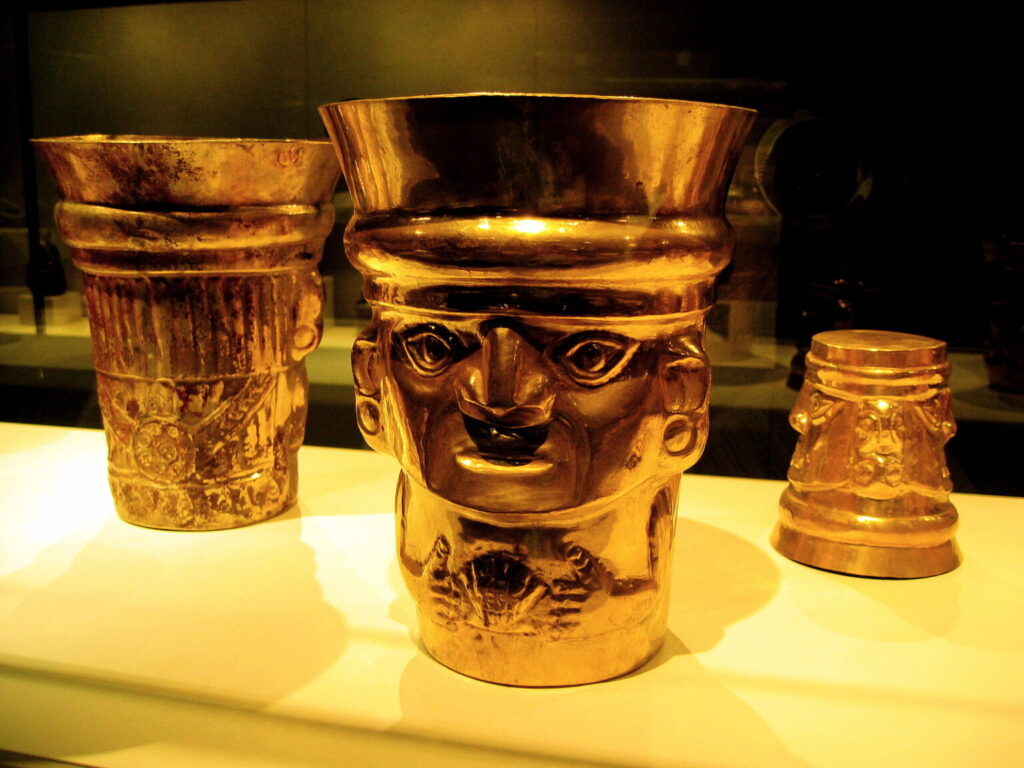
Credit- Rosemania CC BY SA 2.0 flicker
Androgynous Quetzalcoatl – Founder of Aztec Civilization
You need to go back to the beginning of Mesoamerica civilization to trace the history of the worship of Quetzalcoatl.
The ancient Olmec civilization continued from about 1200 to 400 BC and had a major influence on all that followed.La Venta Monument 19, Olmec’s best-known stone work, depicts a man sitting in front of a feathered serpent. Despite the fact that the idea of a serpent with divine feathers has long been known, many historians have concluded that the religion of Quetzalcoatl did not appear until the end of the Common Era, centuries later.
The feathered serpent was worshipped as a spirit Deity, water Deity, and a morning star with a body of flesh. In many cultures, the story of the feathered Serpent or the Tiny Series goes like this: he comes, teaches, walks, and announces his return.
● The Androgynous Quetzalcoatl taught his people mathematics, medicine, astronomy, writing, jewelry making, and weaving. He is believed to have invented a chocolate drink, to have introduced a 52-year-cycle calendar, and the canons of music and dance.
The archaeological evidence revealed that rather than growing slowly and painfully as is typical of human societies, Ancient Egypt’s civilization, like the Olmecs’, emerged fully developed all at once.
Among other things, this theory sheds light on the mysterious fact that the Egyptians and Sumerian people of Mesopotamia appear to have worshipped virtually identical lunar deities who were among the oldest in their respective pantheons (Thoth in the case of the Egyptians, Sin in the case of the Sumerians)
What is particularly remarkable is that the Aztecs did not take credit for the high level of civilization evidenced by these and many other wonders of their flourishing empire. Instead, they frankly admitted that their entire system of knowledge came to them in one piece, as an inheritance from the Androgynous Quetzalcoatl and his companions, those who were ‘the first inhabitants of this land and the first to come here. the part called the land of Mexico… those who first sowed human seed in this land
Quetzalcoatl is part of Mesoamerican literature and is a deity whose name comes from the Nahuatl language and means “winged serpent”.
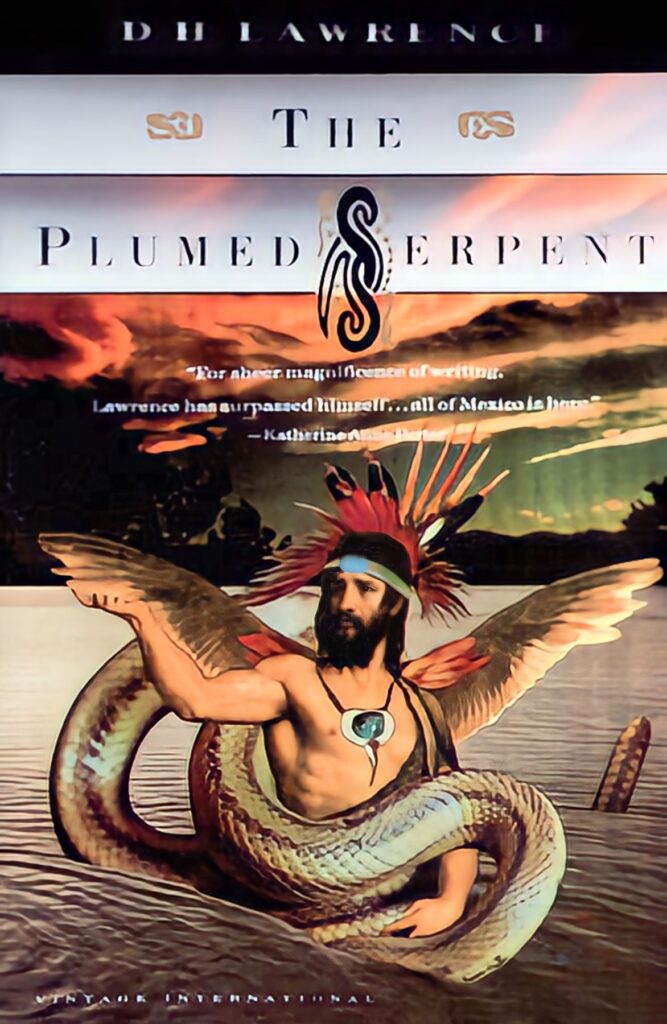
Book by D. H. Lawrence
It was during this time that the deity is known as “Quetzalcoatl” to his Nahua followers. In the Maya region, it was almost equal to the Kukulkan and Gucumatz, the words also translated as “winged serpent” in various Mayan languages.It is noteworthy that the quetzal is a small bird with bright emerald green feathers, which is highly valued in Native American cultures. Quetzal is an ancient symbol of the love of freedom. This bird does not live in captivity.
The historic Quetzalcoatl was possibly born around AD 947. His father, Mixcoatl, was a ruler of the Toltecs. He changed into at the beginning named Ce Acatl Topitzin, meaning “Our Prince Born on Ce Acatl,” the latter being a crucial Toltec holiday.
His delivery became at once preceded by means of a horrendous circle of a relatives tragedy, the father having been deposed and murdered by using a jealous brother named Ihuitmal. The unborn infant’s pregnant mother, Chimalma, fled to Tepoztlan. before demise in childbirth, Chimalma declared that her little one son was divinely conceived due to the fact she had swallowed a piece of blue-green jade.
According to legend, Quetzalcoatl was abandoned by his mother at birth, for she was ashamed she had given birth before being remarried. Reared by his grandparents, Ce Acatl Topitzin became sent to the non-secular college at Xochicalco. There he so impressed teachers together with his knowledge and piety that they conferred on him the name of Quetzalcoatl. meaning “plumed serpent,”
Returning to Tula, Quetzalcoatl defied his usurping uncle through burying the remains of his father with the rite to which he was entitled. He then took over as the new leader of the Toltecs and build civilization.
Source – https://www.mexconnect.com/articles/269-the-quetzalcoatl-trinity/
However, another key thing that Quetzalcoatl uniquely symbolised was the opposition to human sacrifice. In all the cultures in which he was worshipped, Quetzalcoatl was said to be against this practice. This is probably because he was considered the original ancestor of humans and therefore did not want his descendants to be sacrificed.
this story, Mictlantecuhtli prepares a death trap for Quetzalcoatl. Quetzalcoatl falls to his death, but then he revives himself to escape Mictlan, meanwhile revitalizing.
As per the Historical record, Representing the forces of darkness and predatory evil, Tezcatlipoca was said in legend to have been locked in a conflict with Quetzalcoatl that lasted for an immense period of years. At certain moments one seemed to gain the upper hand, at certain moments the other. Finally, the cosmic struggle ended when good was defeated by evil, and Quetzalcoatl was banished from Tollán. Then, under the influence of Tezcatlipoc’s Nightmare Cult, human sacrifice was reintroduced throughout Mesoamerica. Quetzalcoatl promised his followers he would return one day to overthrow the cult of Tezcatlipoca and to inaugurate a new era.
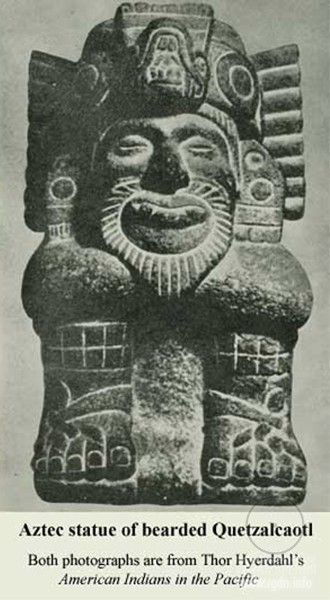
use under fair use policy
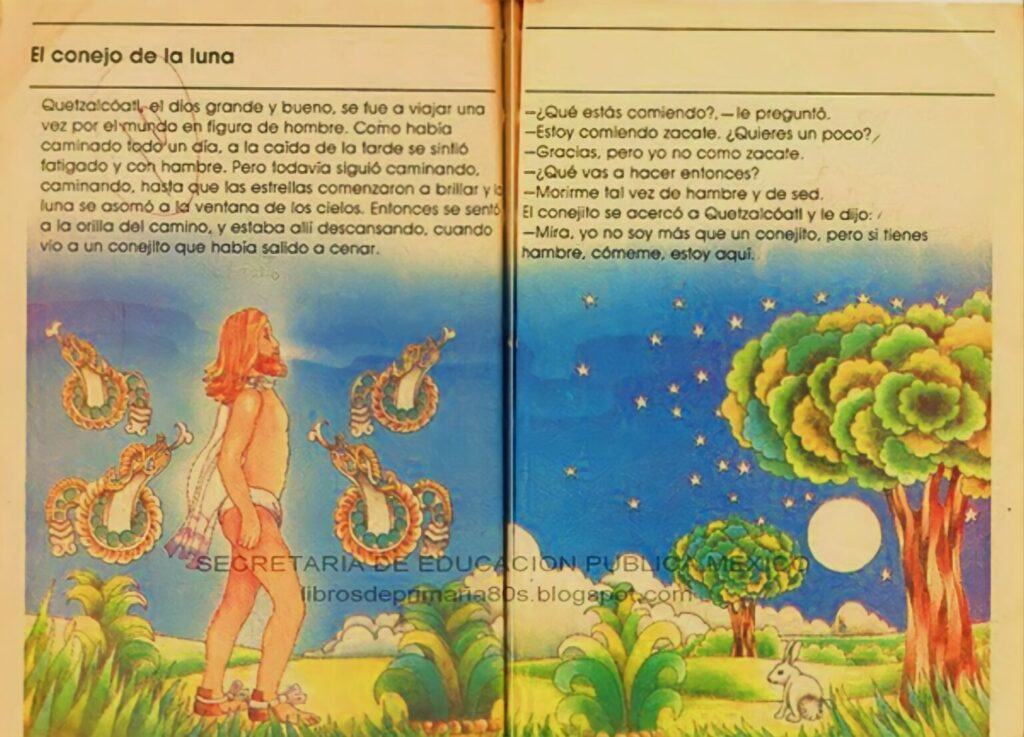
Quetzalcoatl from public school book, Mexico
Virtually all 16th-century writers wrote about Quetzalcoatl. This tradition is strong & repetitive. every school child studies Quetzalcoatl in Mexico & knows the importance of his role.Androgynous Viracocha / Kukulkan / Quetzalcoatl is one of the many enigmas of our Earth’s history.
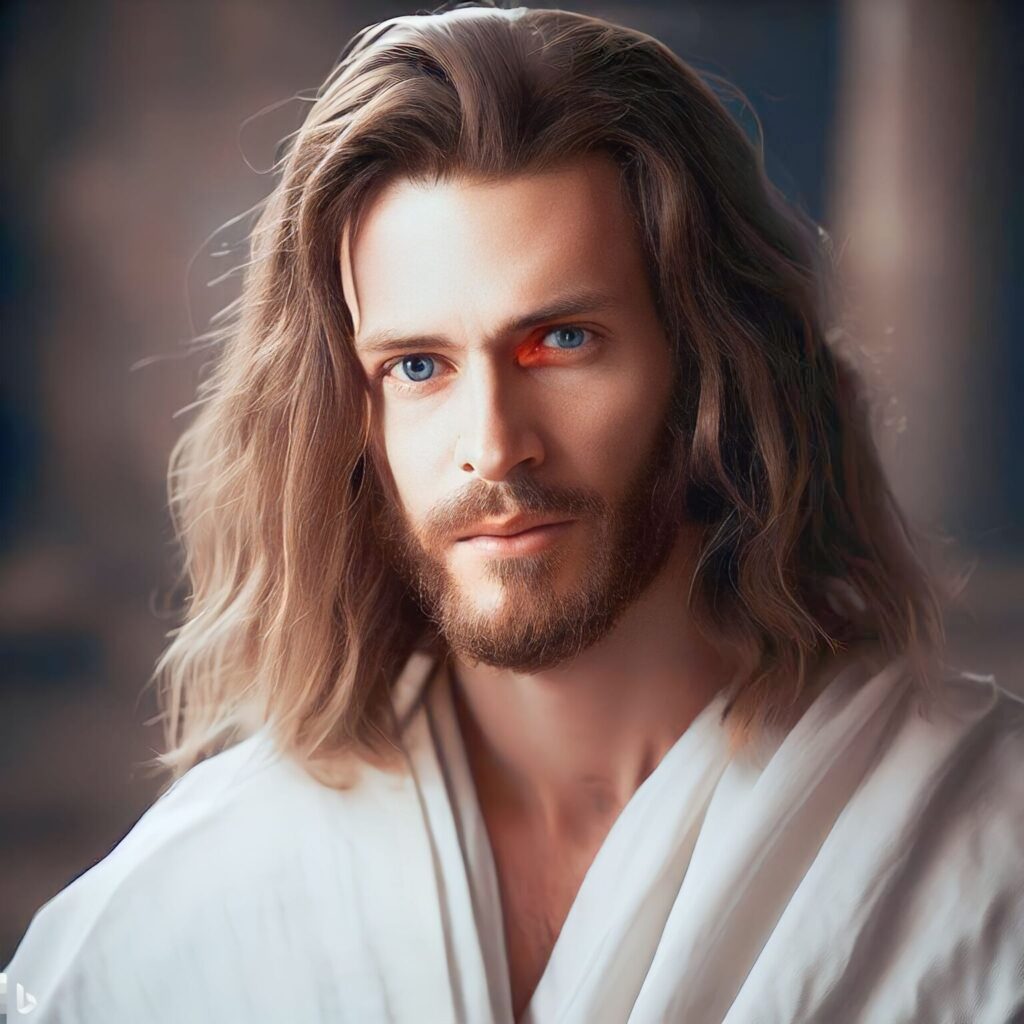
Physical Appearance– He and in some cases his ‘men’ are described as Caucasian men with beards in some texts, and as a person with white skin, facial hair, and beautiful emerald eyes in others.
Quetzalcoatl was a man of Comely appearance and serious disposition. His countenance was white, and he wore a beard. His manner of dress consisted of a long, flowing robe.”- from (Ixtlilxochitl: 45) chapter 11, exploring the lands of the book of Mormon.
All legends seem to agree that Quetzalcoatl was tall and light-skinned, with blue eyes, and a beard. His name is translated as “feather serpent”.
● Fray Juan Torquemada, Francisca’s missionary, who collected Quetzalcoatl stories from the indigenous peoples of Old Mexico, states:
● “Quetzalcoatl had blond hair and wore a black dress sewn with small red crosses.
Echoes of the First Man
Despite the fact that each Mesoamerican culture had its “own” lore about the creation of humanity, all Mesoamerican legends seem to depict the same deity.There exists a common element in all of them- Androgynous Viracocha/Kukulkan/Quetzalcoatl- this deity is either directly involved in the actual process of creation or acts as humanity’s protector and advocate.
https://rgdn.info/en/k_chemu_privelo_iskazhenie_iskonnyh_znaniy._primer_iz_proshlogo._acteki
Some of the stories vary both slightly and significantly but maintain for the most part a common theme as described above. Many similarities and parallels exist between Mesoamerican and Indian (India), Sumerian, and Egyptian mythology as well as having many elements compatible with stories in the Bible.
They say that before the arrival of Quetzalcoatl, the Aztecs only ate roots and animals they hunted. They had no corn, because this cereal so nutritious for them, was hidden behind the mountains. He was a tall white man with a broad forehead, large eyes and long black hair. He was smart, fair and decent.
Quetzalcoatl taught people how to handle metals and soil; he persuaded them to accept the new religion, advocated love of neighbor, and called for repentance and good works. Most of the Toltecs were inspired by this leader and respected him.
Quetzalcoatl became popular and lived in Tollán for several years. According to source, Quetzalcoatl “forbade human sacrifice and promoted peace”.
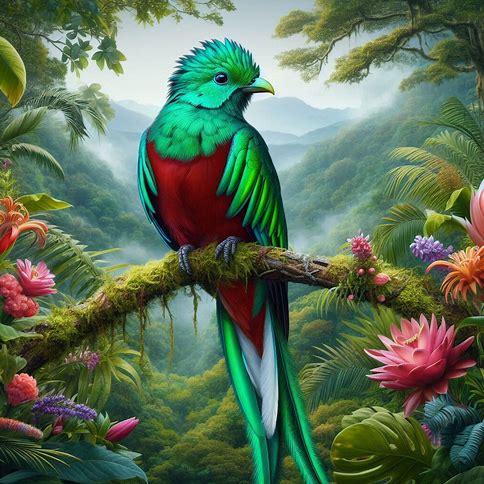
Quetzal is an ancient symbol of the love of freedom since this bird does not live in captivity and this androgynous Deity known as a wonderer in ancient times, who roam here and there from one civilization to another possibly hence this Deity identity with this Quetzal symbol,

similar like androgynous Odin known as a wonderer. Similarly meaning of Quetzal word and behavior of this Quetzal bird.
Finally, as the 16th-century chronicler Bernardino de Sahagún wrote: “Quetzalcoatl was a great civilian who arrived in Mexico at the head of a group of foreigners. He brought art to the country and especially encouraged agriculture.
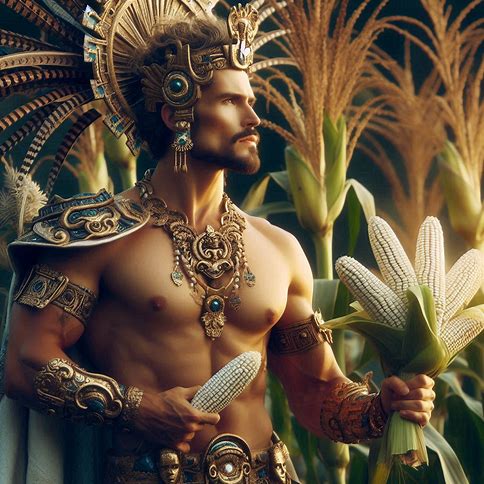
In his day, the ears of corn were so large that a man could not carry more than one, while the cotton grew in different colors, so that it was unnecessary to paint it. He built beautiful spacious houses and preached a religion that promoted peace.”
During the two or three hundred years before the Aztecs’ rise to prominence in the thirteenth and fourteenth centuries AD a number of kings, particularly amongst the Toltecs of the Valley of Mexico, are known to have called themselves ‘Quetzalcoatl’. However, they did not claim to be the Quetzalcoatl, but rather to be his successors, and used his name in the manner of a title or honorific.
https://rgdn.info/en/k_chemu_privelo_iskazhenie_iskonnyh_znaniy._primer_iz_proshlogo._acteki
This concerned the bearded white-skinned deity named Quetzalcoatl, who was believed to have sailed to Mexico from across the seas in remote antiquity.
History record described him as “a mysterious person … a white man with a strong formation of body, broad forehead, large eyes, and a flowing beard. He was dressed in a long, white robe reaching to his feet. He condemned sacrifices, except fruits and flowers.
Describe the Nature of Wisdom bringer– These “white deities” were described by the Incas as wise, peaceful instructors who came from the north in the “morning of time” and taught the Incas’ primitive forefathers architecture as well as manners and customs. They were unlike other Native Americans in that they had “white skins and long beard and were taller than the Incas.
According to a particularly impressive tradition in Central America, this “wise teacher came from across the sea in a boat that sailed alone without oars. He was a tall, white-bearded man who taught people how to use fire in cooking.
He also built houses and showed couples that they could live together as husband and wife, and people used to quarrel in those days, but he taught them to live in peace. ”
imagine that the wave of spiritual knowledge brought to the Toltecs by the white-bearded Androgynous Quetzalcoatl was apparently so powerful that it moved from south to north, or even farther north through North America.It is said that the fame of the Androgynous wisdom bringer Quetzalcoatl was so great, that pilgrims from distant nations even came to visit him in Mexico. – ( ancient religion of sun book page no -80 )
Androgynous Kukulkan, or the Feathered Serpent, was the Mayan counterpart to Androgynous Quetzalcoatl, the Aztec deity of light, learning, and culture. He was revered in the Maya pantheon as the great organizer, the founder of cities, the founder of laws, and the teacher of the calendar.
Kukulkán was worshipped under various names for over 12,000 years (during the Hyborian Age) including as Kukulcan in Ptahuacan in Antilla.
All of the legends asserted unequivocally that Androgynous Quetzalcoatl / Kukulkan / Gucumatz / Votan / Itzamana had arrived in Central America from afar (across the “Eastern Sea”), and that he had eventually gone away in the same direction he had come from. He had sincerely sworn to return one day — a striking echo of Viracocha that would be almost absurd to attribute to coincidence.
Furthermore, it should be remembered that Viracocha’s voyage across the Pacific Ocean was presented as a miraculous event in Andean traditions.
Quetzalcoatl’s departure from Mexico also had a strange feeling about it.
Androgynous Quetzalcoatl was credited with the invention of the advanced mathematical and calendrical formulae that the Maya were later to use to calculate the date of doomsday.
The Mayan prophecy predicts the return of Androgynous Quetzalcoatl at the end of the fourth world and the beginning of the fifth world on December 21, 2012
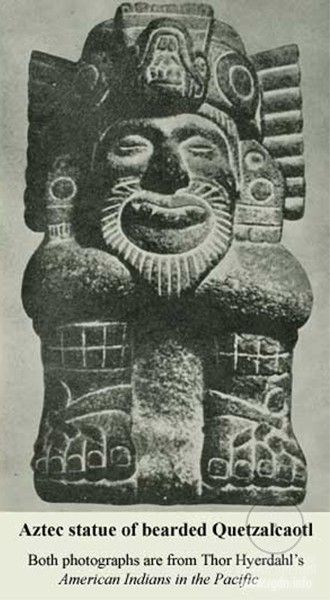

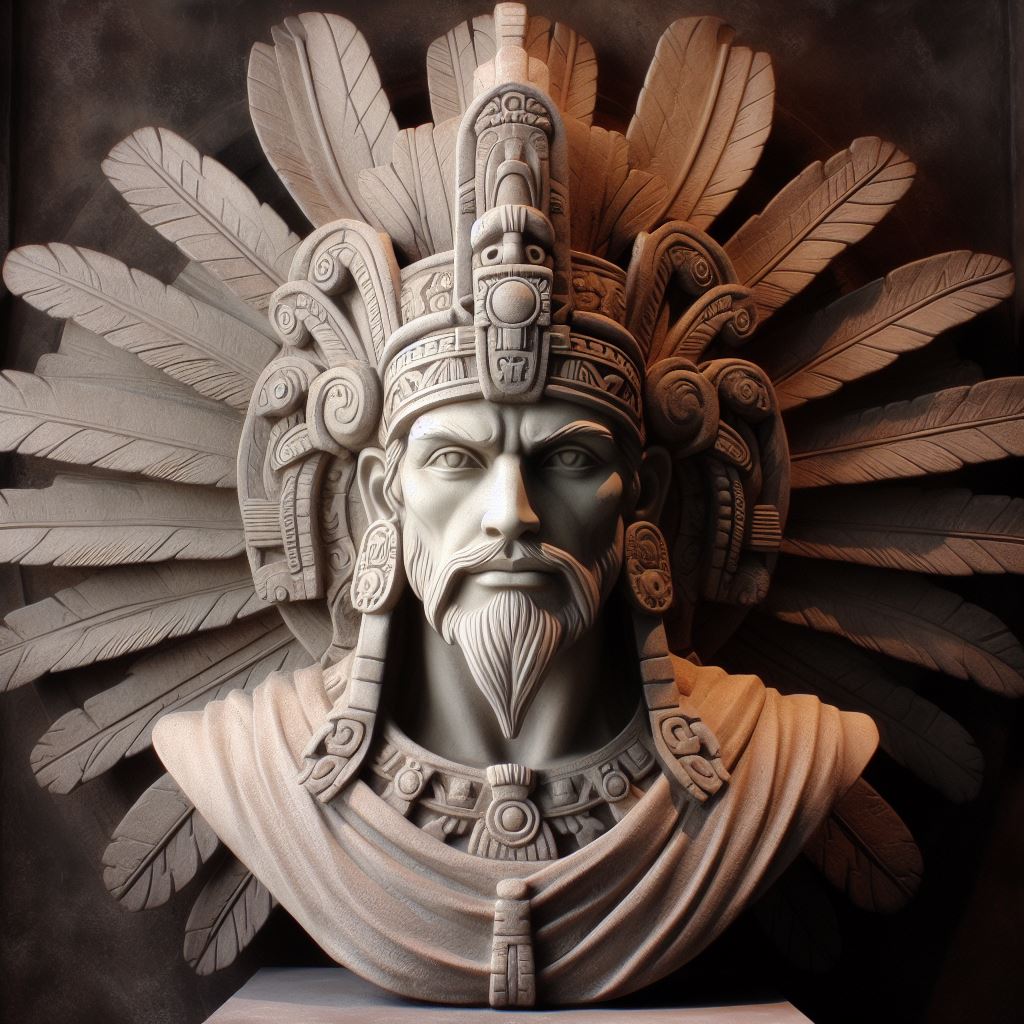
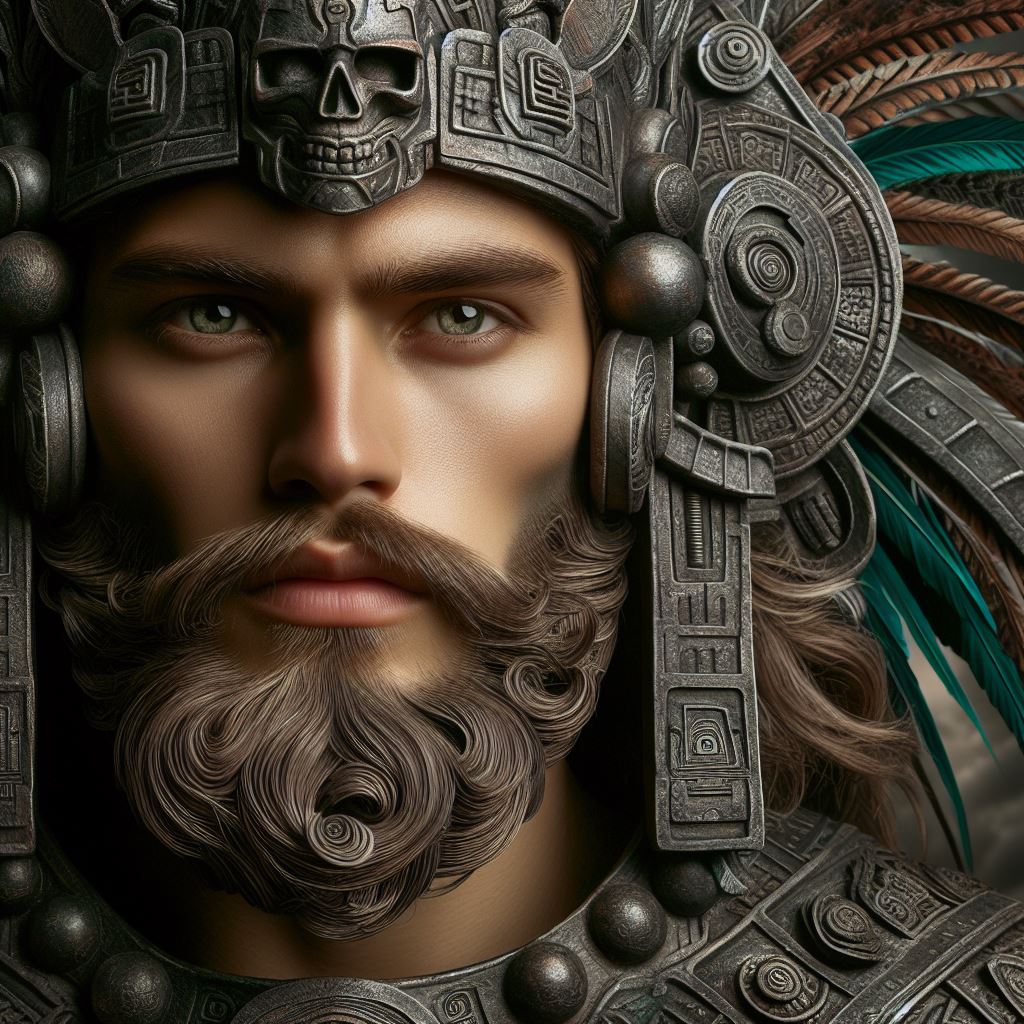
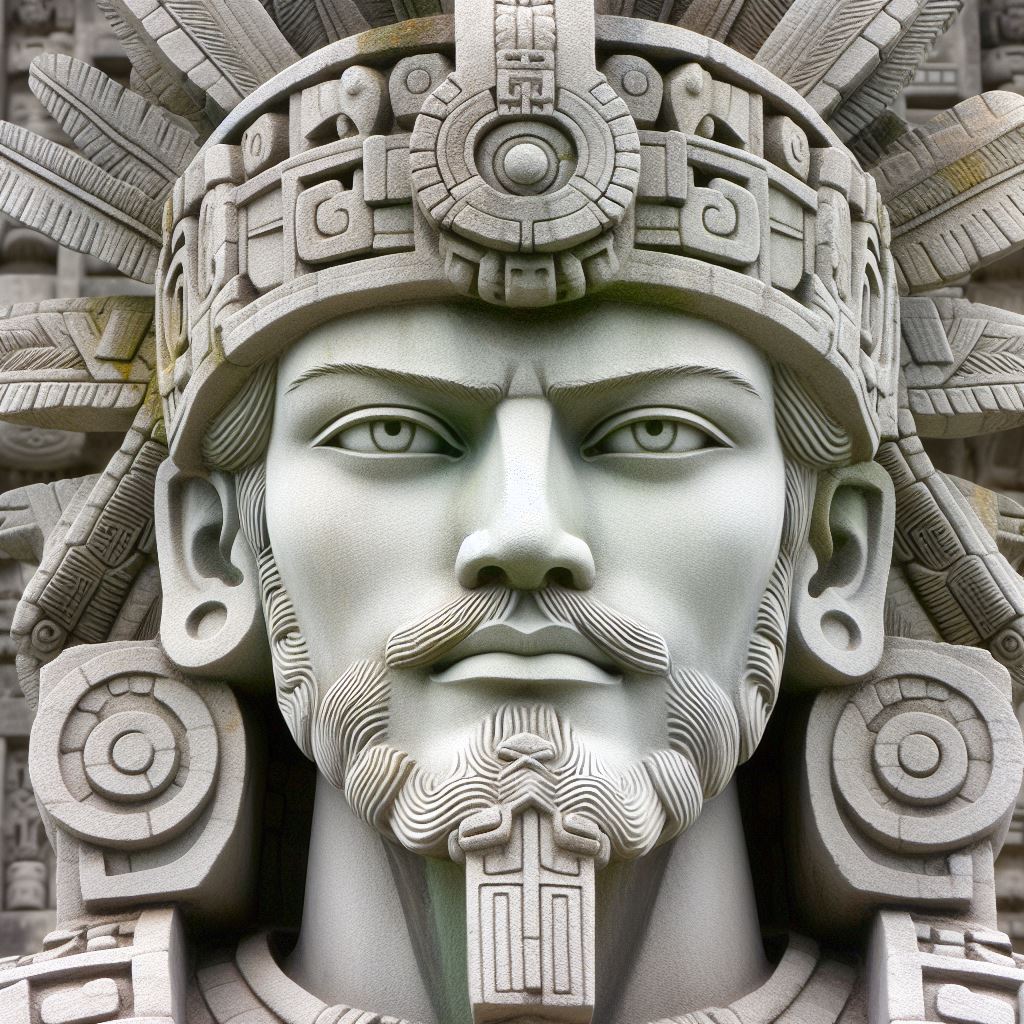
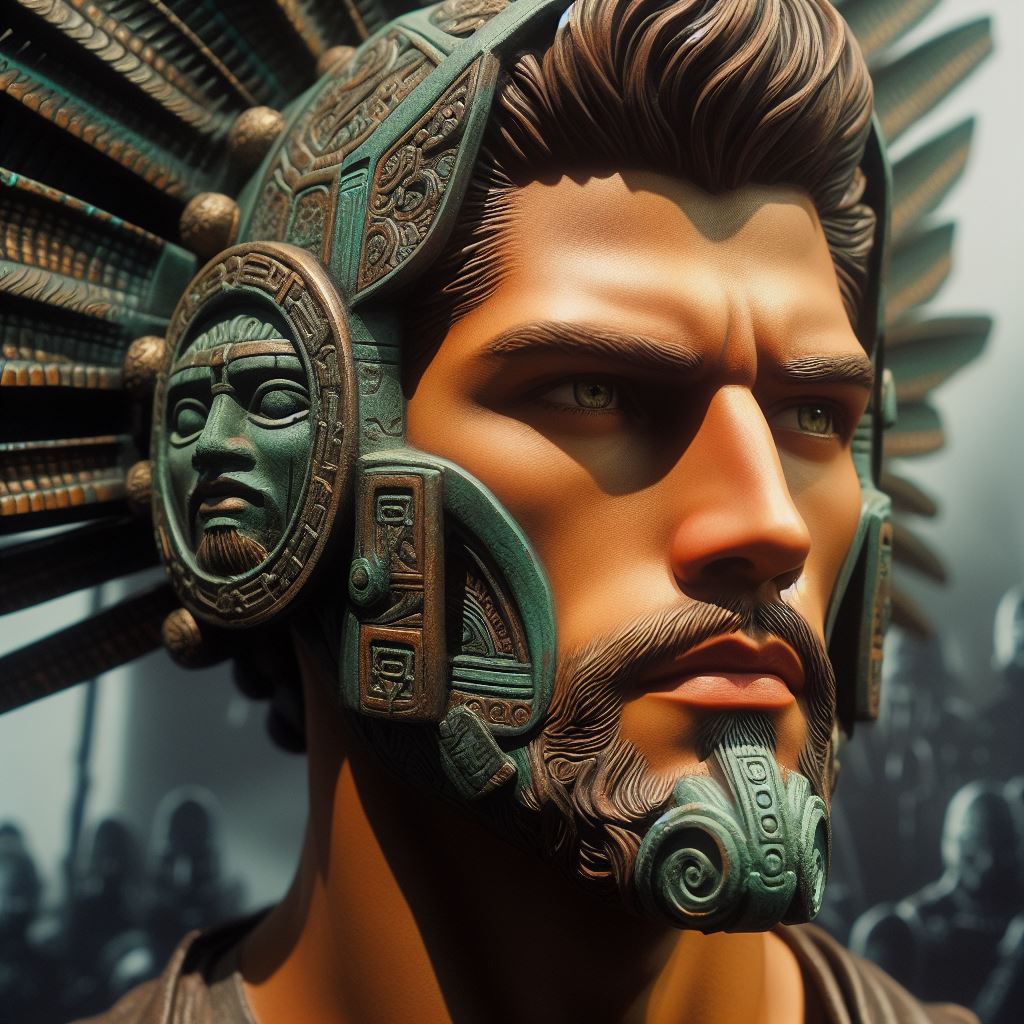
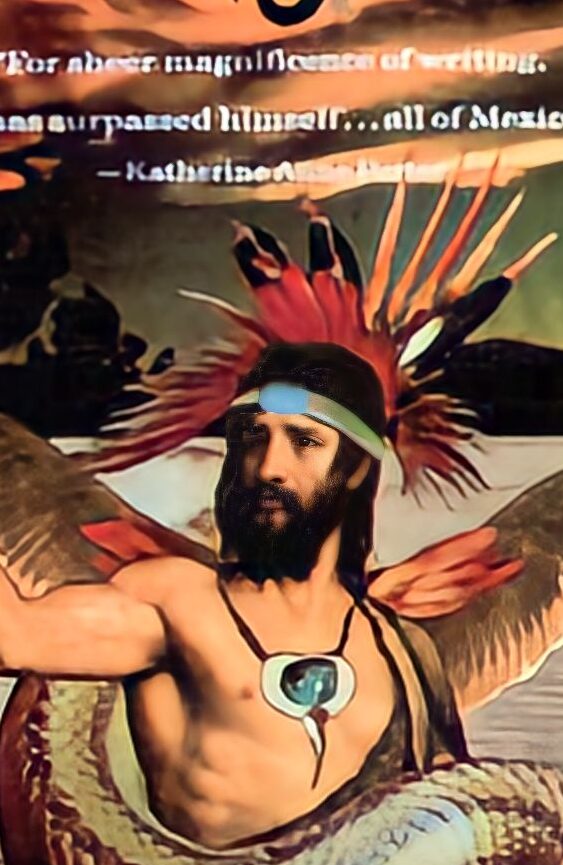
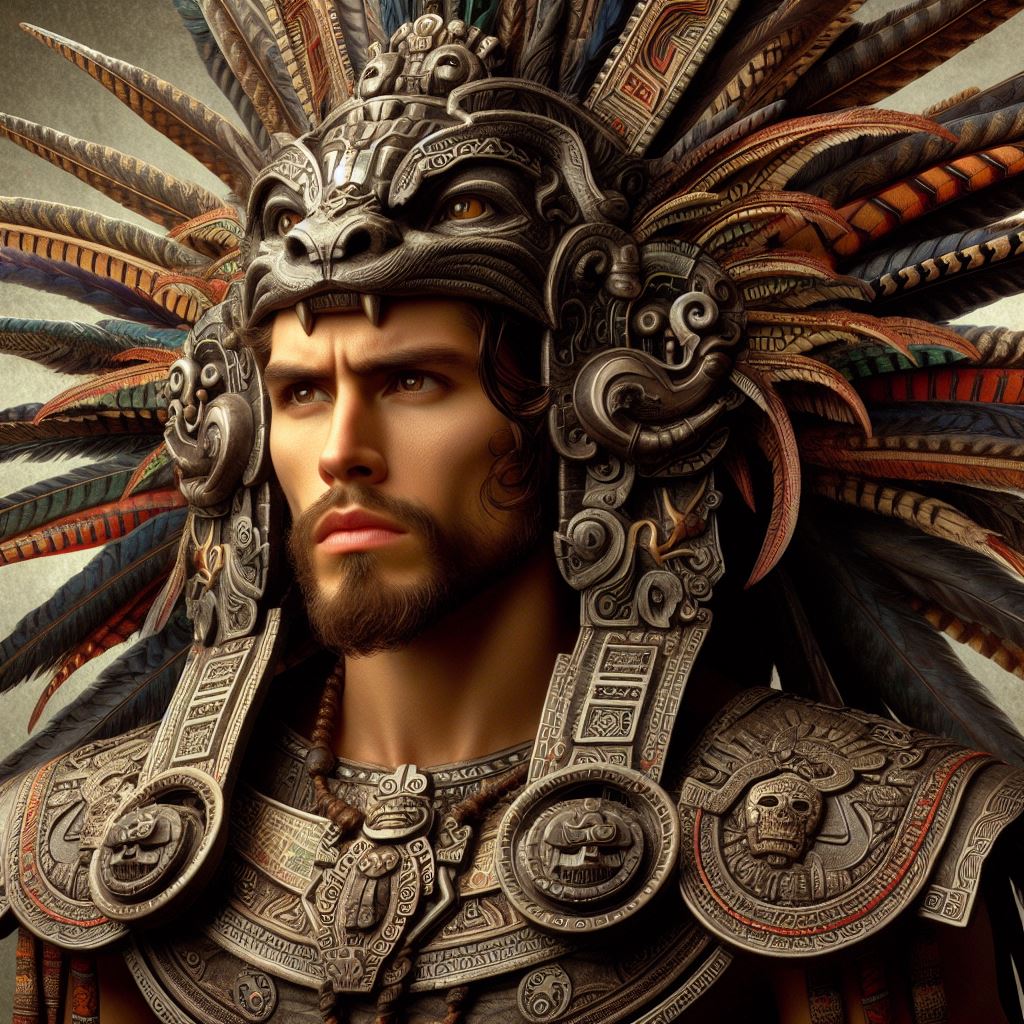
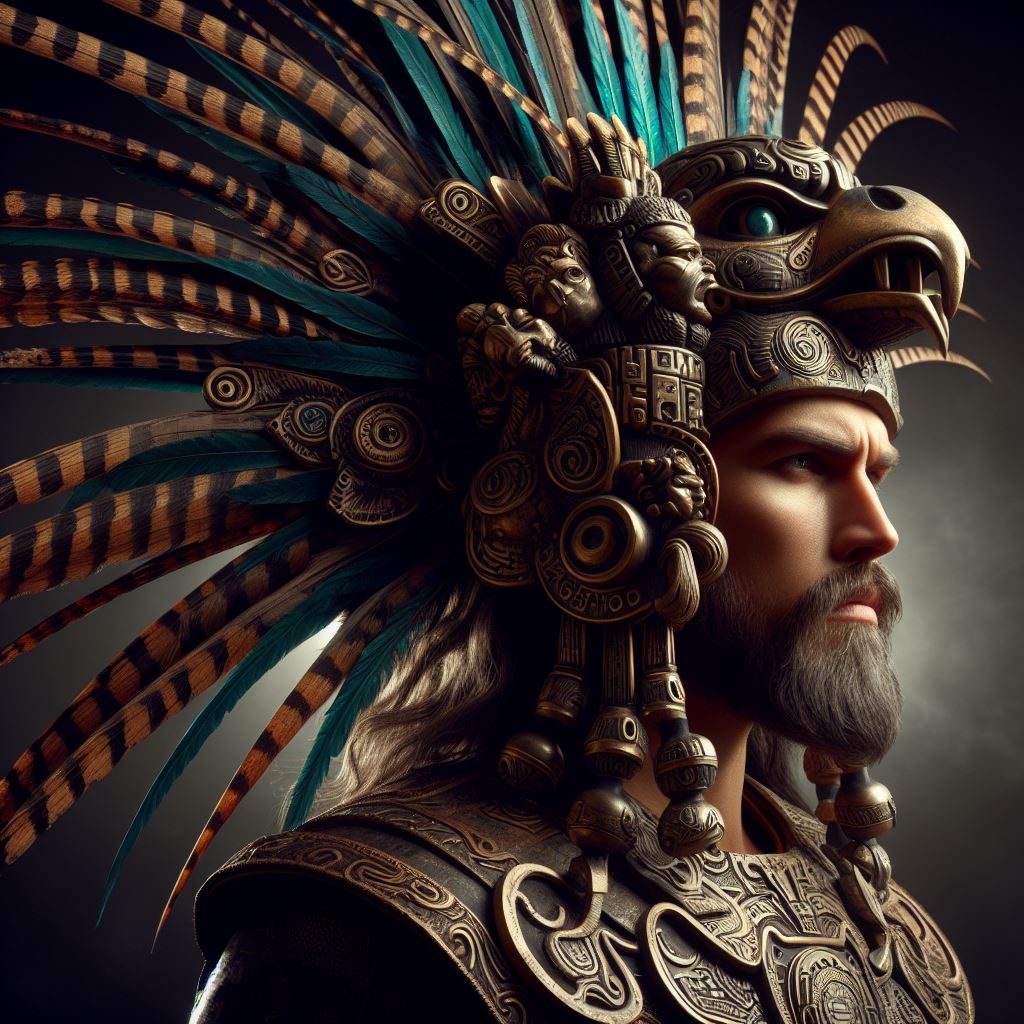
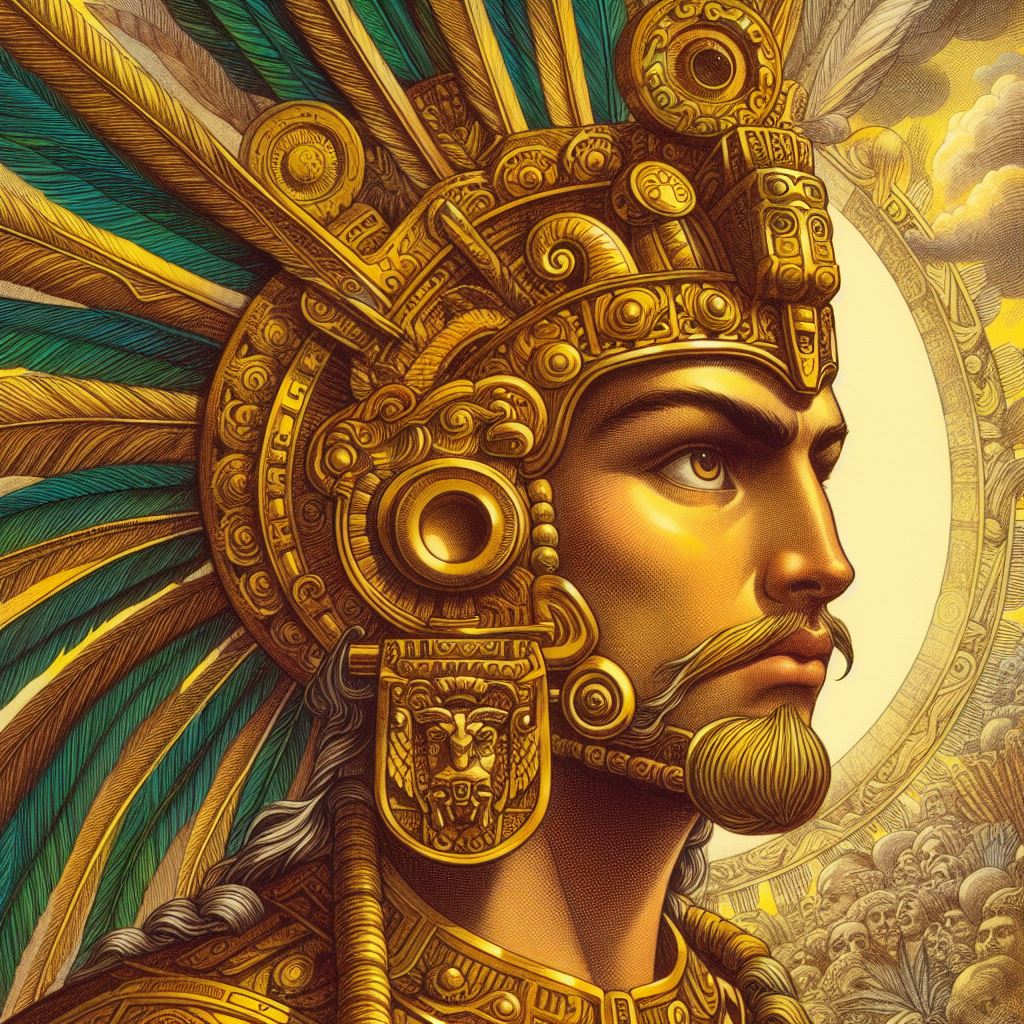
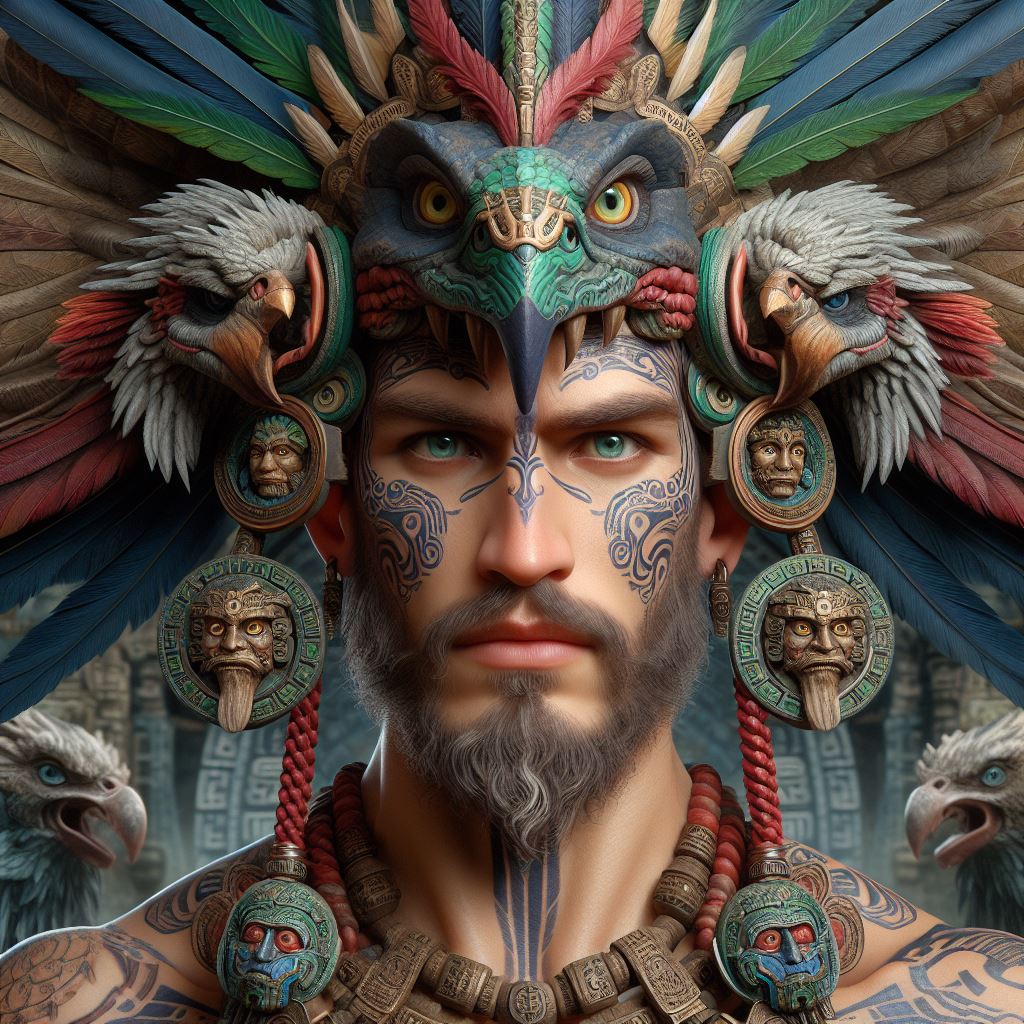
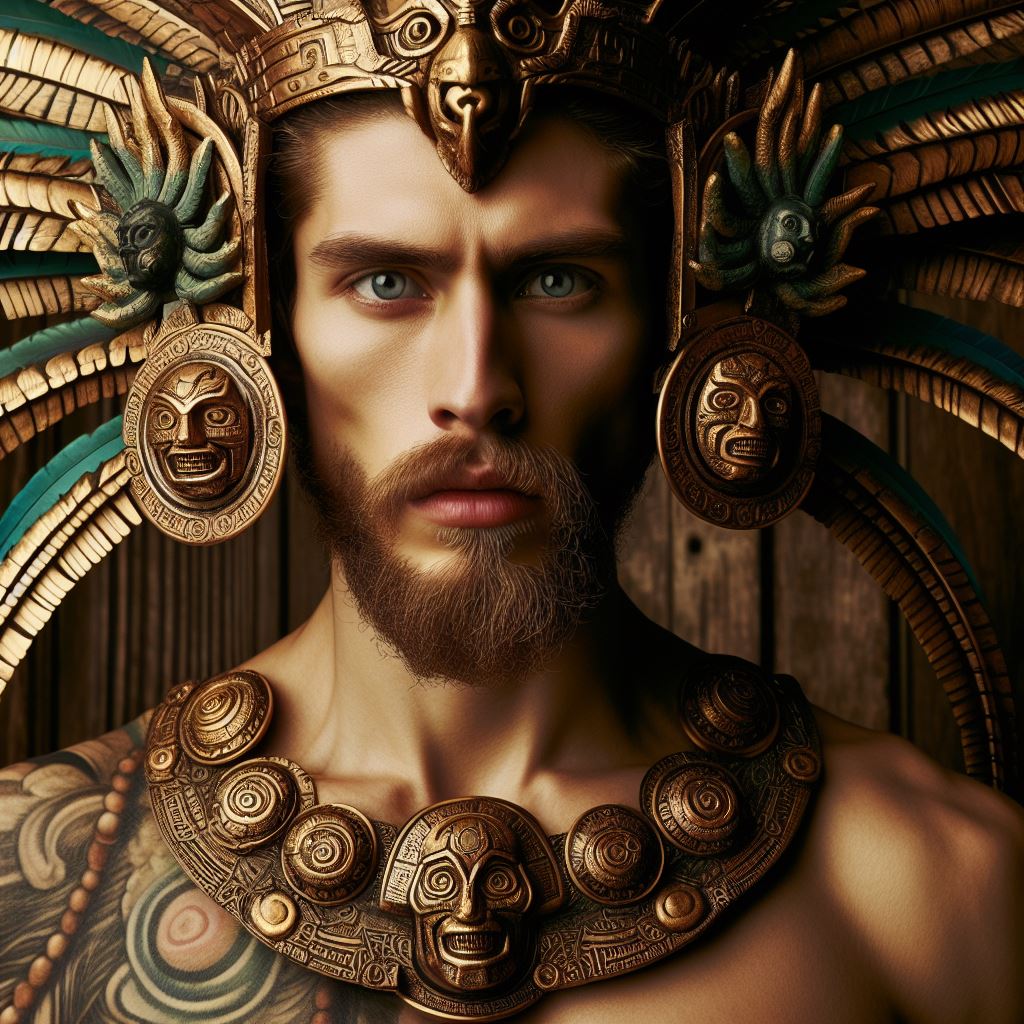
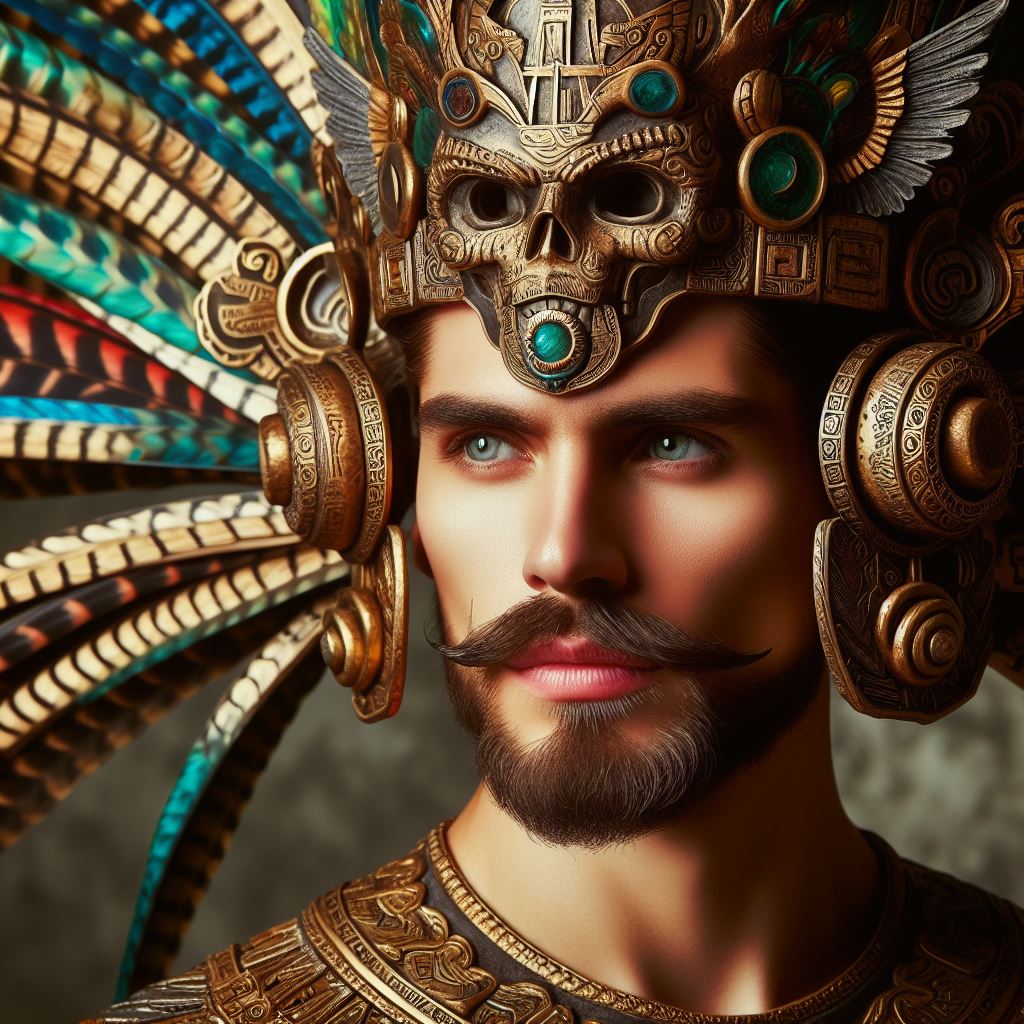
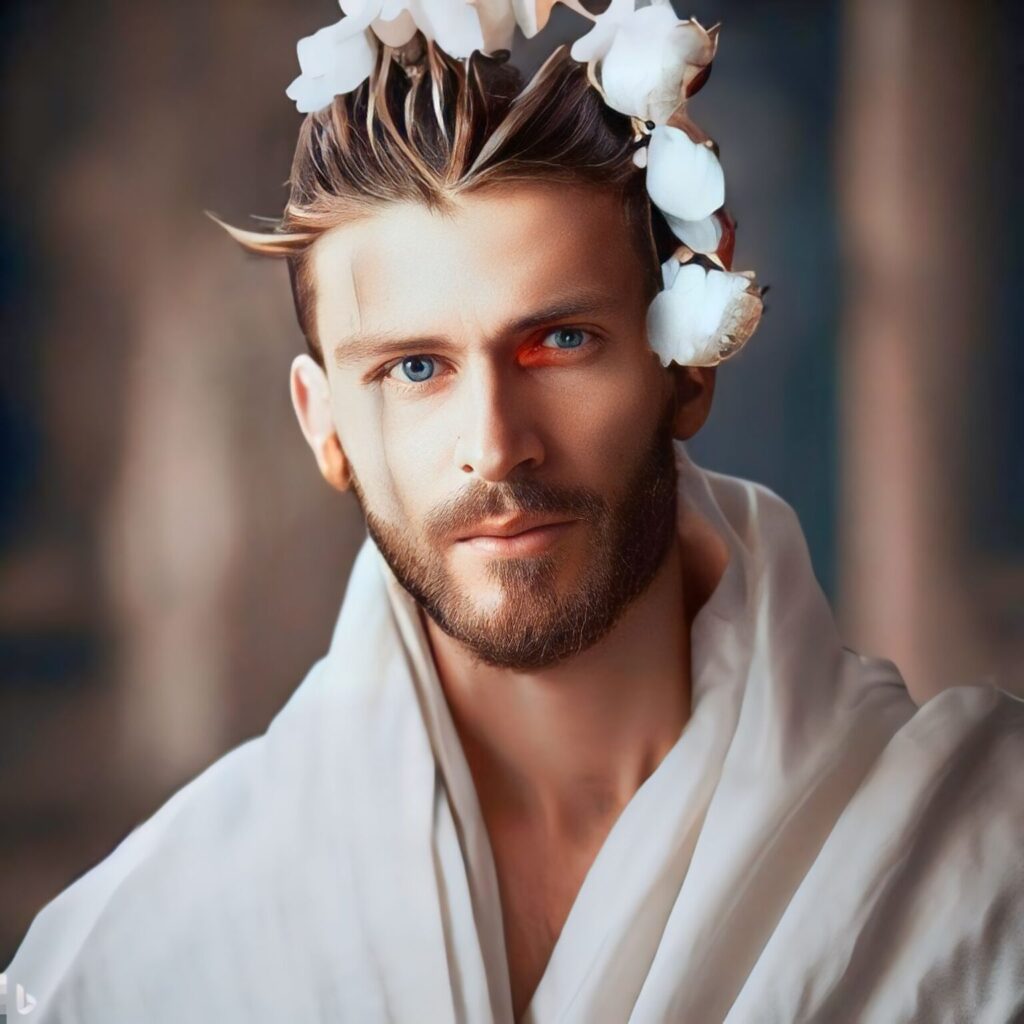
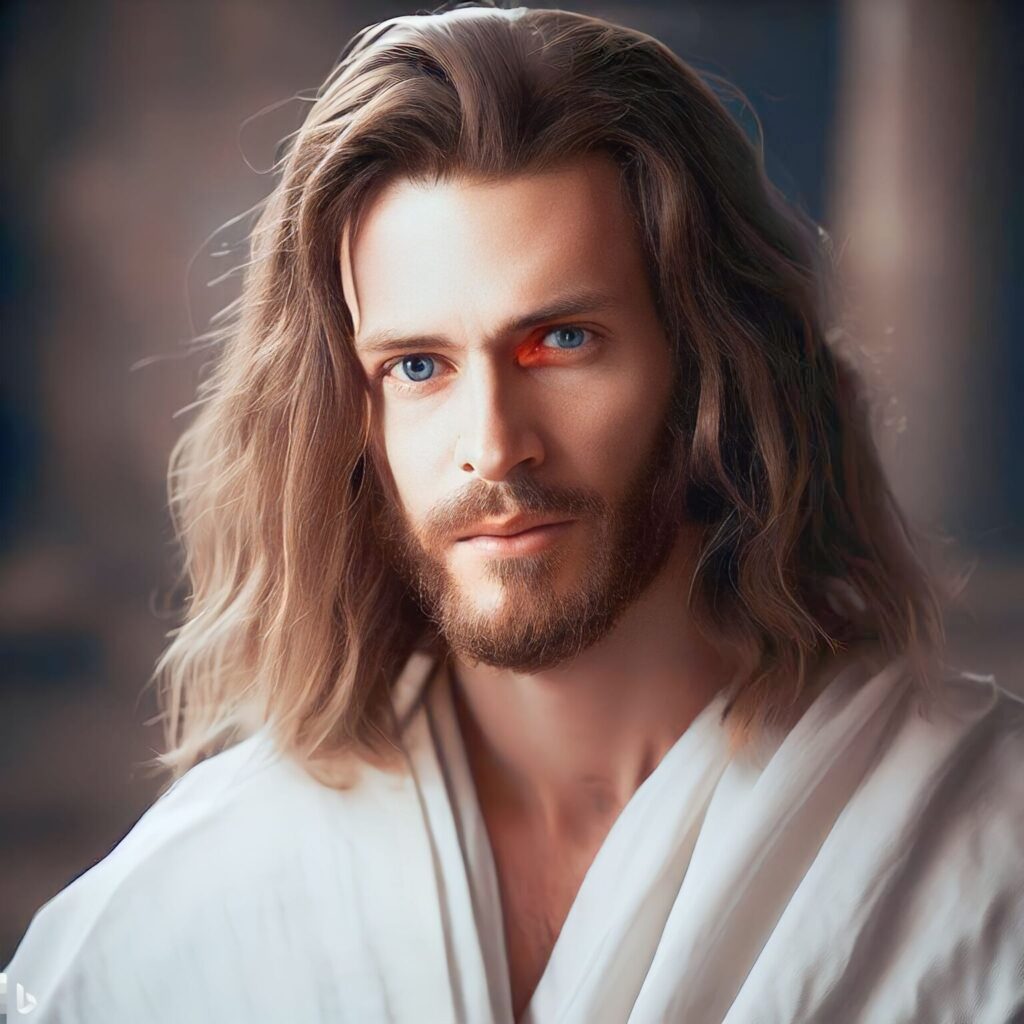


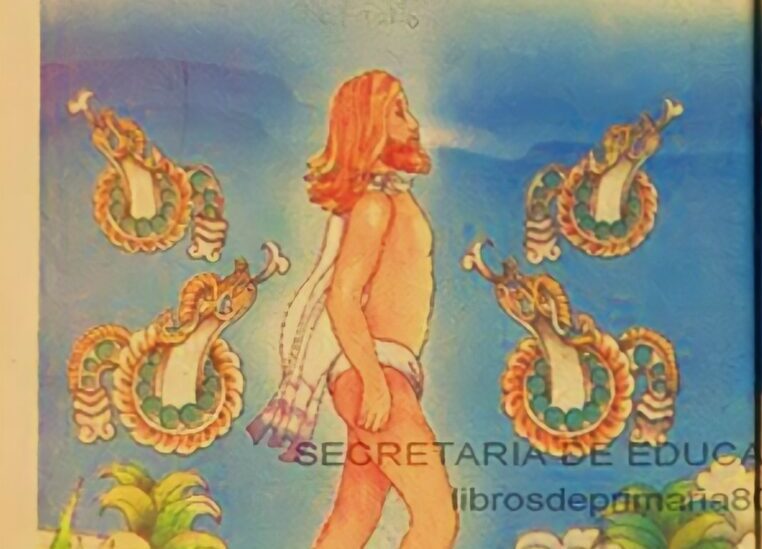
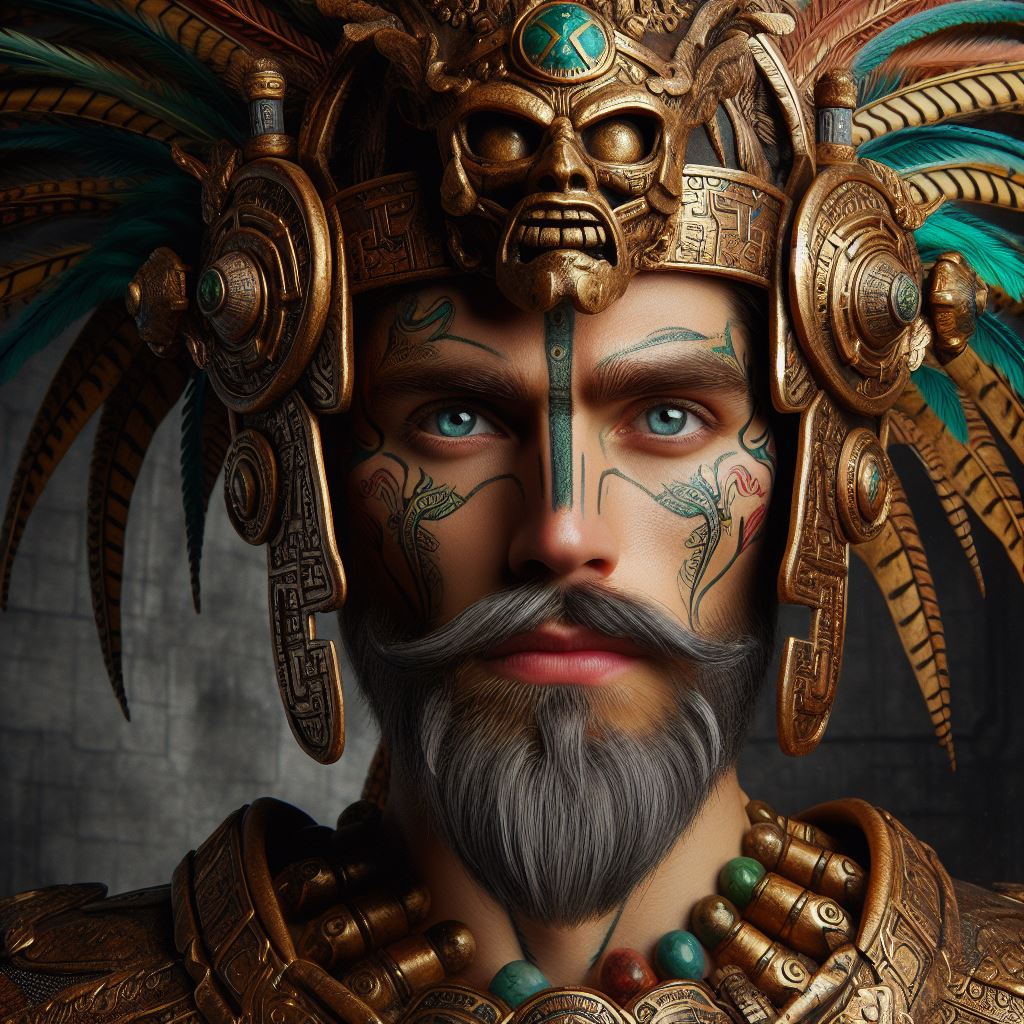
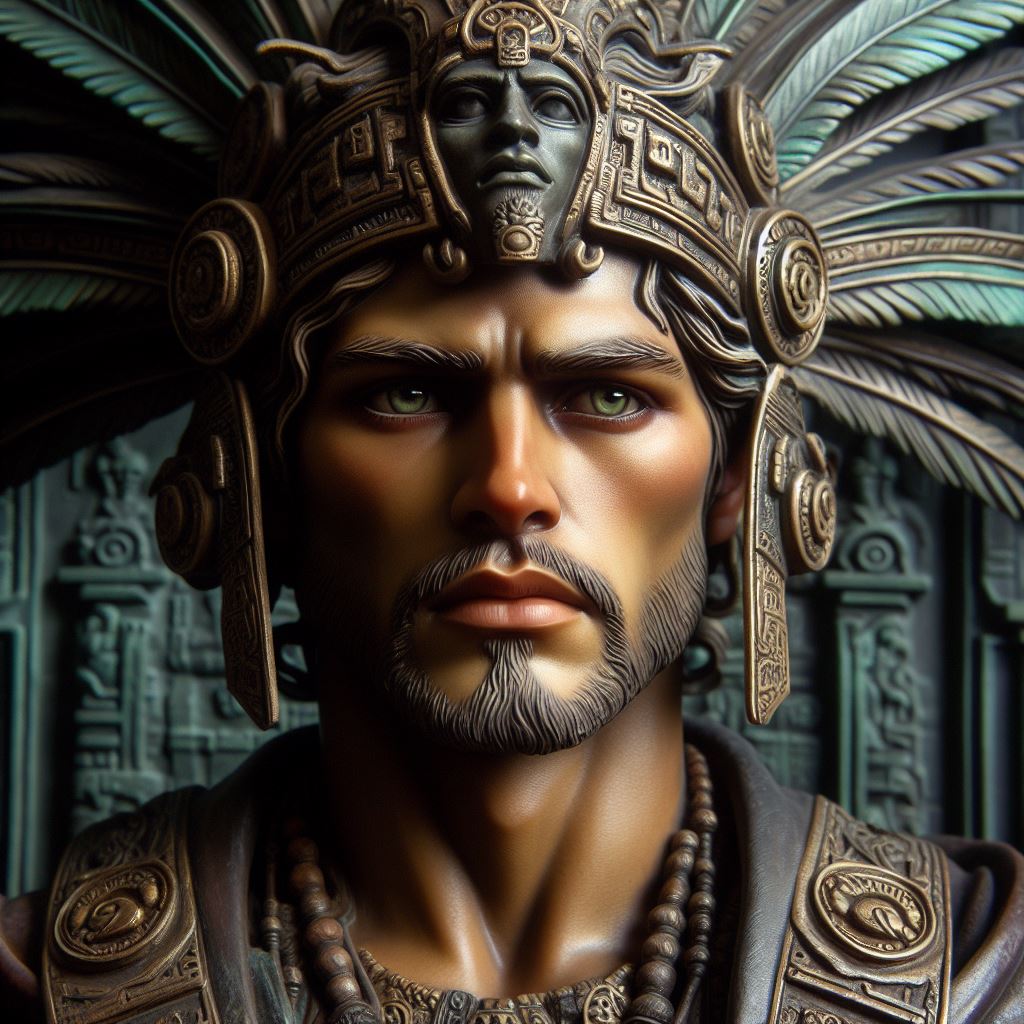
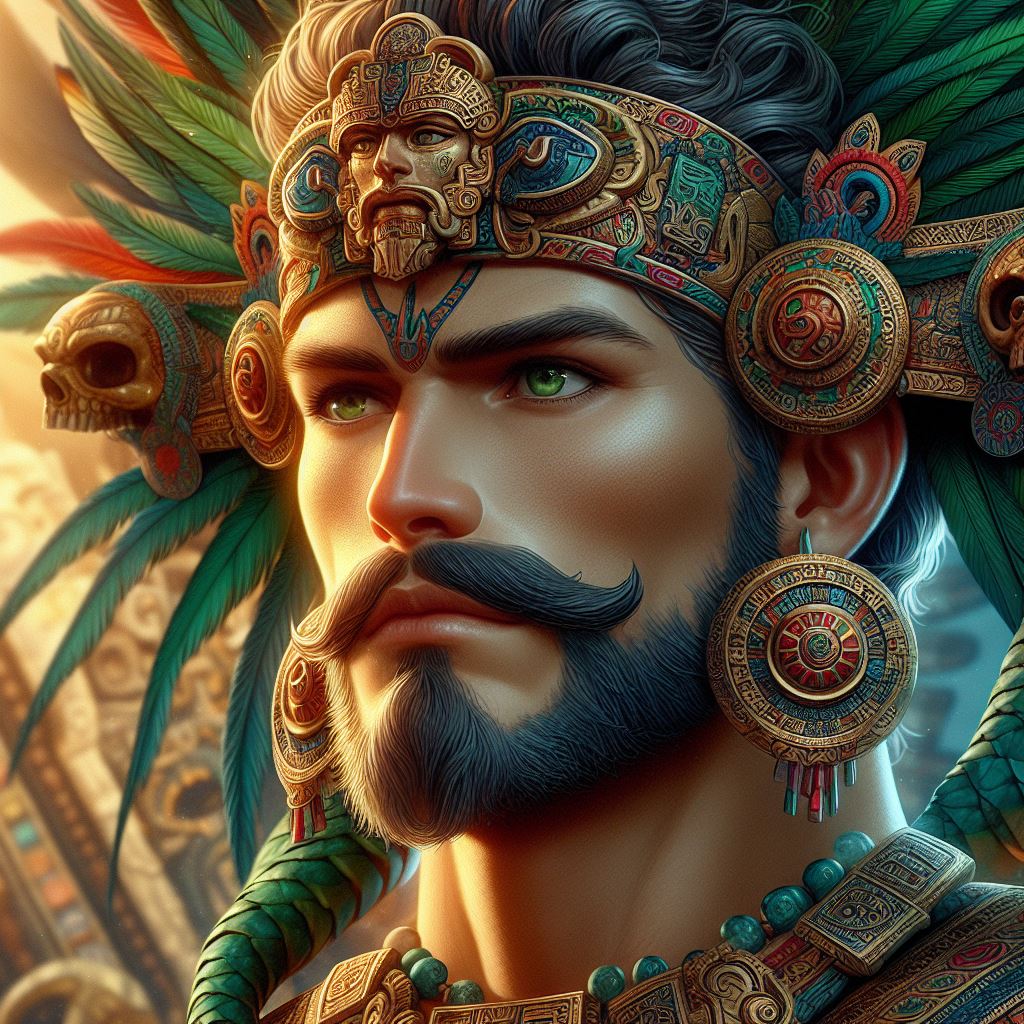
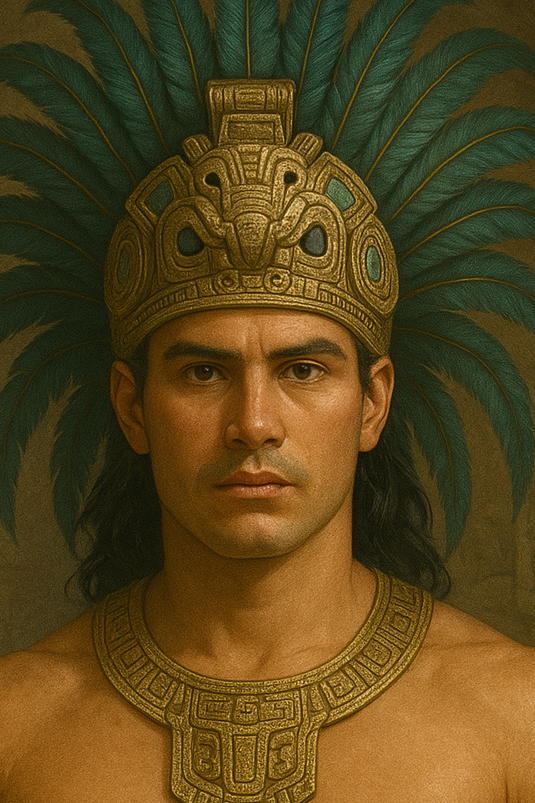
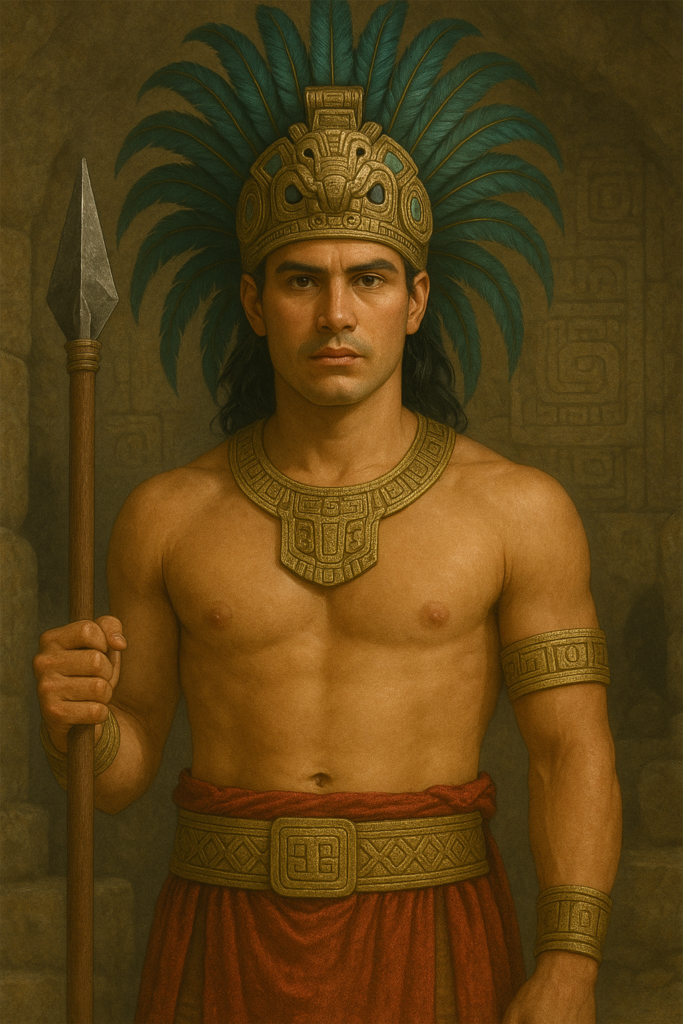
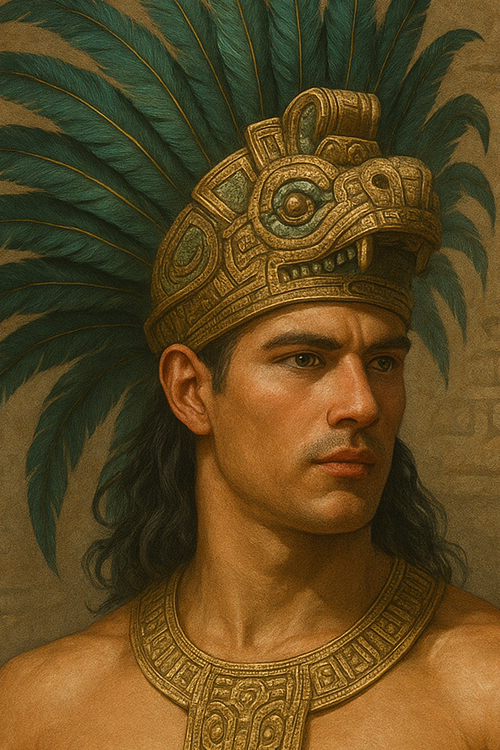
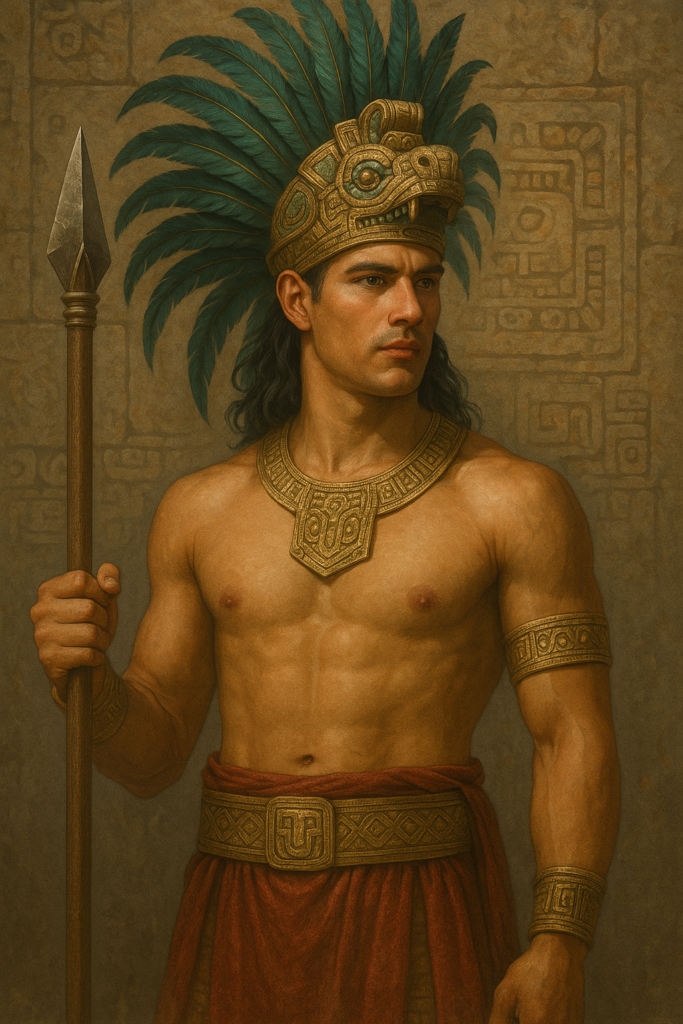
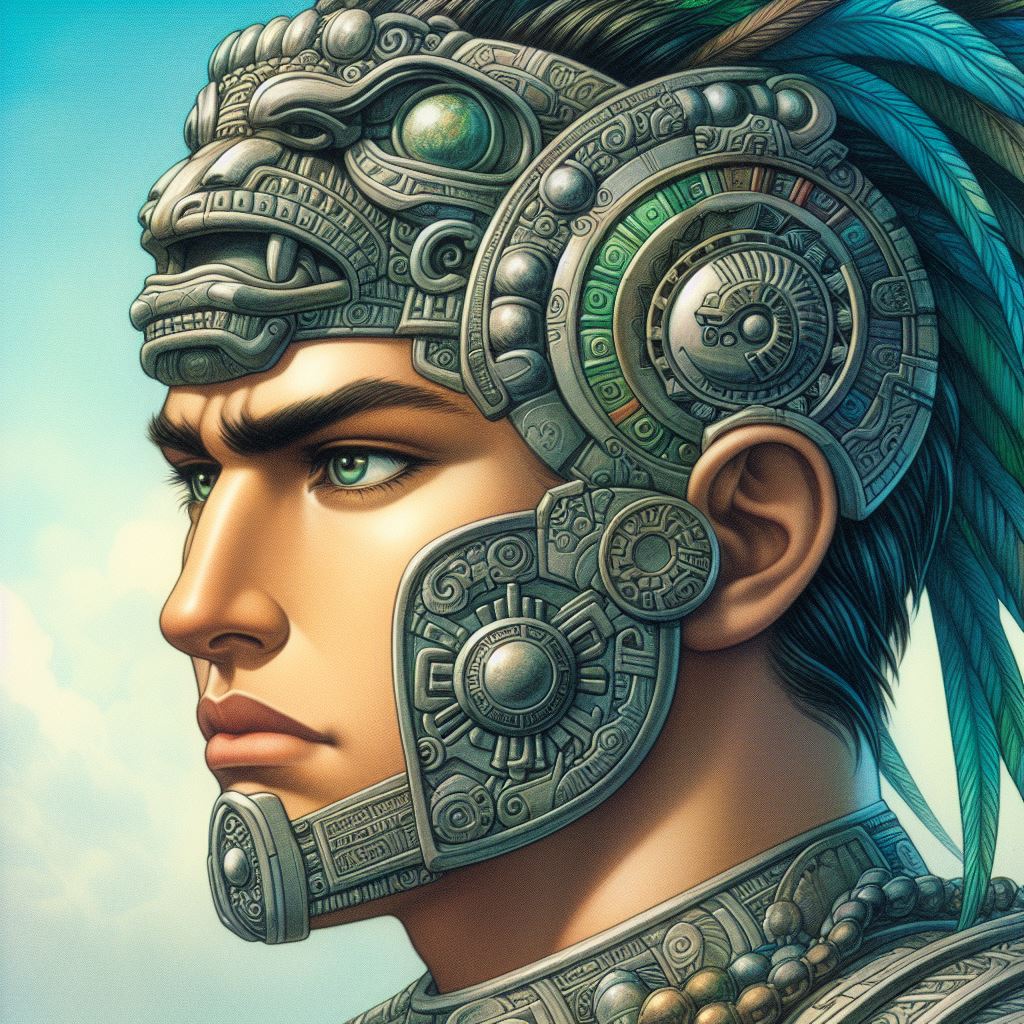
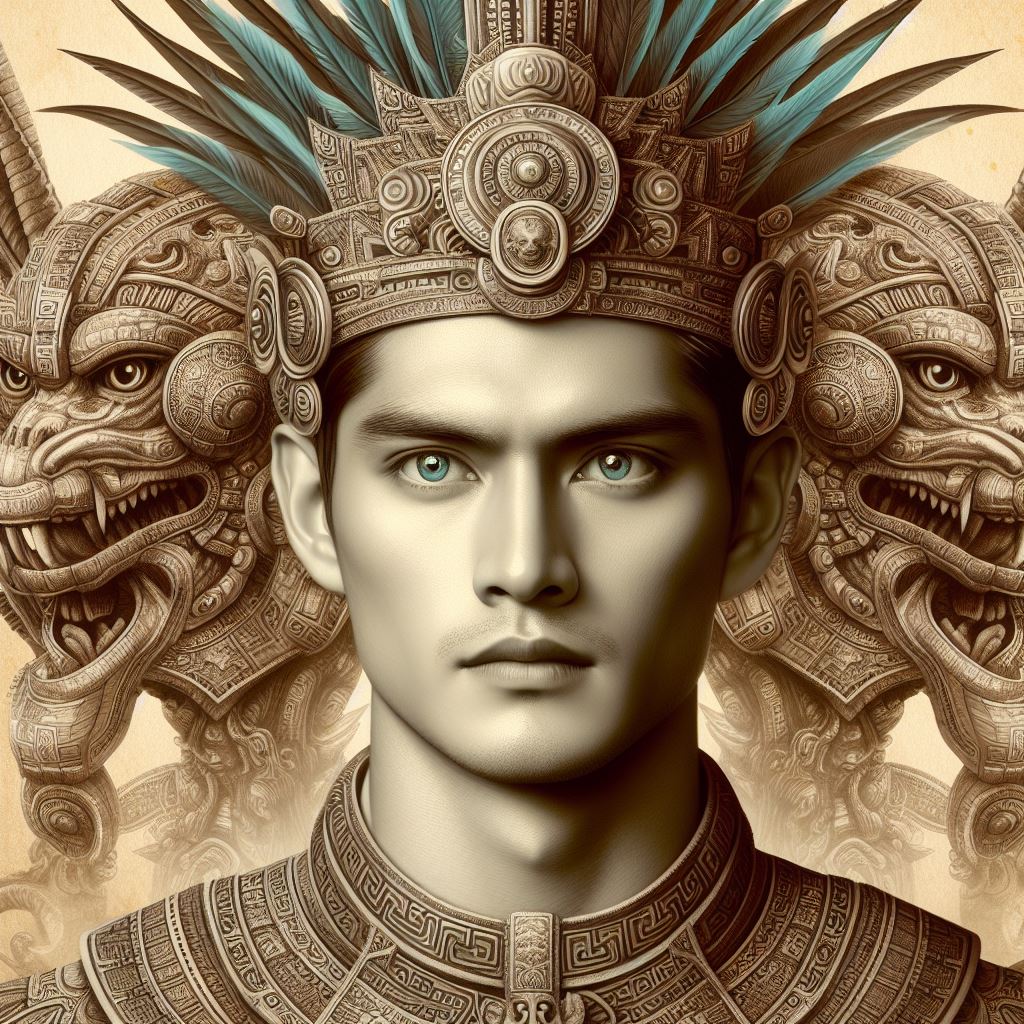
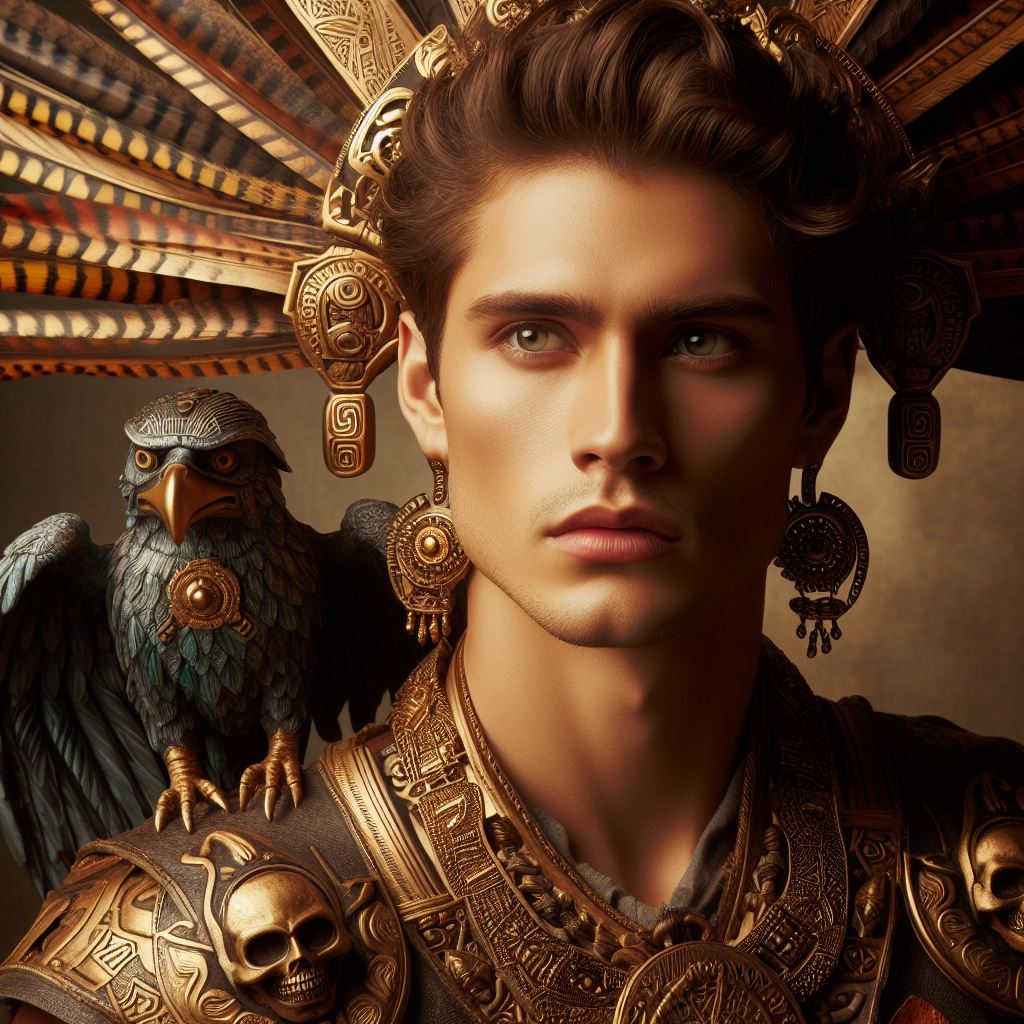
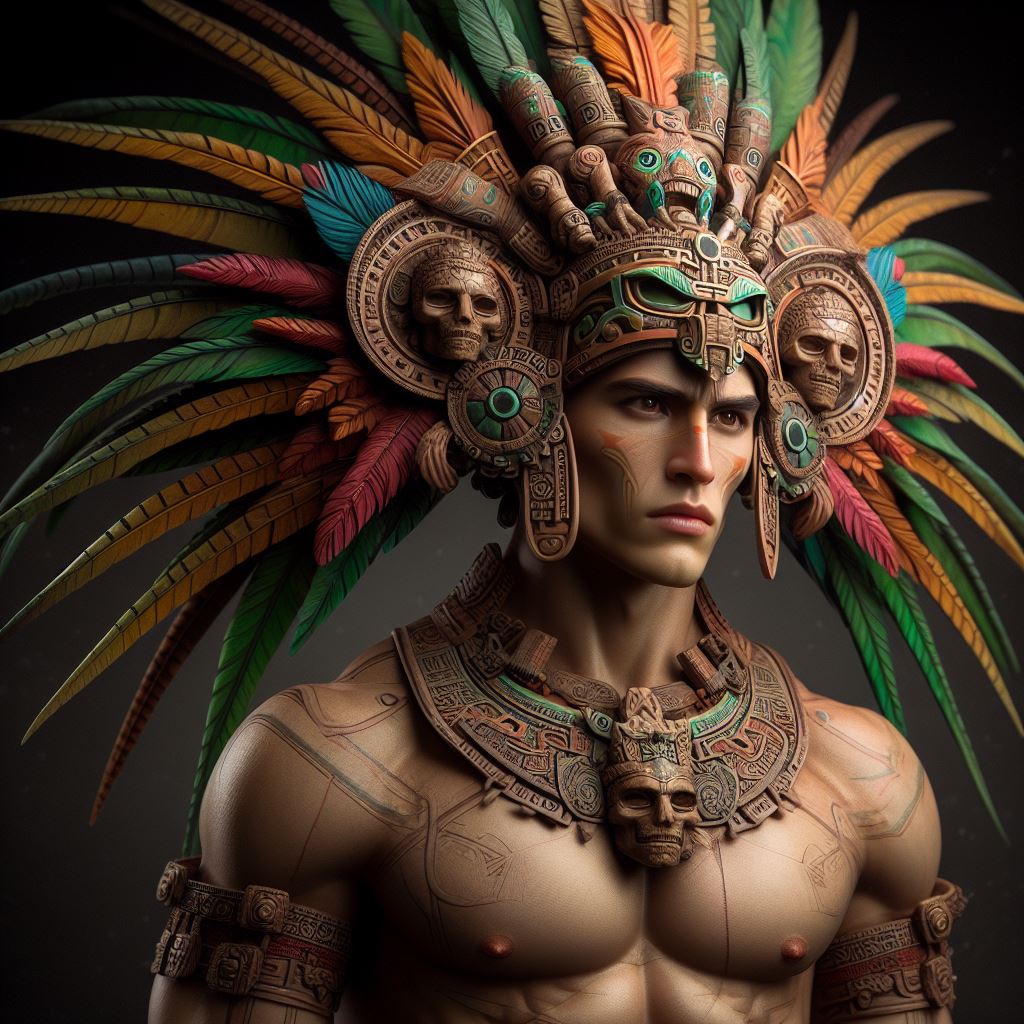
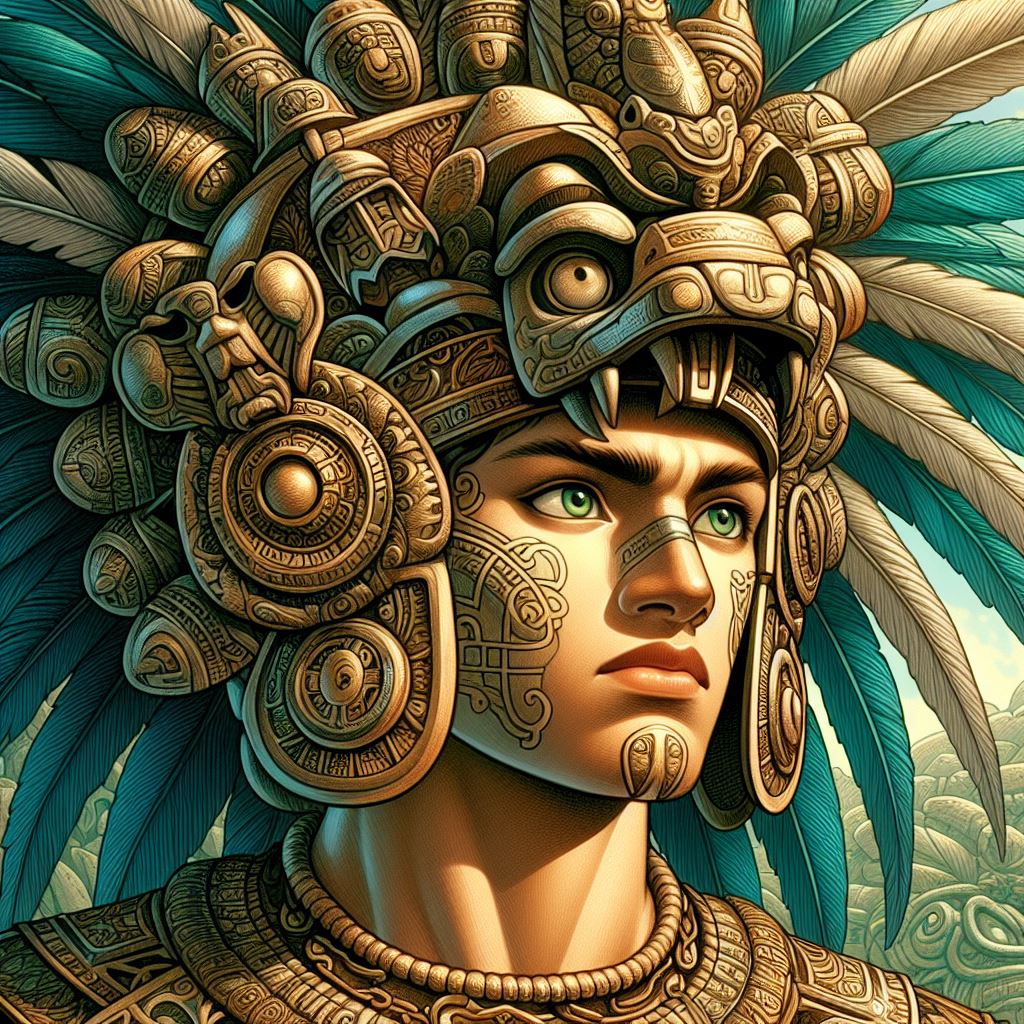
Quetzalcoatl face reconstruction through Microsoft Bing AI software
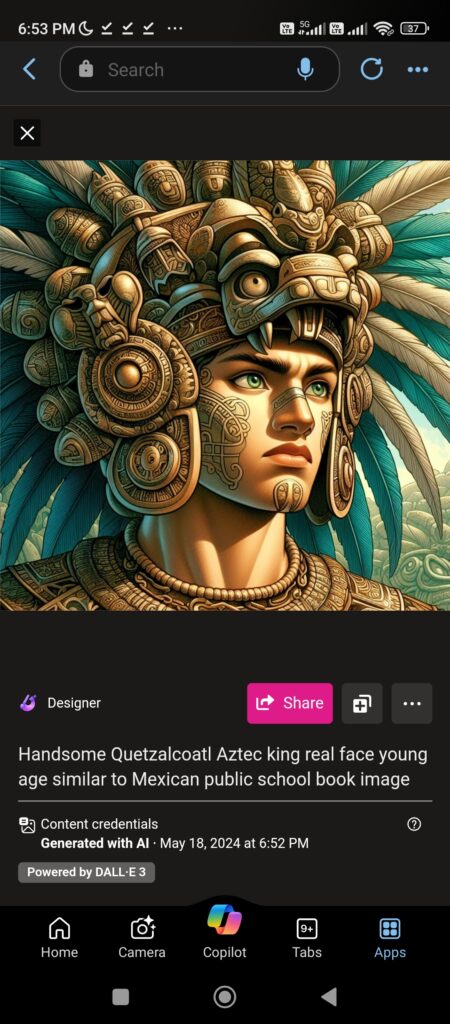
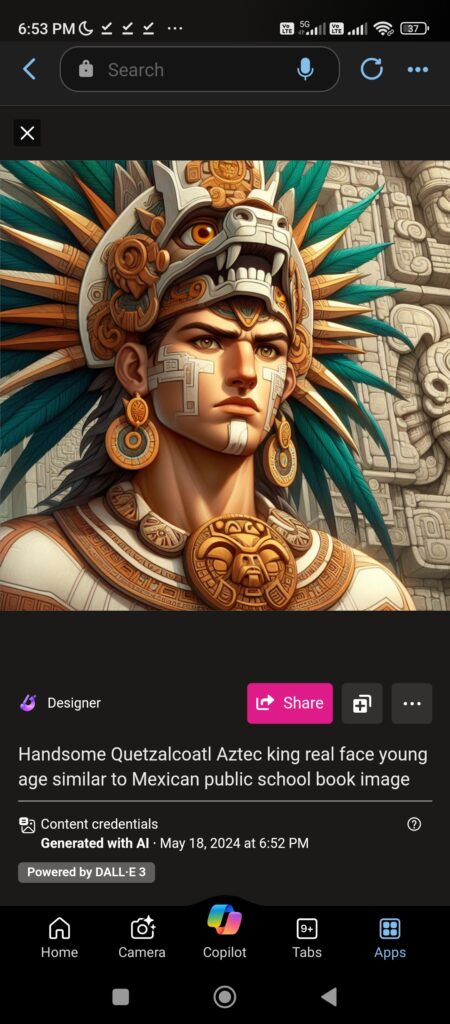
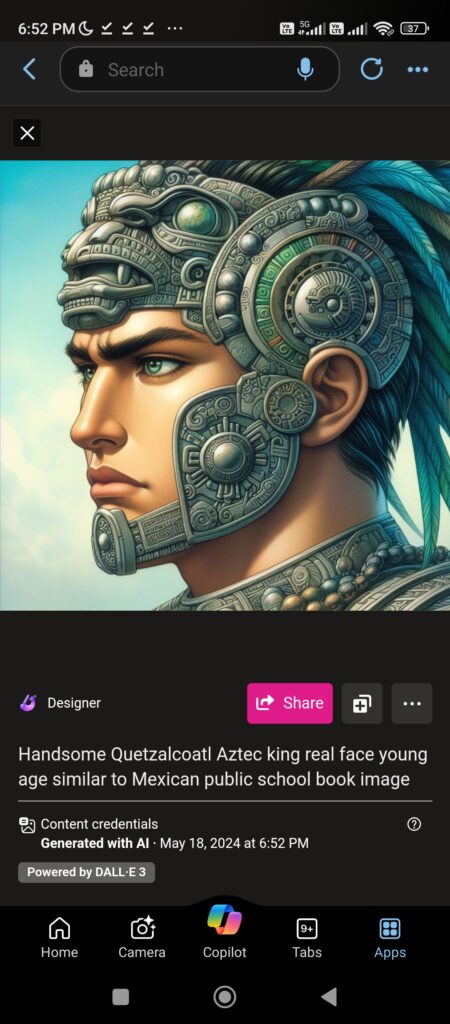
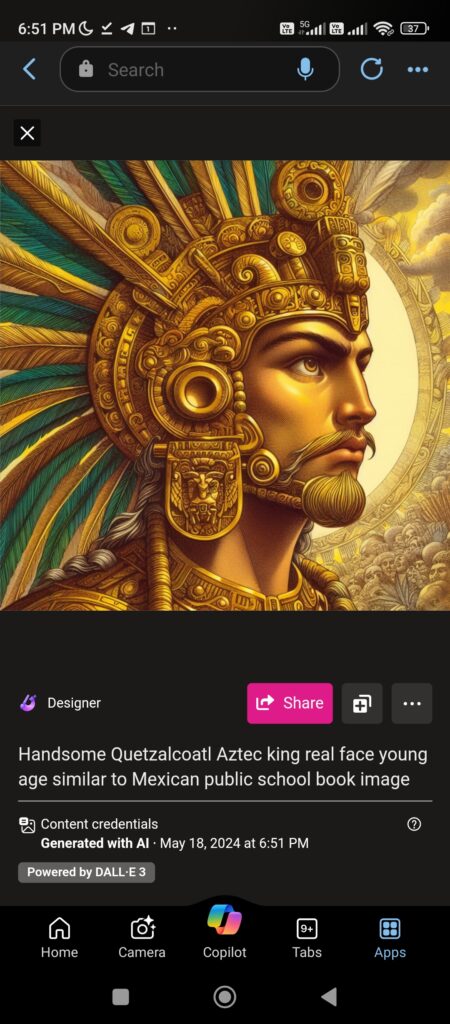

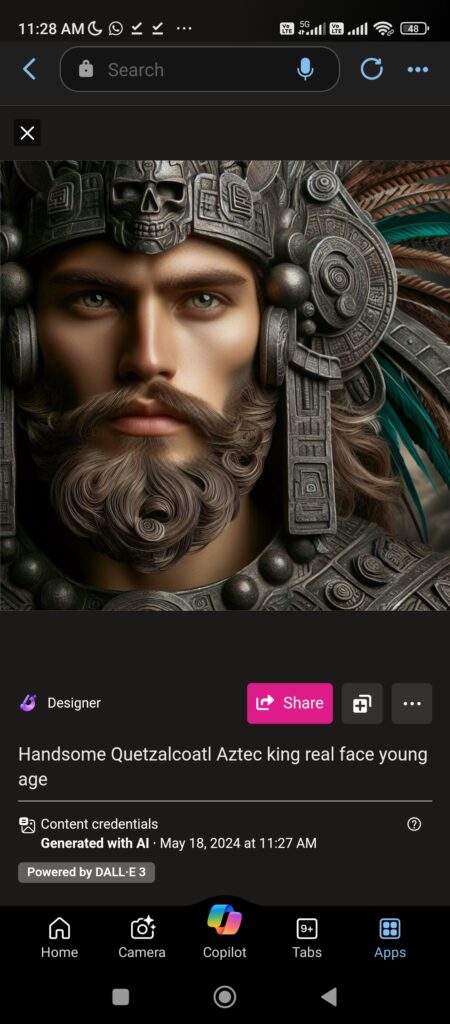
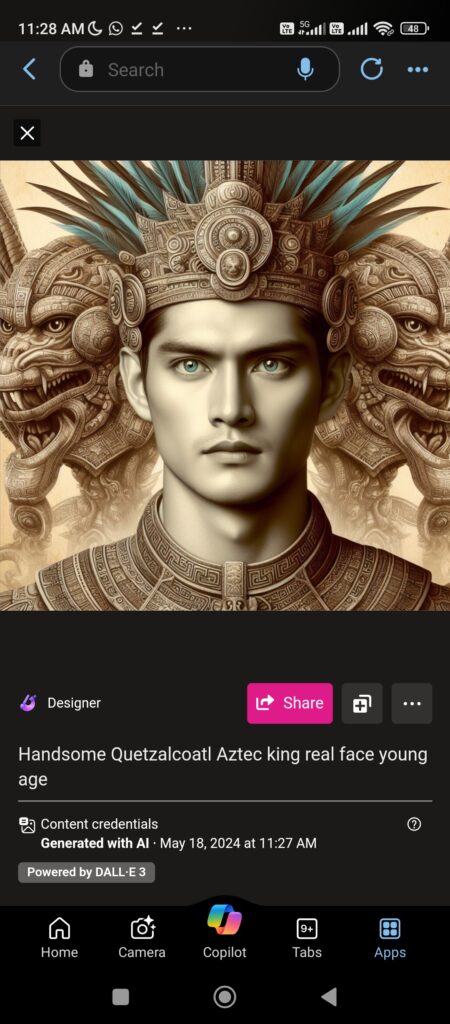
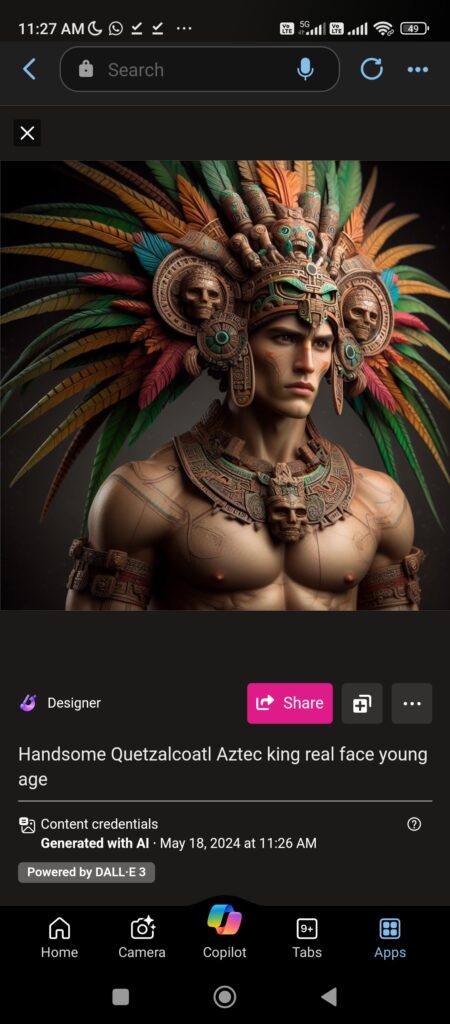
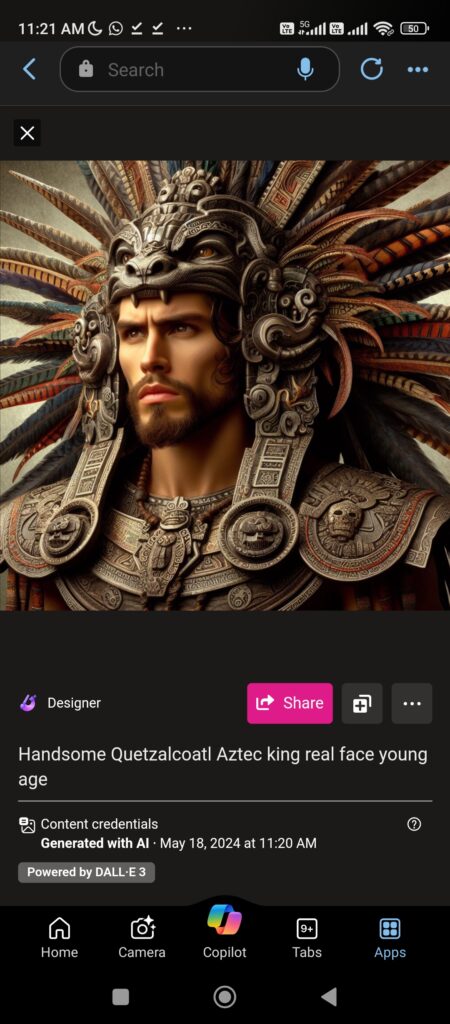
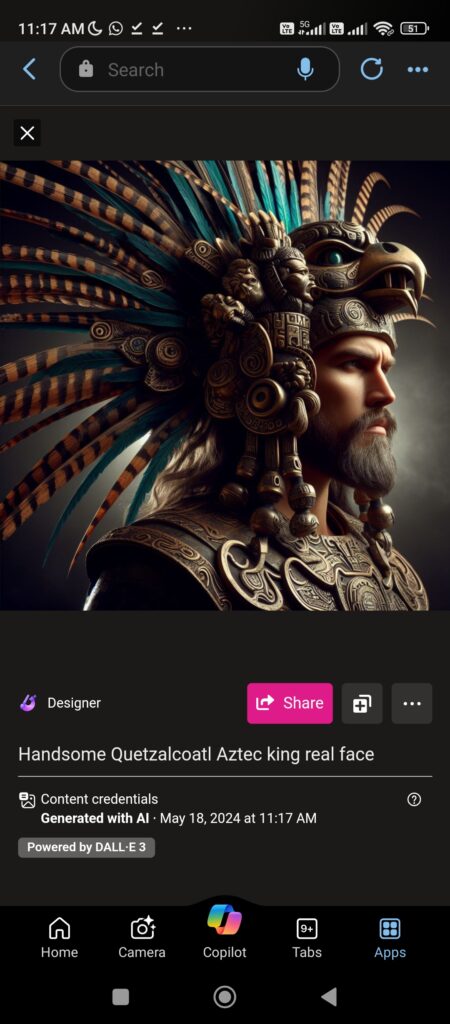
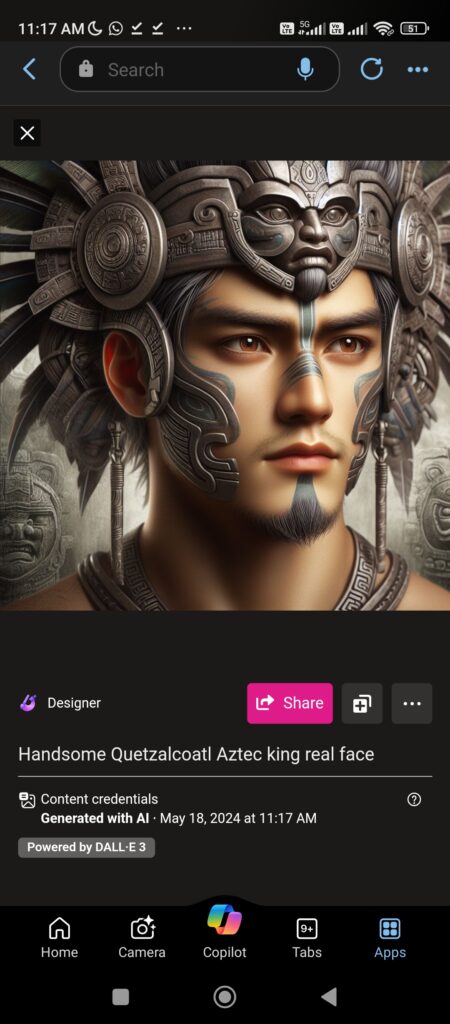
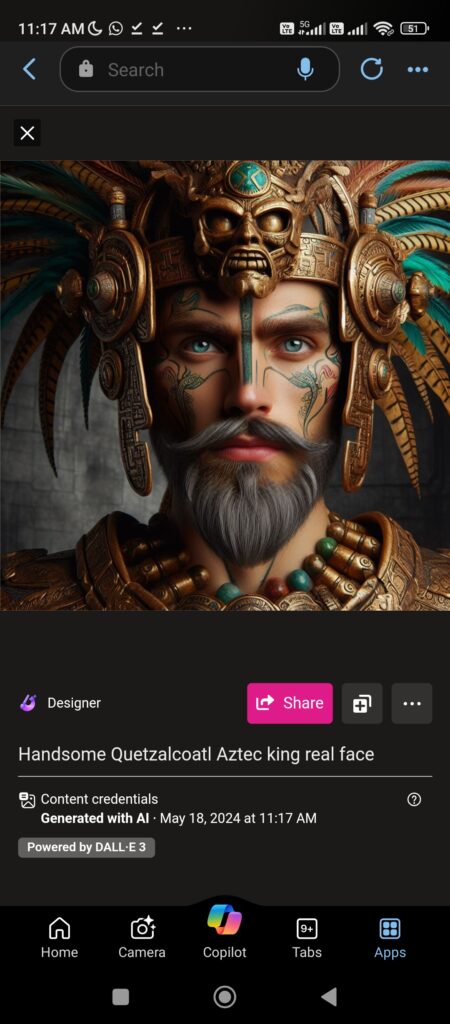

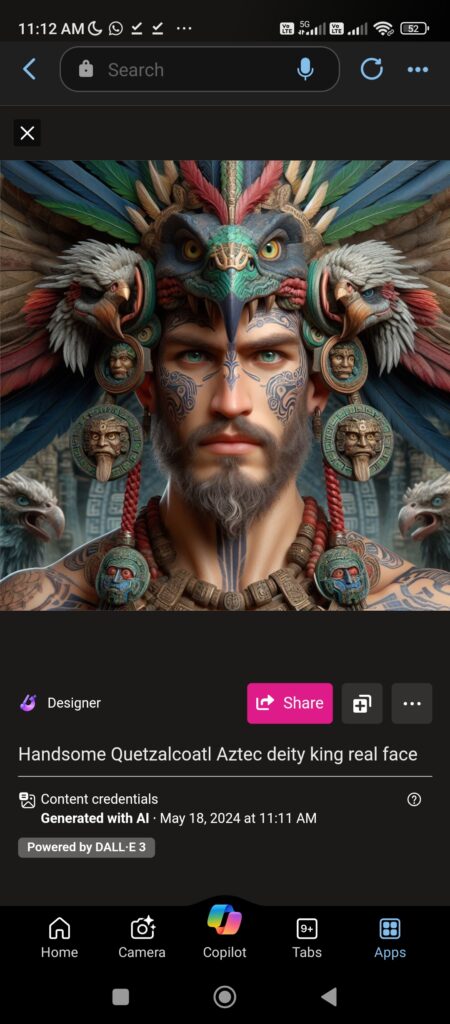
Face Transformation of Quetzalcoatl from youth to old age
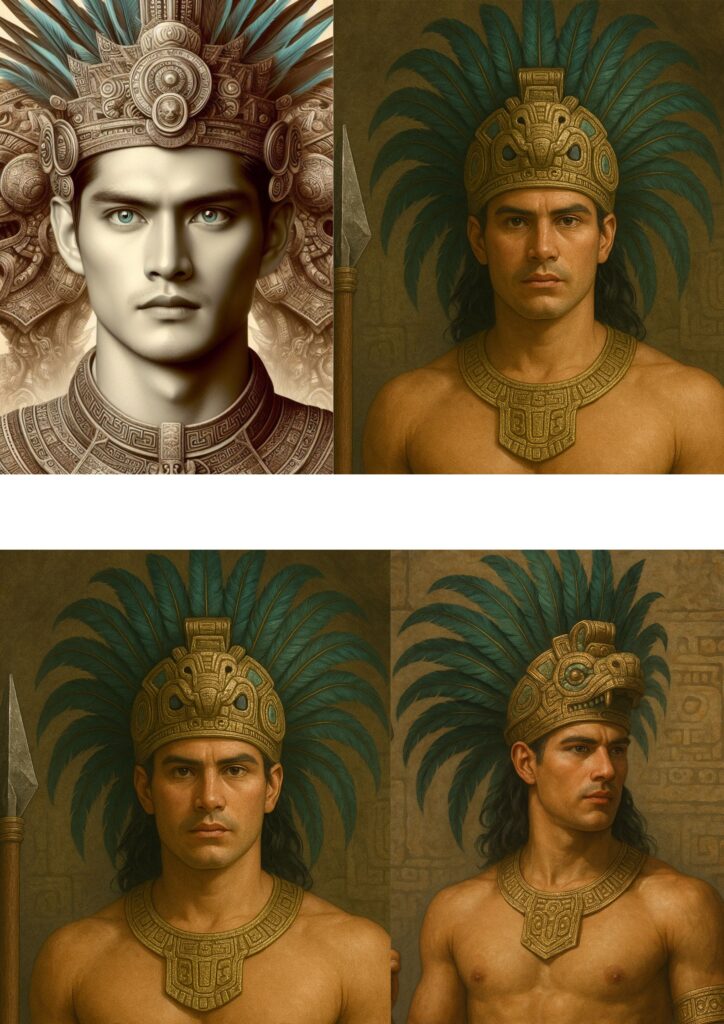
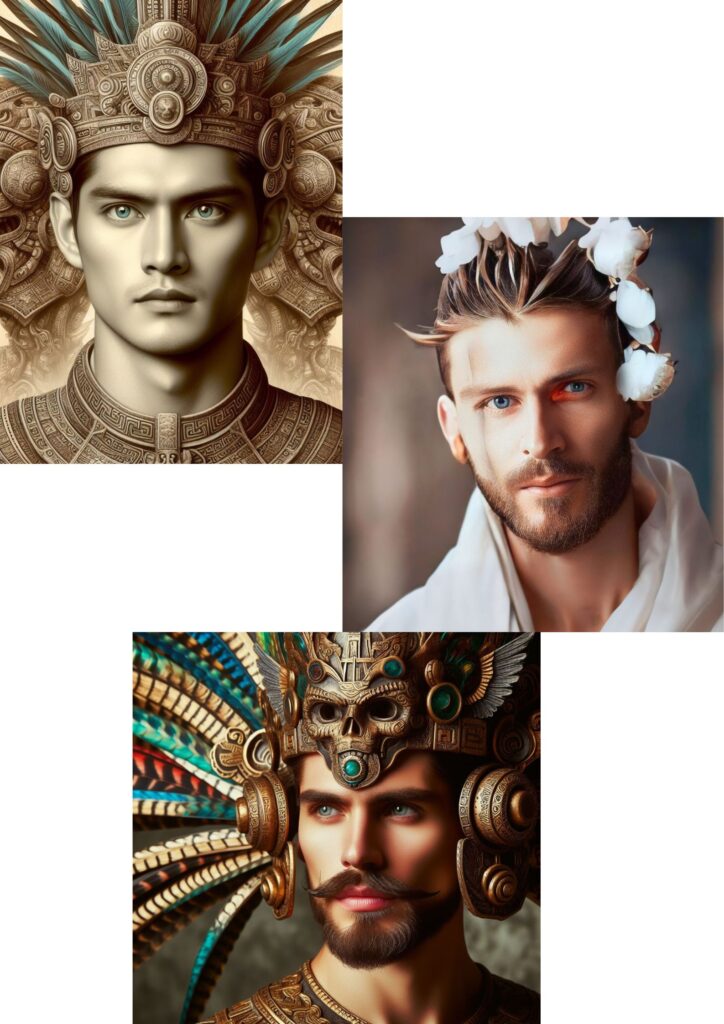
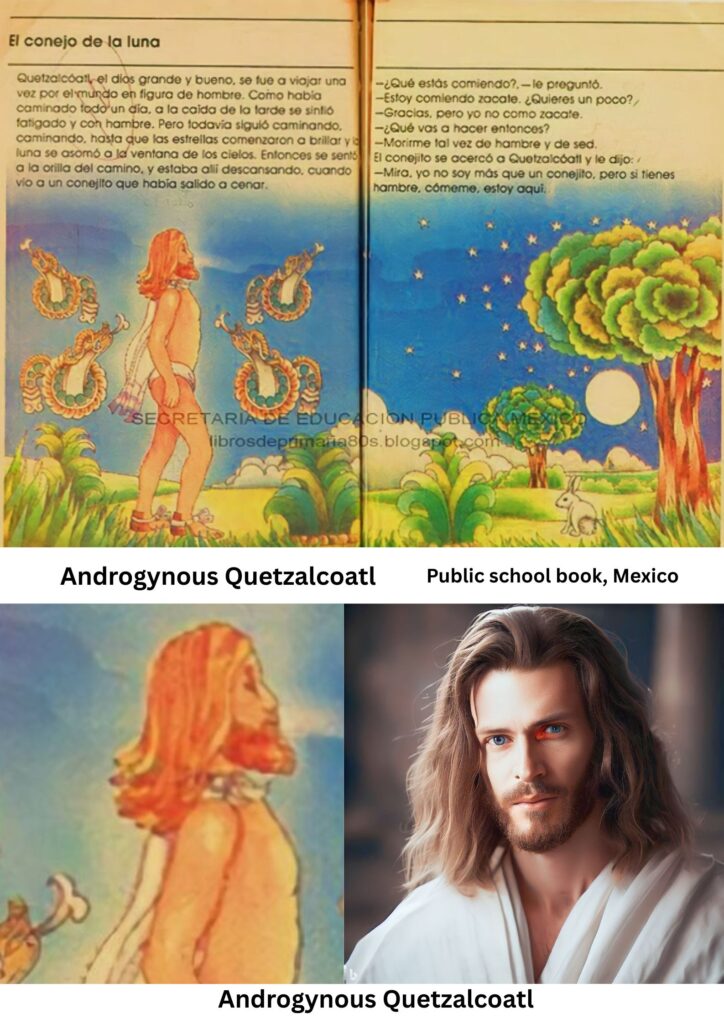
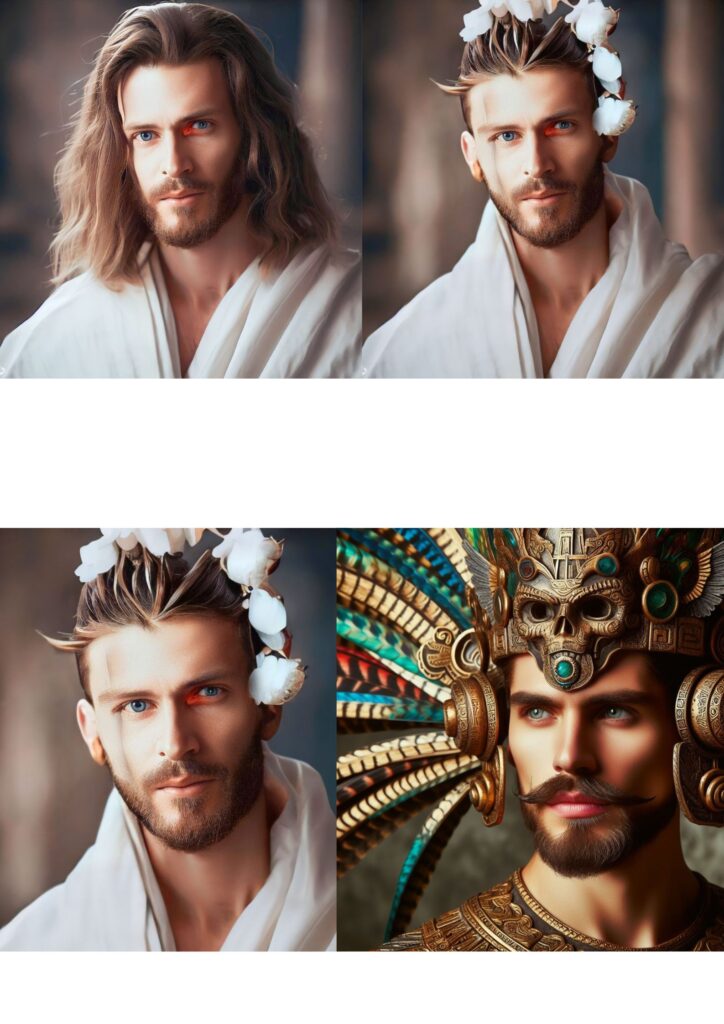
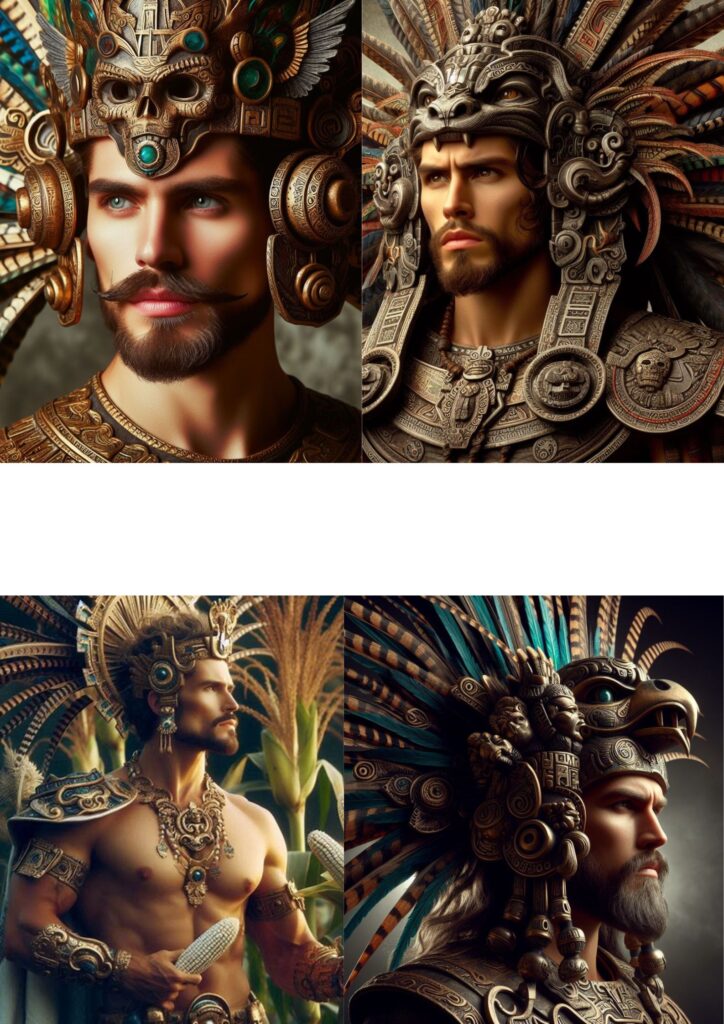
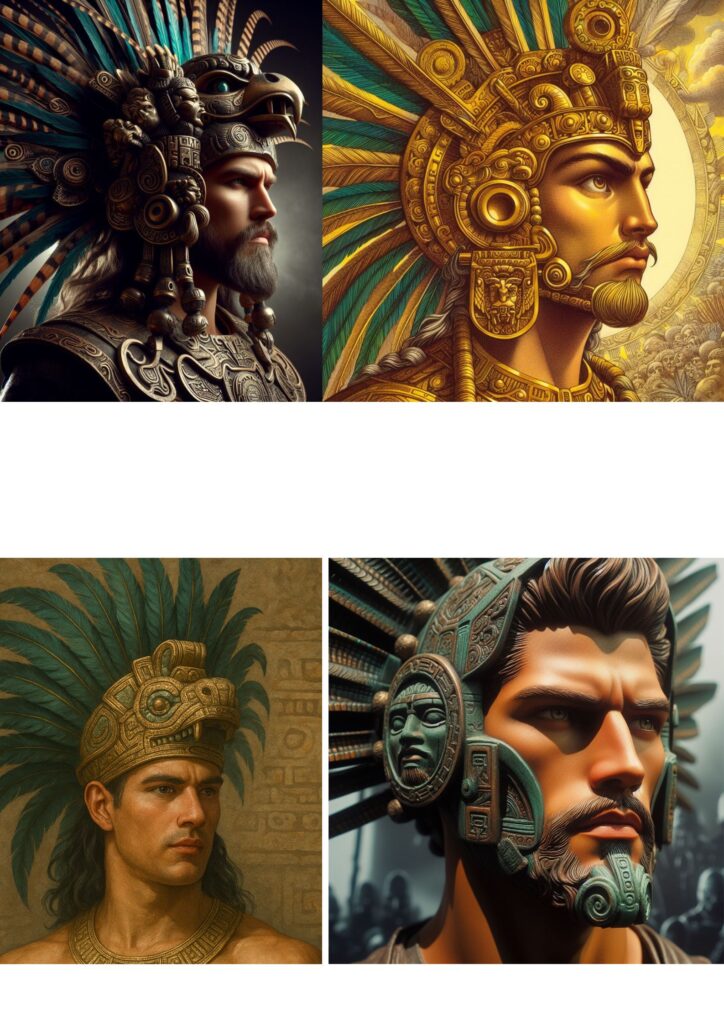
Face Comparison of Androgynous Quetzalcoatl with another possible birth of this Androgynous Dying and Rising authority
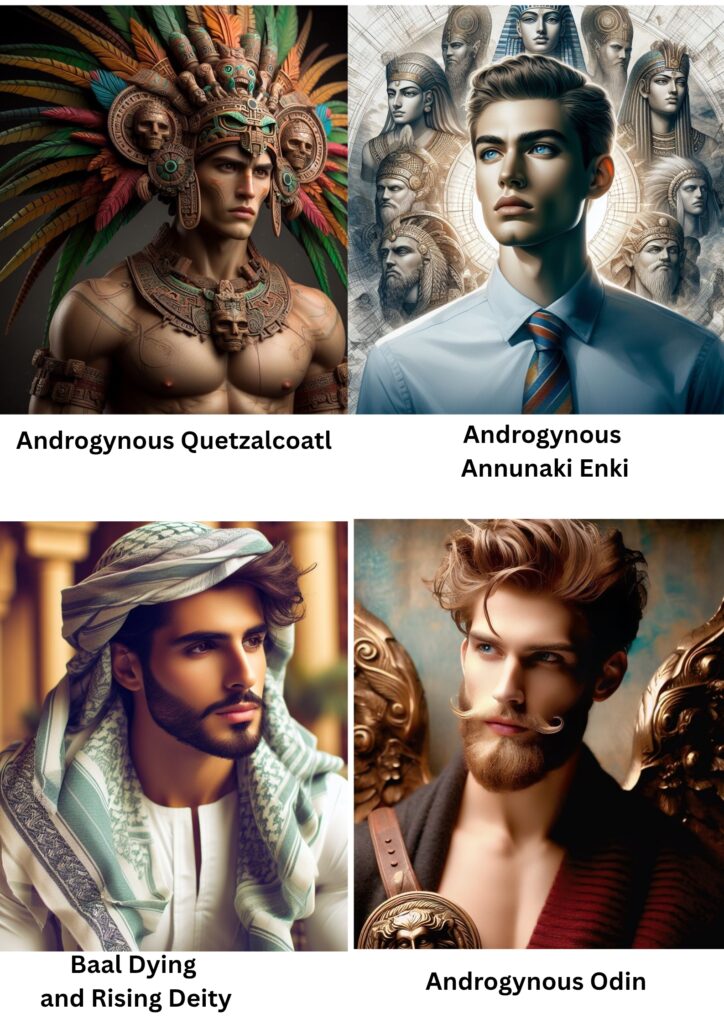
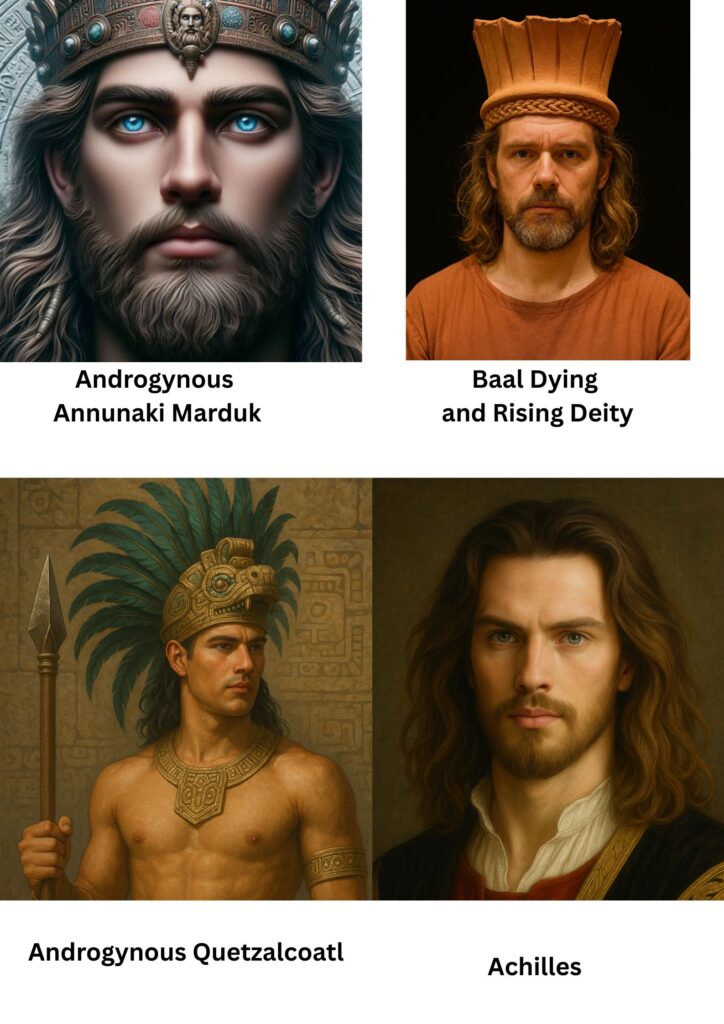
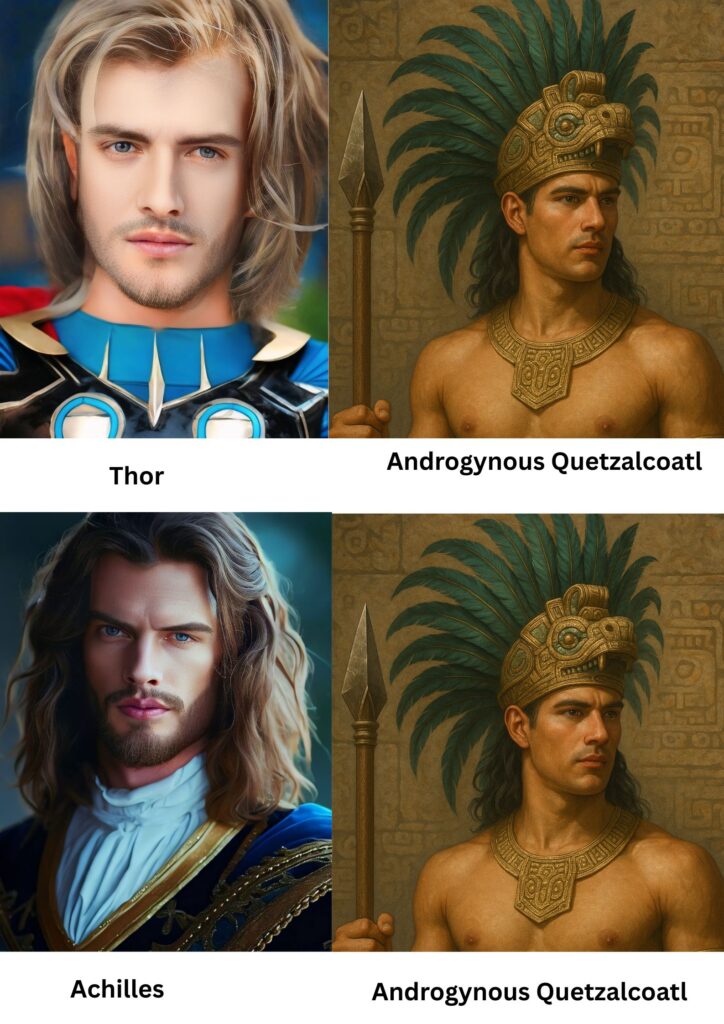
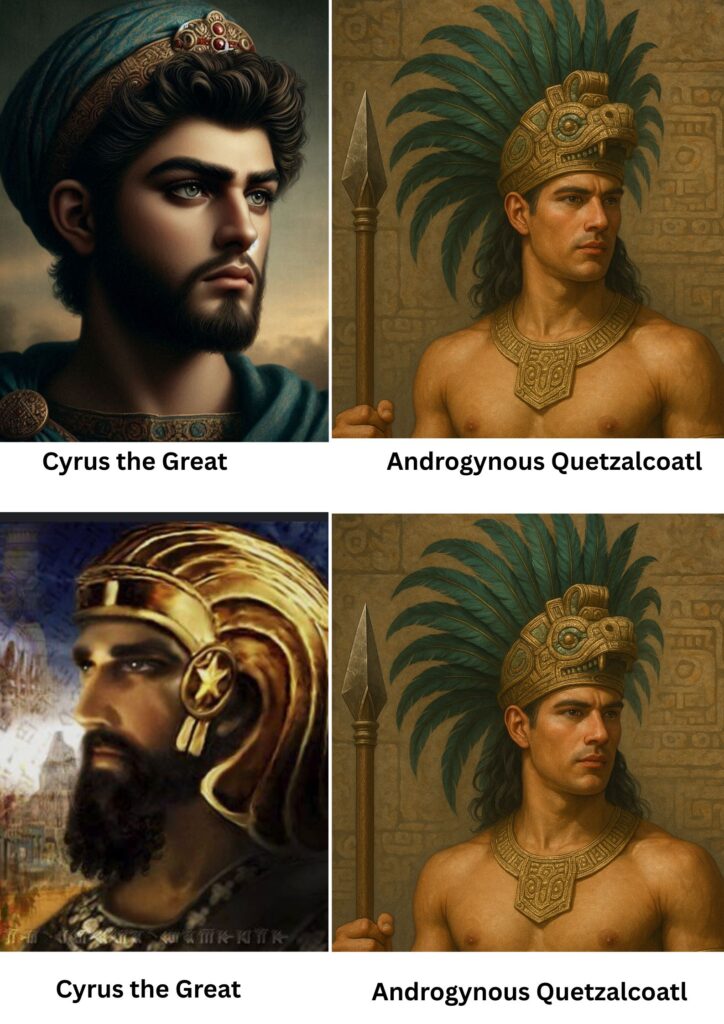
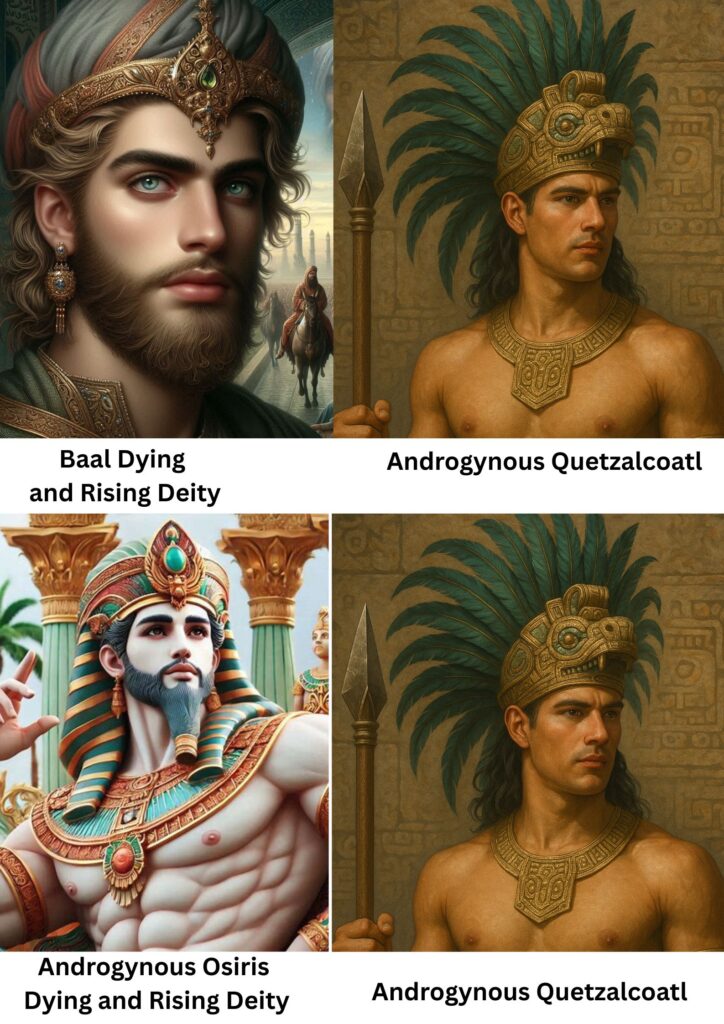
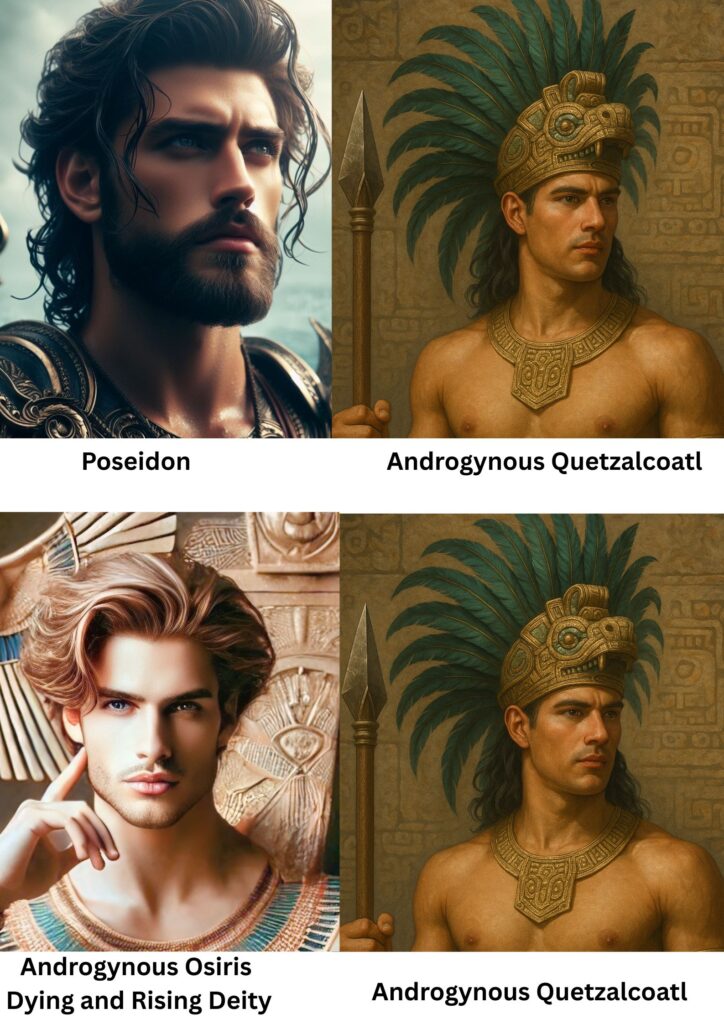
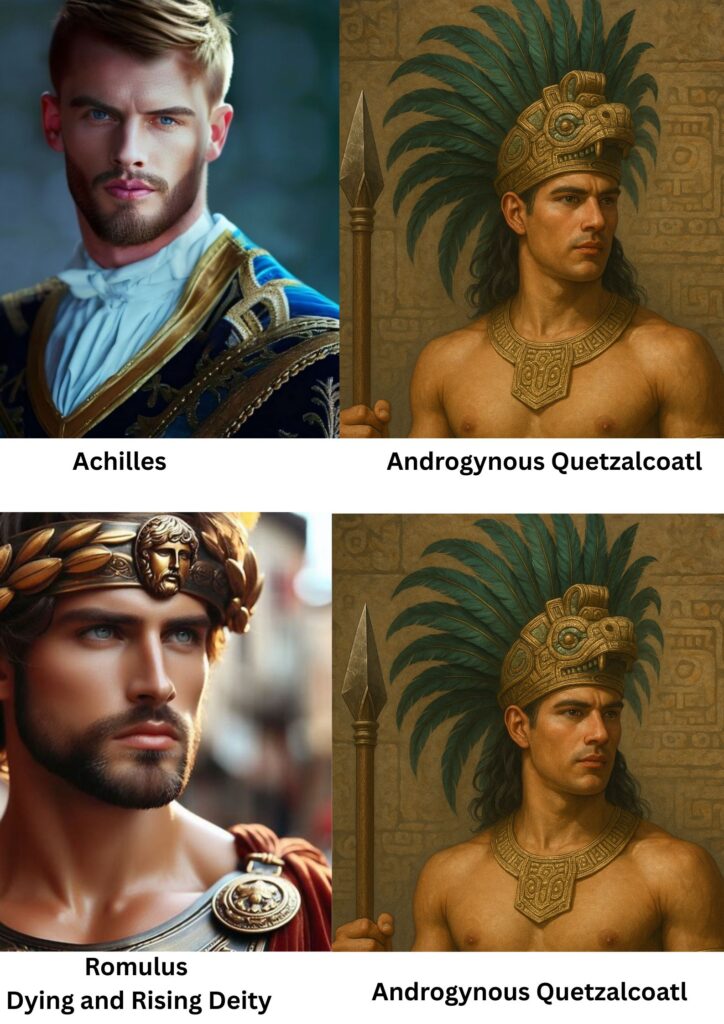
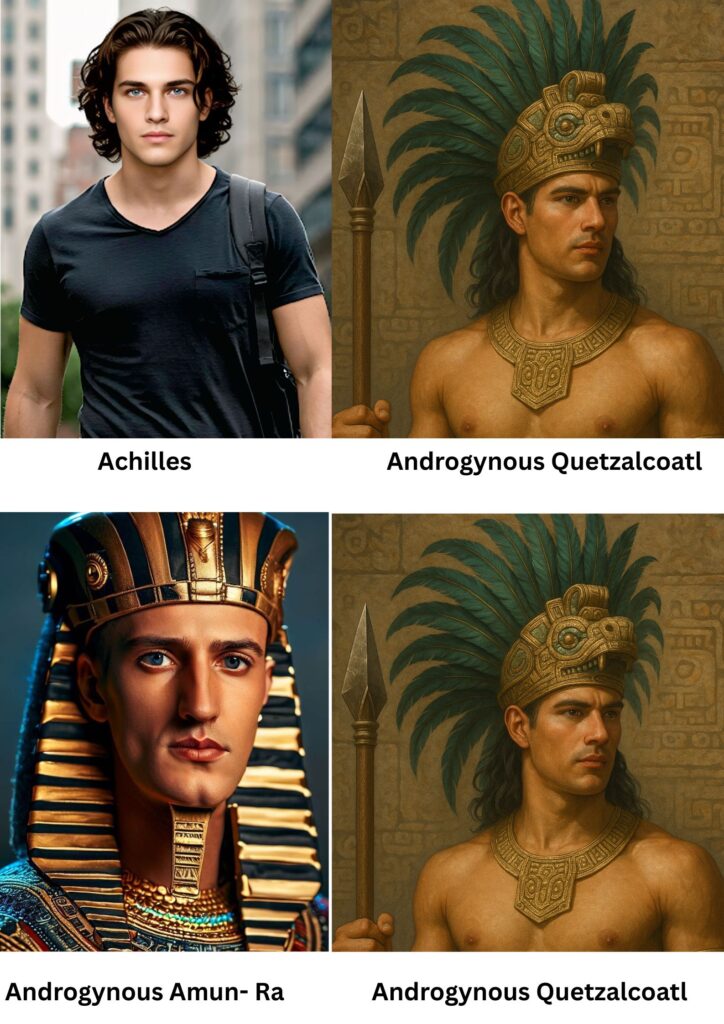
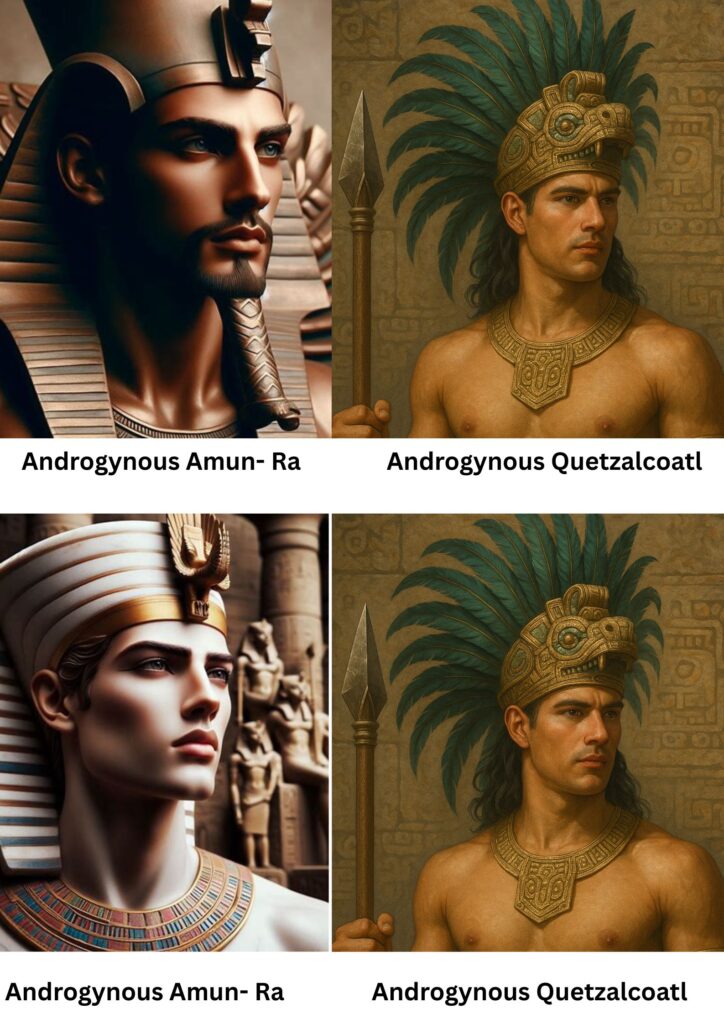

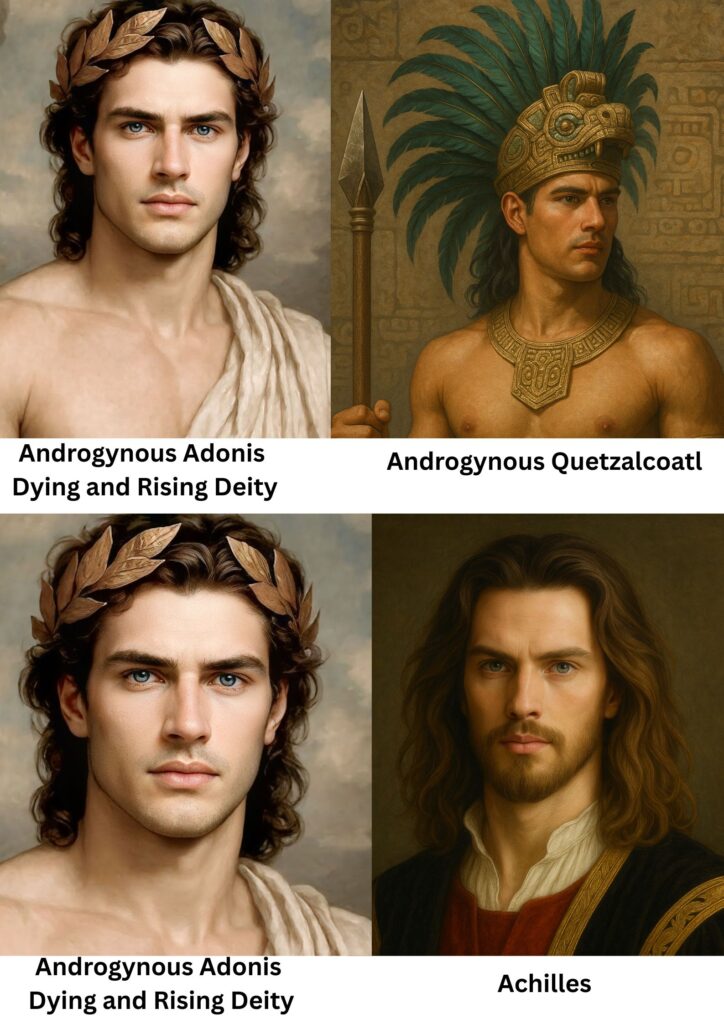
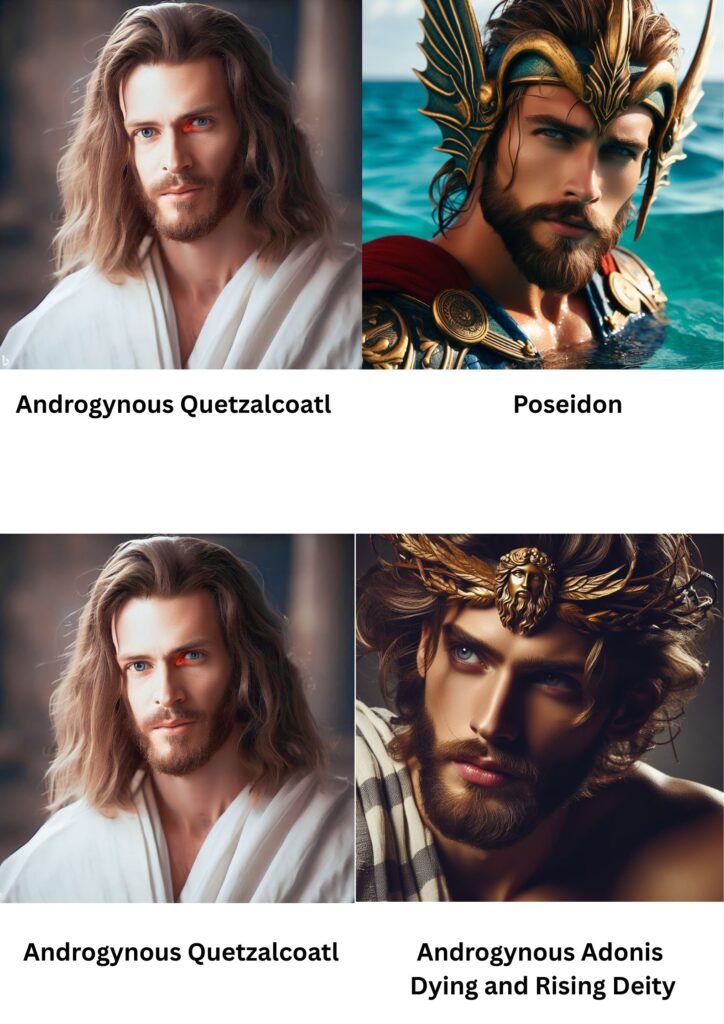
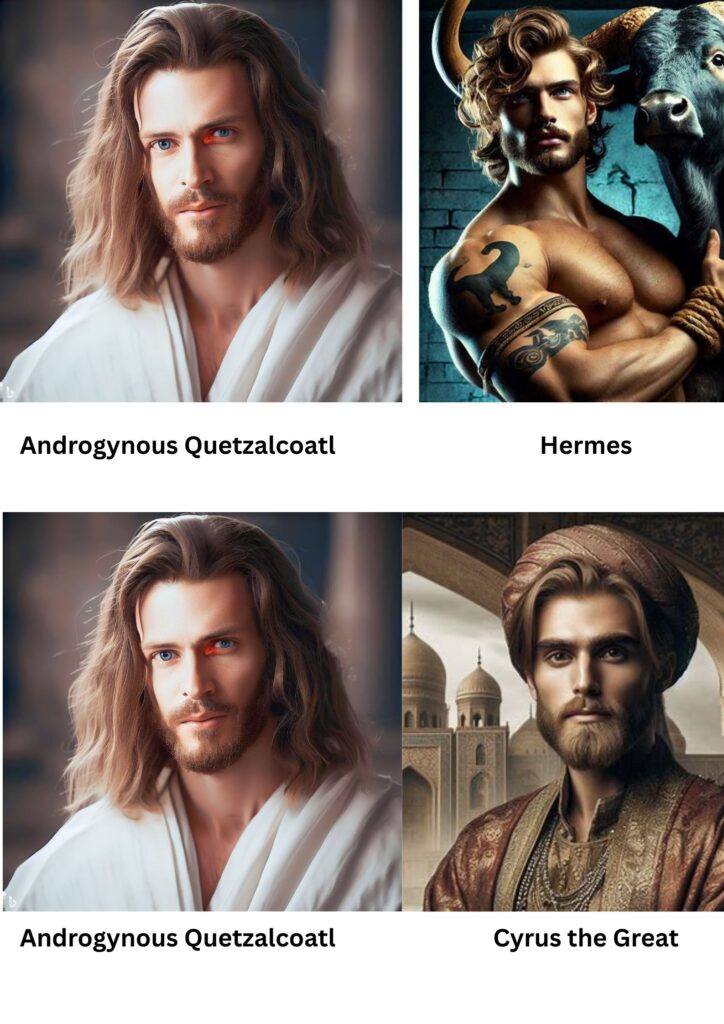

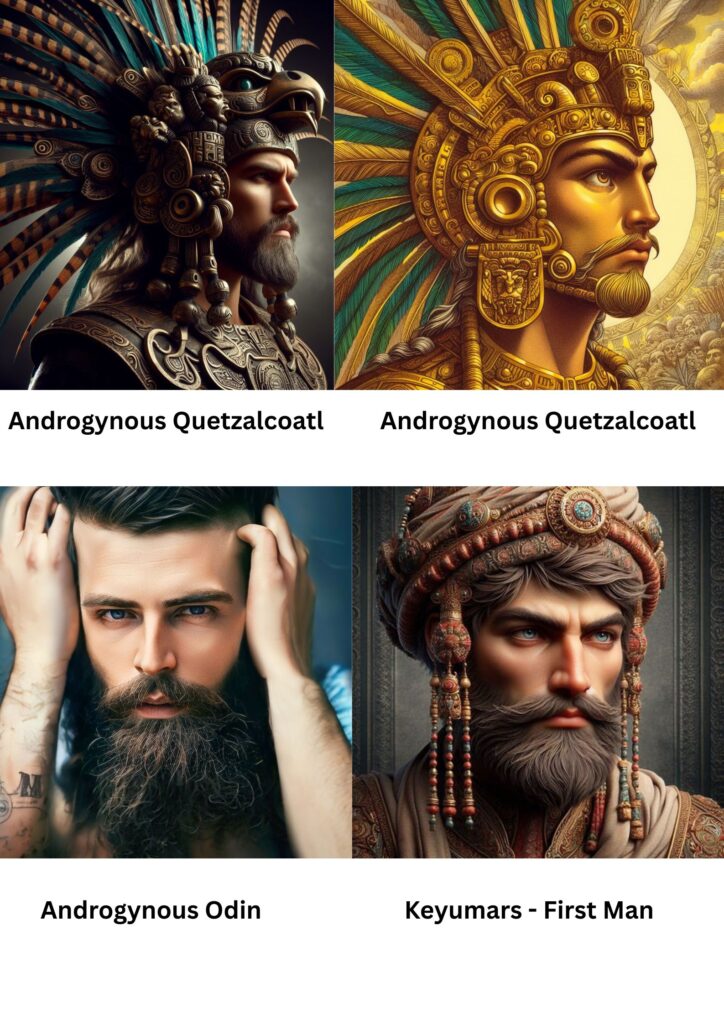
Androgynous Quetzalcoatl founder of Aztec civilization and known as a feather serpent Deity, he was known as a kukulkan by Mayans, kon-tiki Viracocha by inca, and known as a Equivalent Deity, was he the same Androgynous dying and rising authority, as well as his face match with another possible birth of this androgynous dying and rising authority, is yet remains and unsolved mystery.
Alien Manco Capac
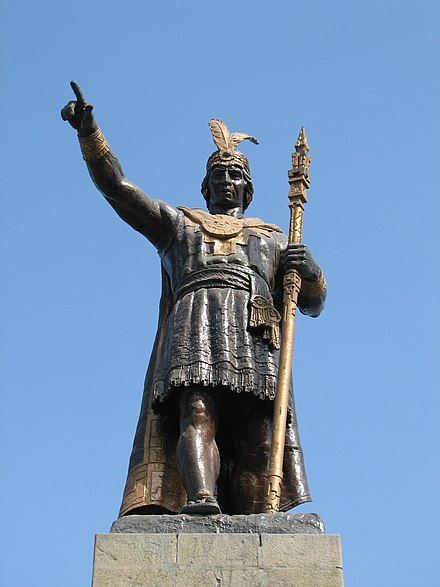
Monument of Manco Capac
AgainErick CC BY SA 3.0
Incan legends say Manco Cápac was the son of the sun god,
● He was sent by his father the sun god, to the earth to save people from wildness and barbarity, teach them agriculture and crafts, “the creator of the world”.
● Based on the legends, Manco Cápac ruled the country for about forty years.
● Achievements of Manco Capac- introduced a code of laws, and supposedly abolished human sacrifices.
● The Inca had a sophisticated civilization with successful agricultural practices, an impressive army, and complex religious and social structures.
● The Inca emperor was considered to be a descendant of the sun god Inti, one of many gods in the Inca pantheon, and held much power among his people. According to legend, Manco Capac was the founder and first emperor of the Inca.
● Manco Capac was believed to be the son of Inti the sun god and Mama Quilla, the goddess of the moon. He was considered to be a fire and a sun god like his father. Although Manco Capac is considered the first Sapa Inca, or sole ruler of the Inca, many varied myths describe Manco Capac’s rise to power and his founding of the Inca capital Cuzco.
● According to one story, Manco Capac was sent to Earth by his father to establish a civilised center for human progress. So Manco Capac emerged from the underworld, carrying a golden staff known as a tapac-yauri. His father told him that this golden staff would lead him to the ideal location for his city, as well as a site for a temple dedicated to Inti. So Manco Capac went on a wild goose chase through the Andes Mountains and surrounding valleys. Finally, he came across a lovely valley, and when he thrust his golden staff into it, it sank in without a struggle. This was the indication he had been told to look for. So Manco Capac built his city in this spot and named it Cuzco.
He taught them how to plant crops, make tools, weave cloth, make weapons and defend themselves. Over time, additional tribes gathered around Cuzco and Manco Capac rose over them as the first Sapa Inca.
● As ruler of the Inca, Manco Capac set up a code of laws, which some believed abolished human sacrifice
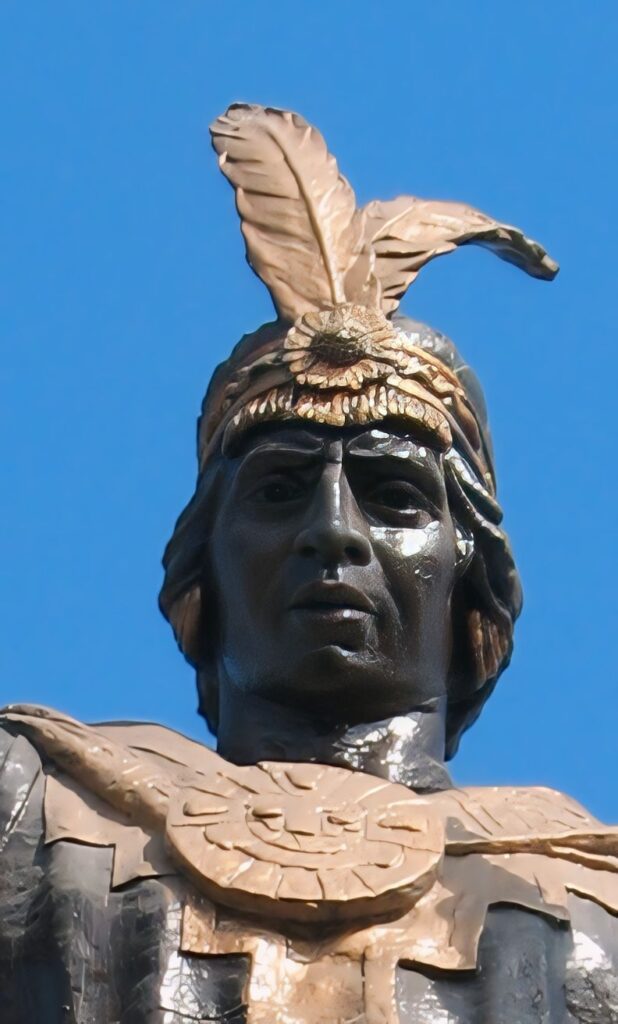
AgainErick CC BY SA 3.0
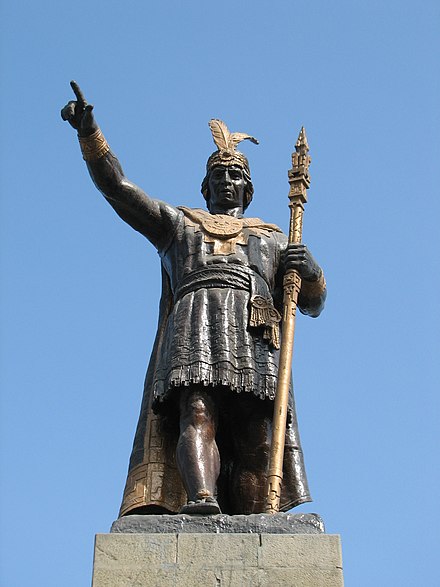
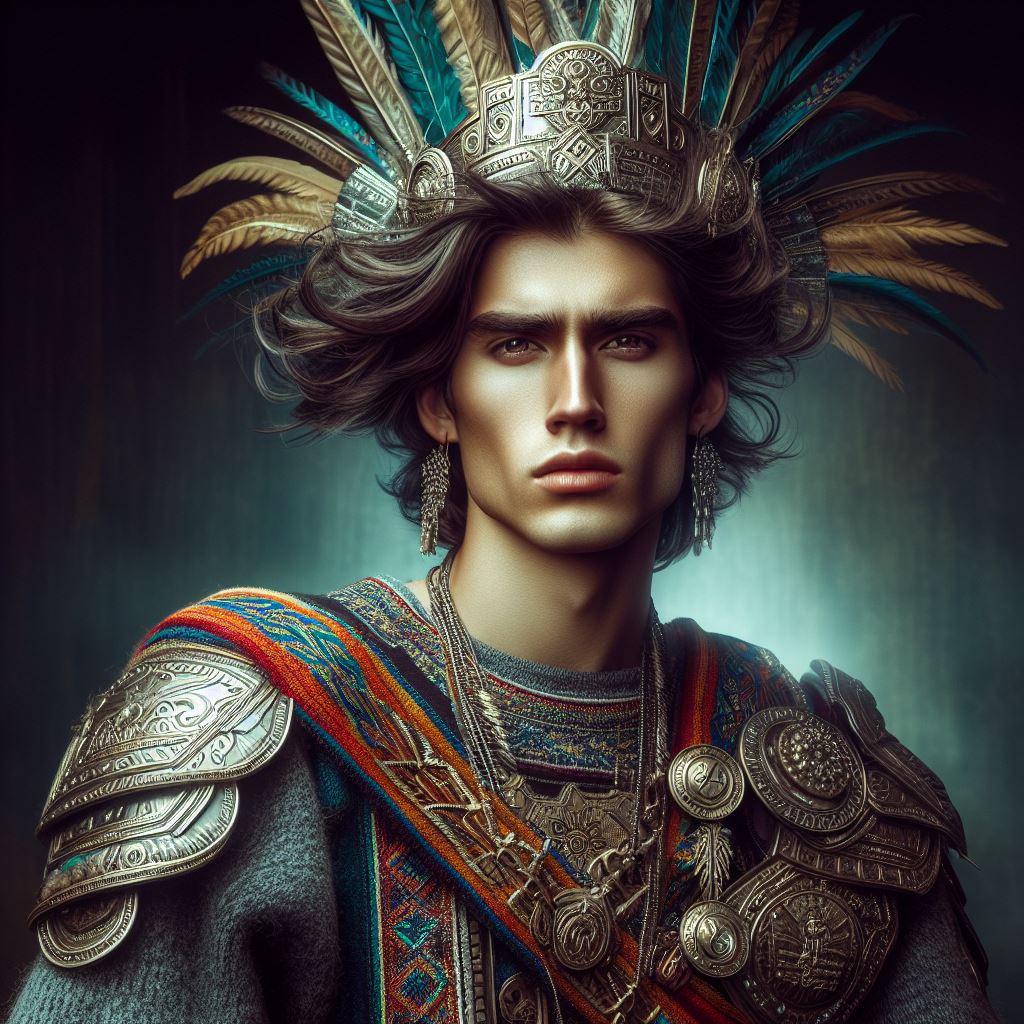
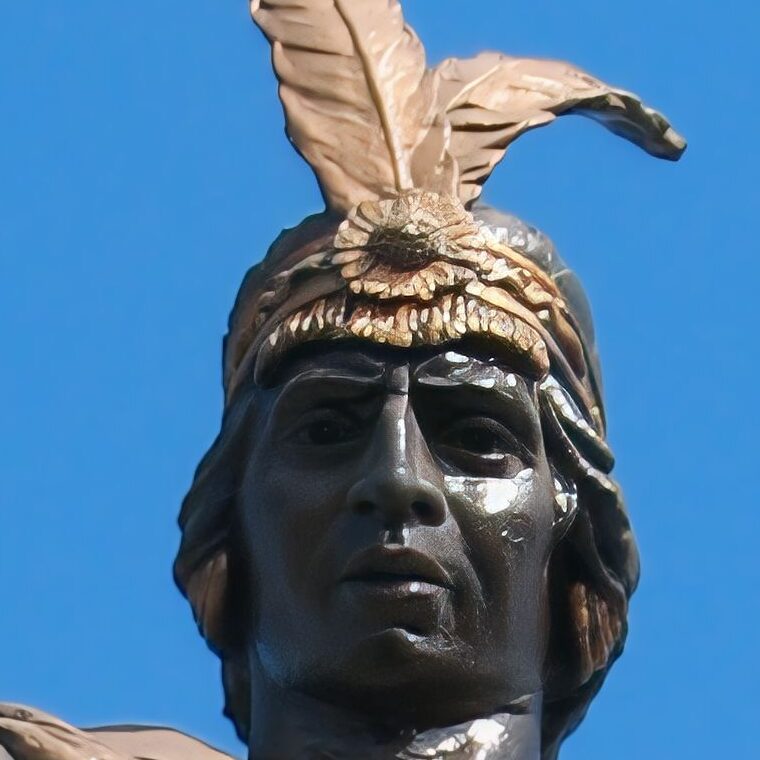
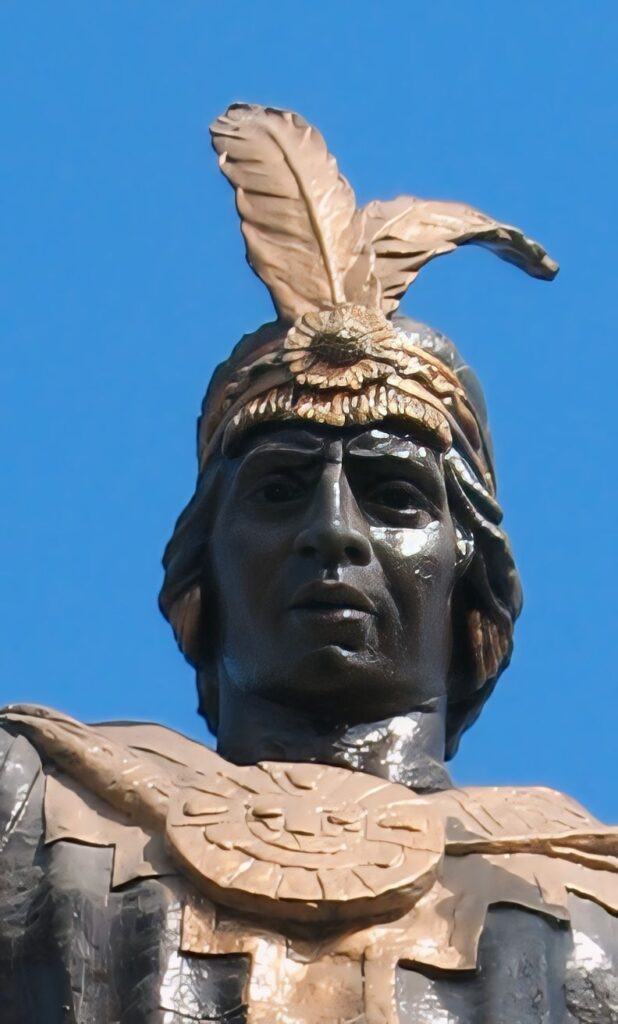

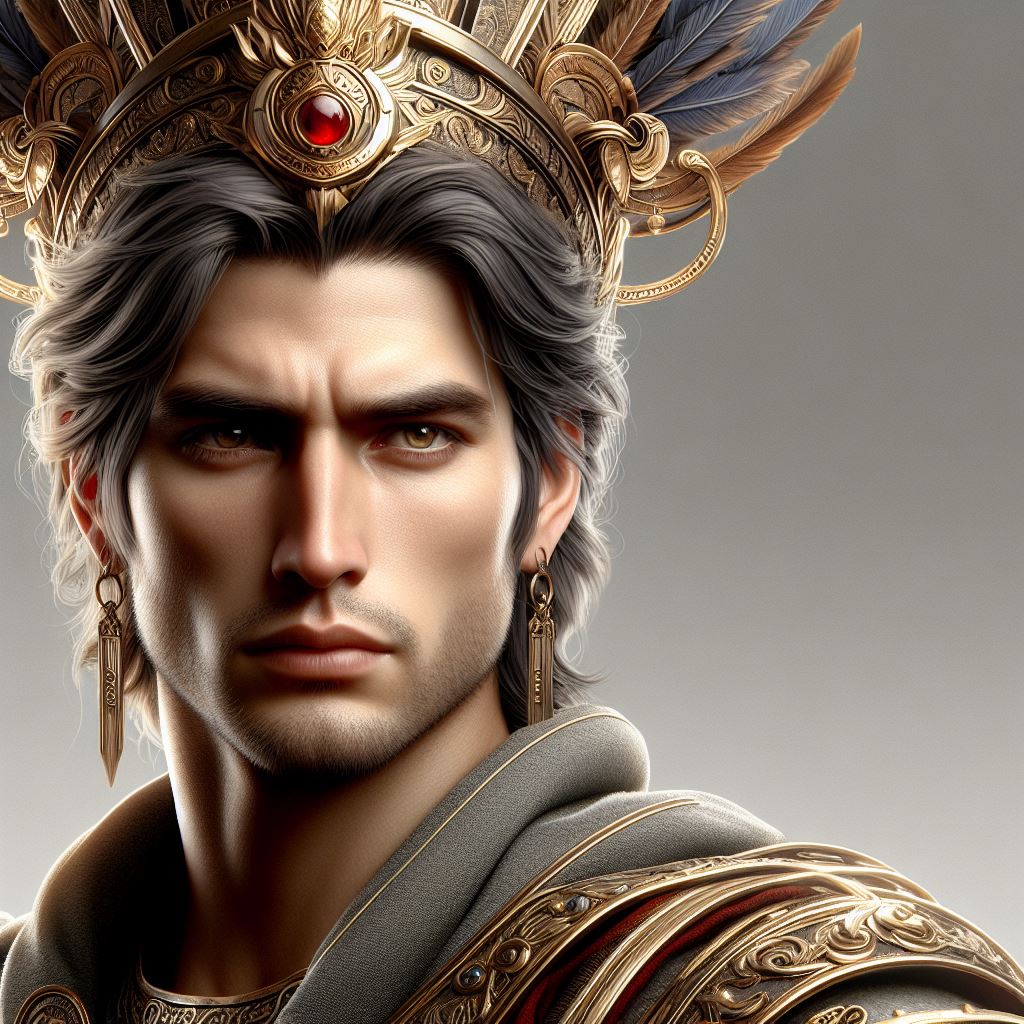
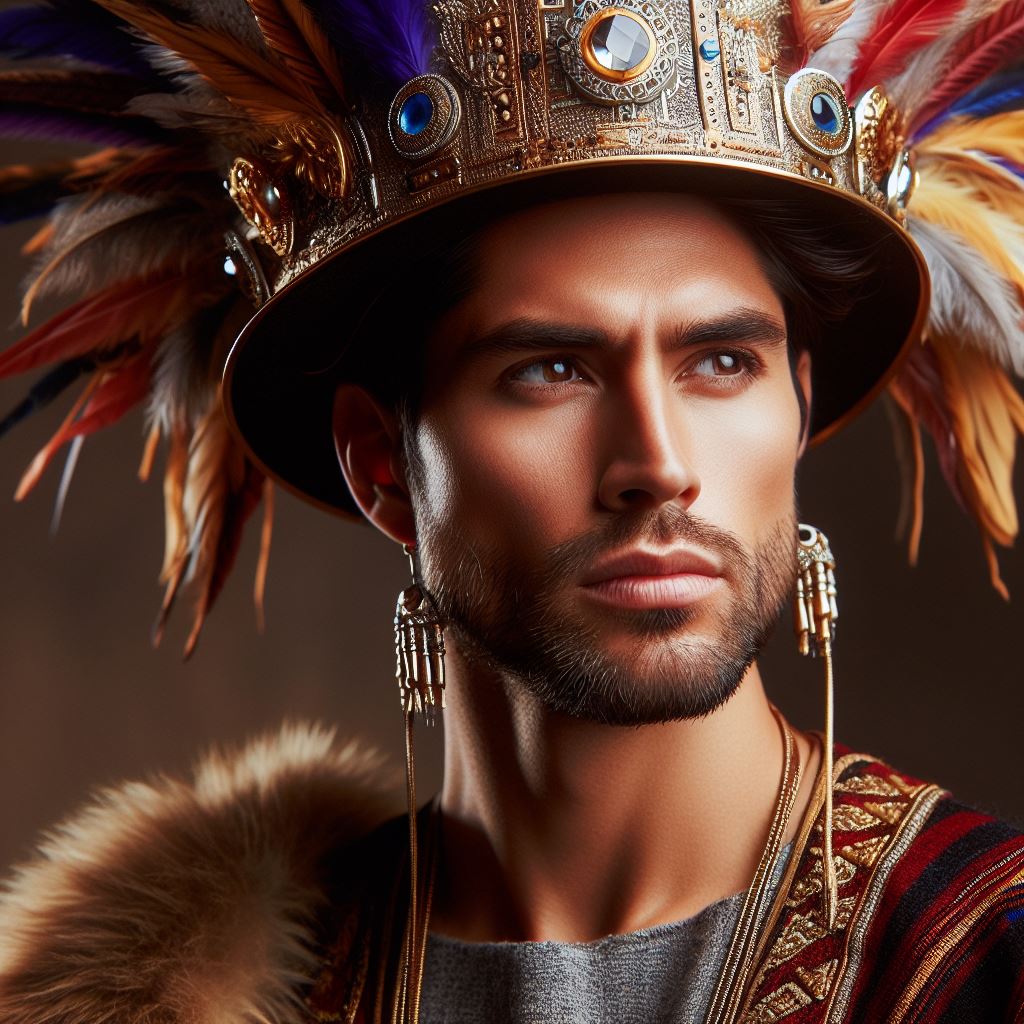


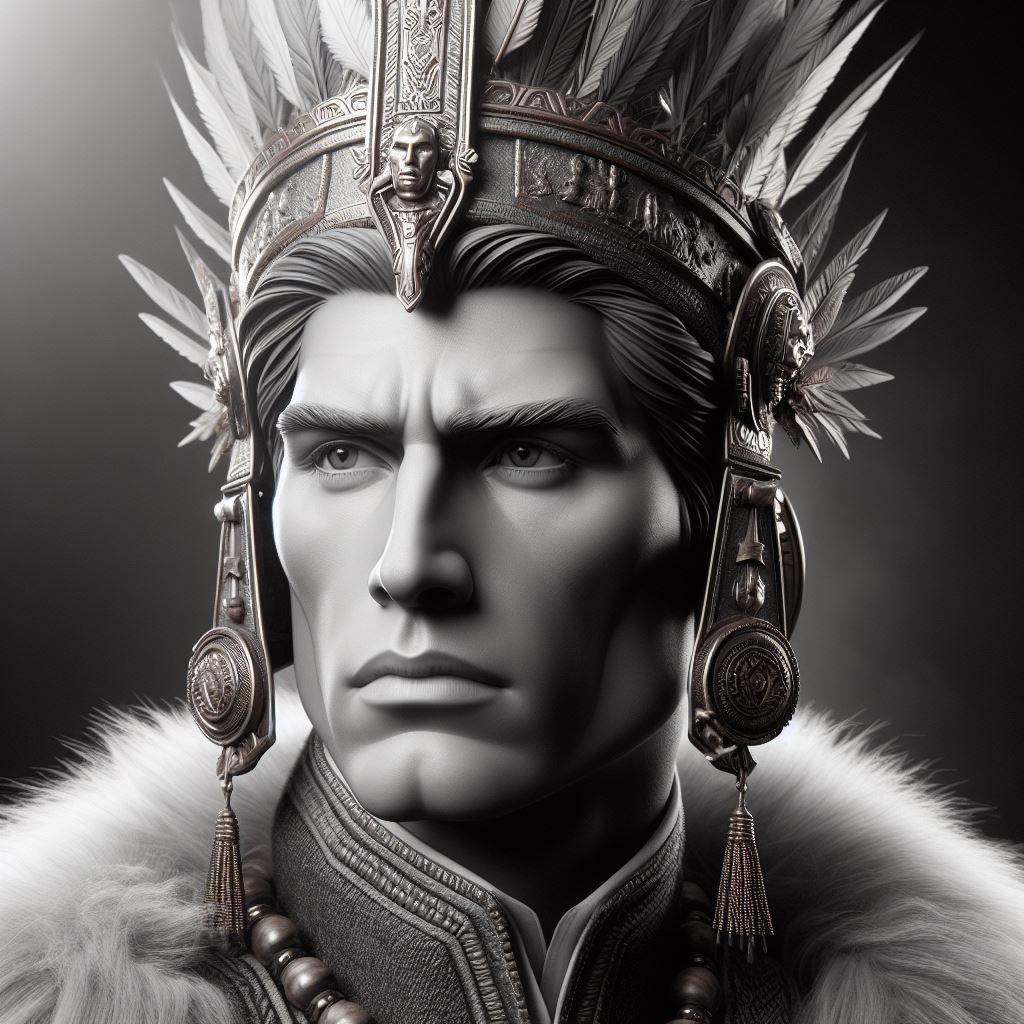
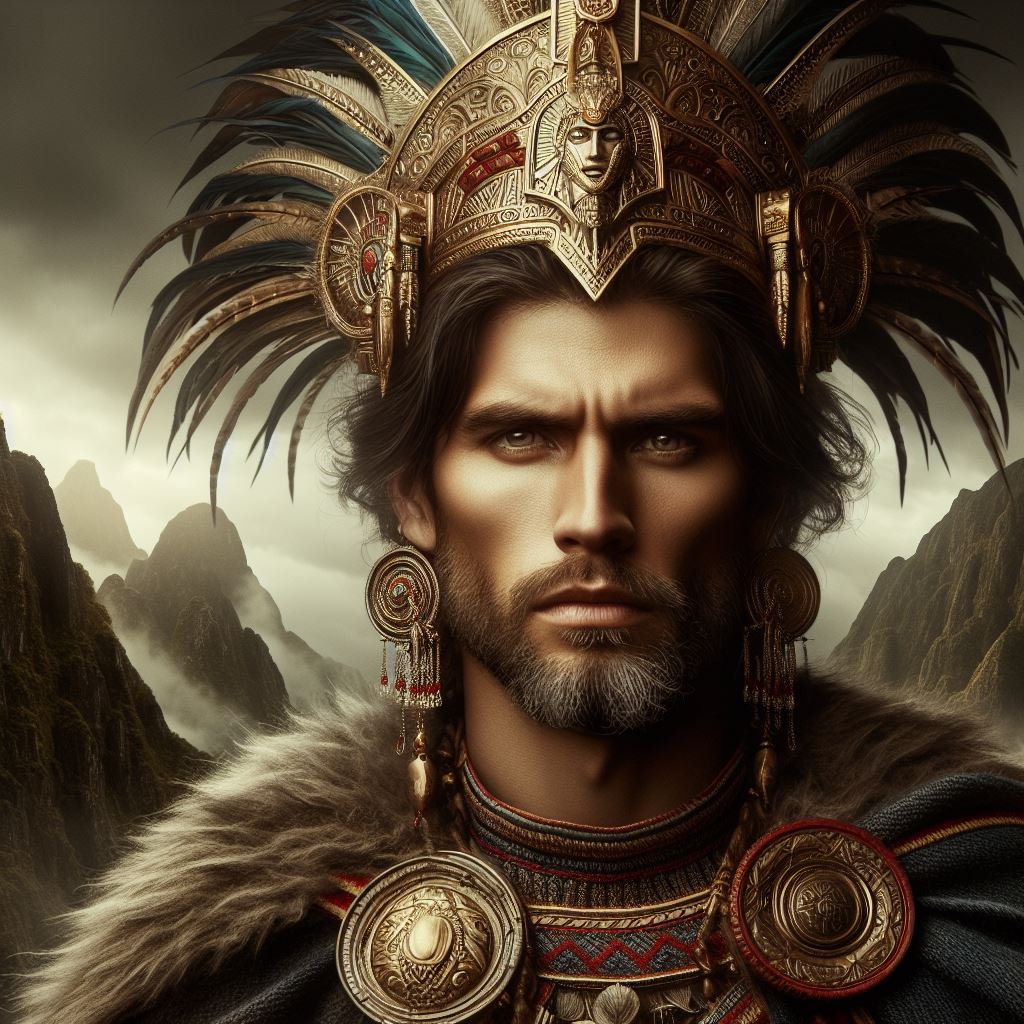
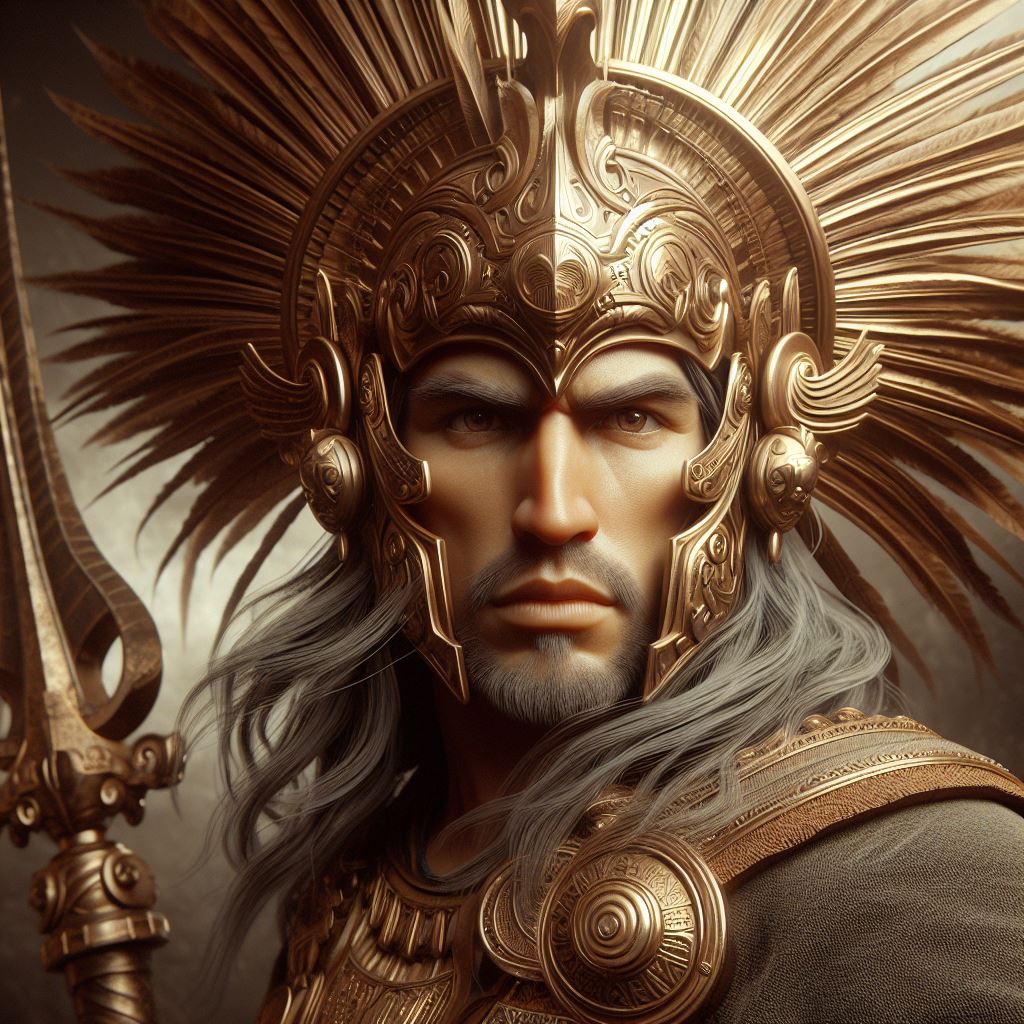
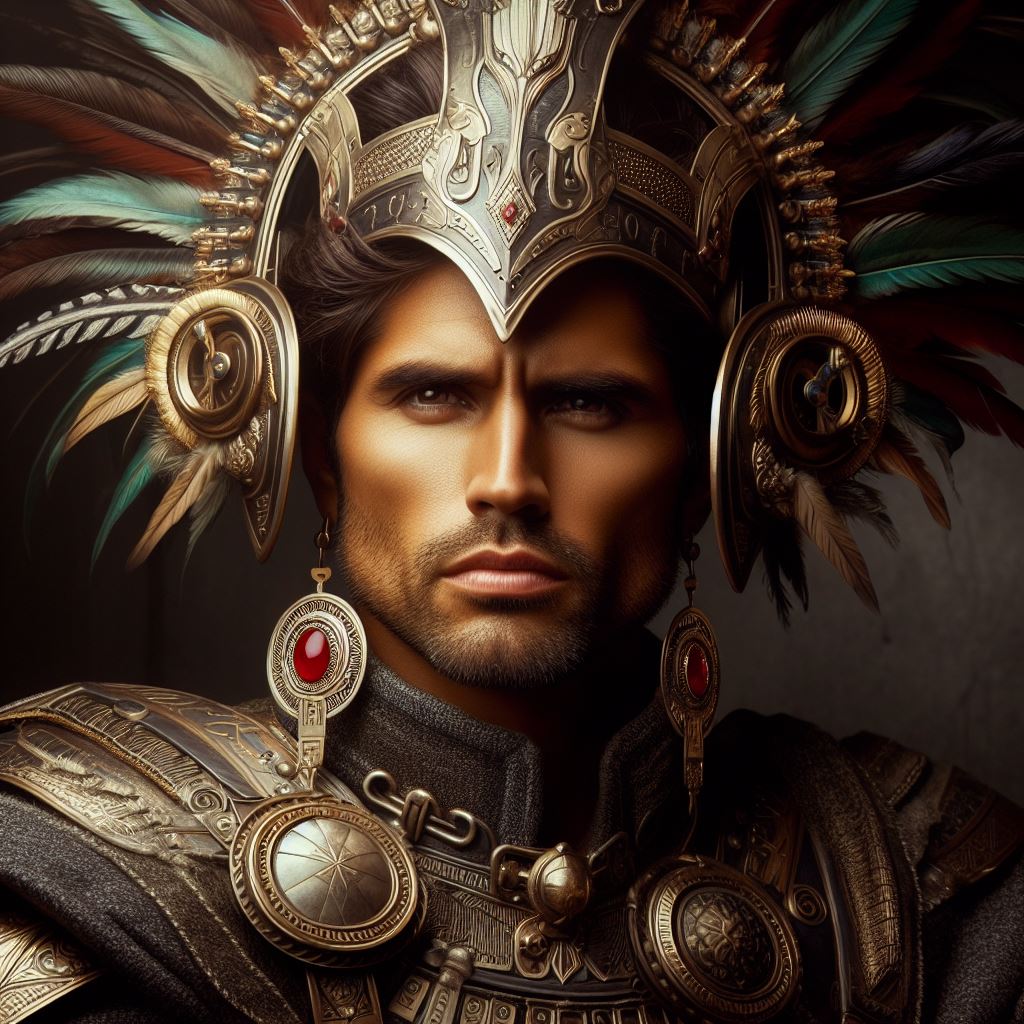
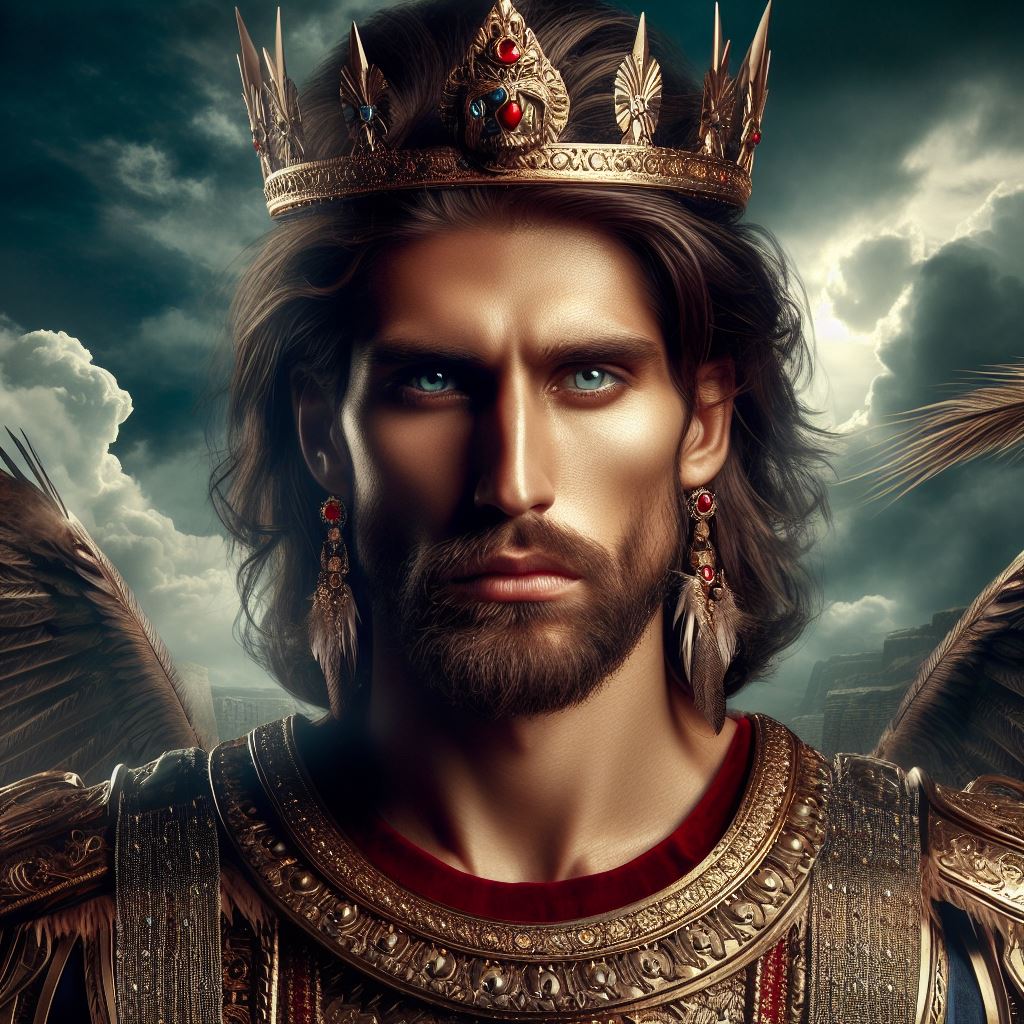
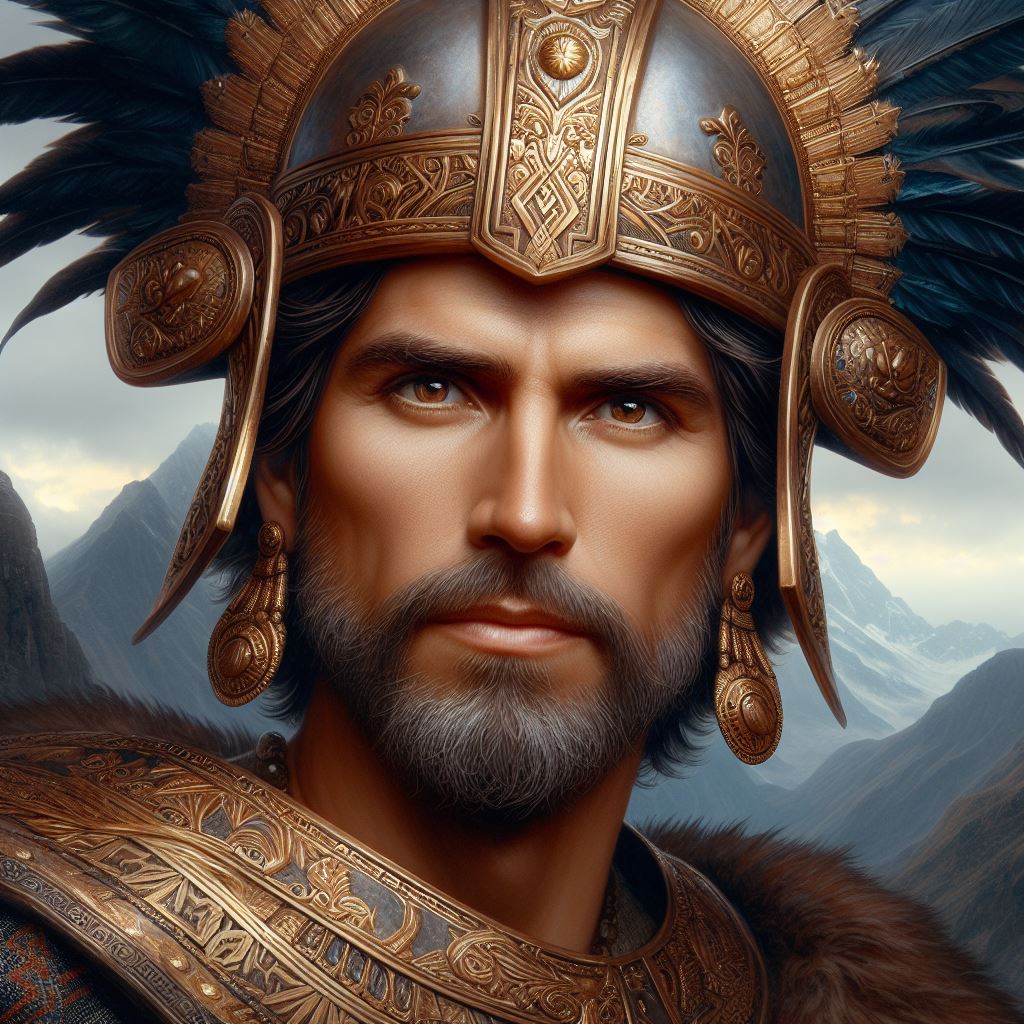
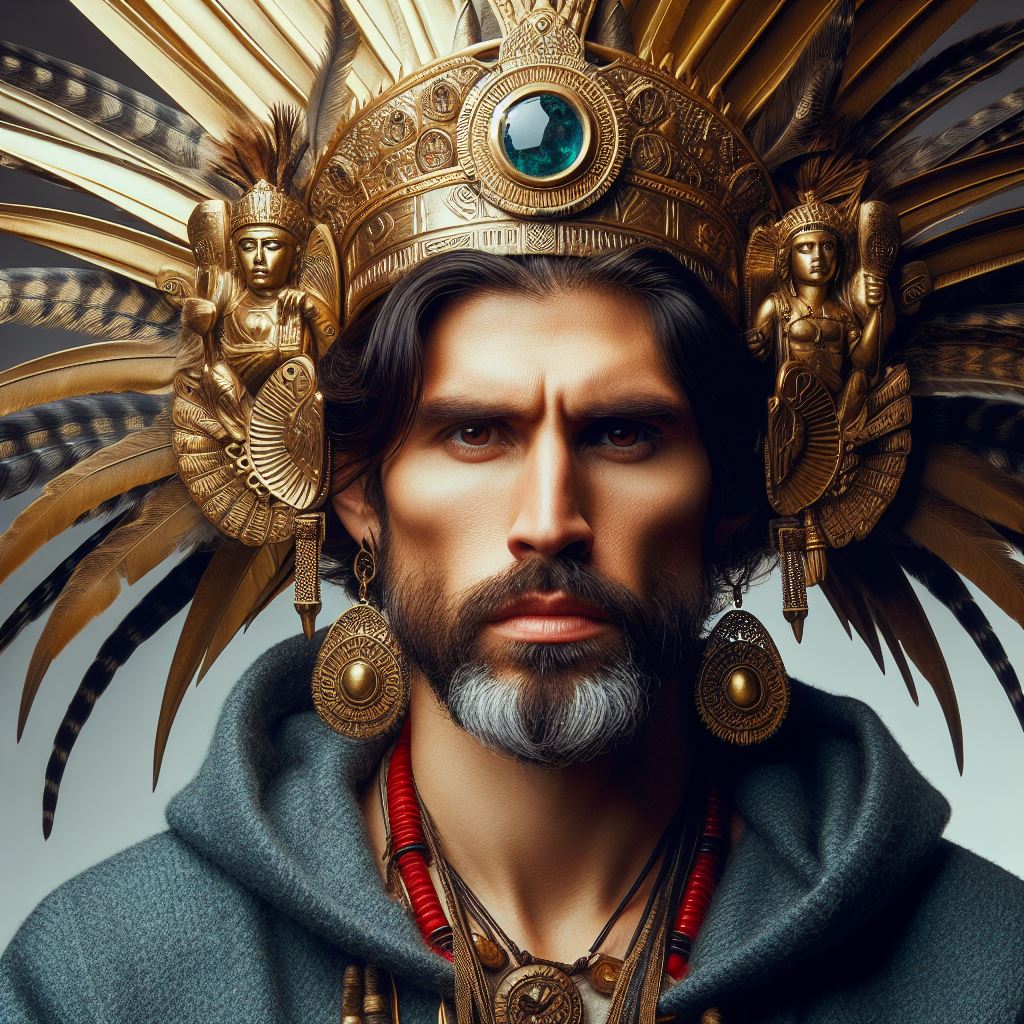
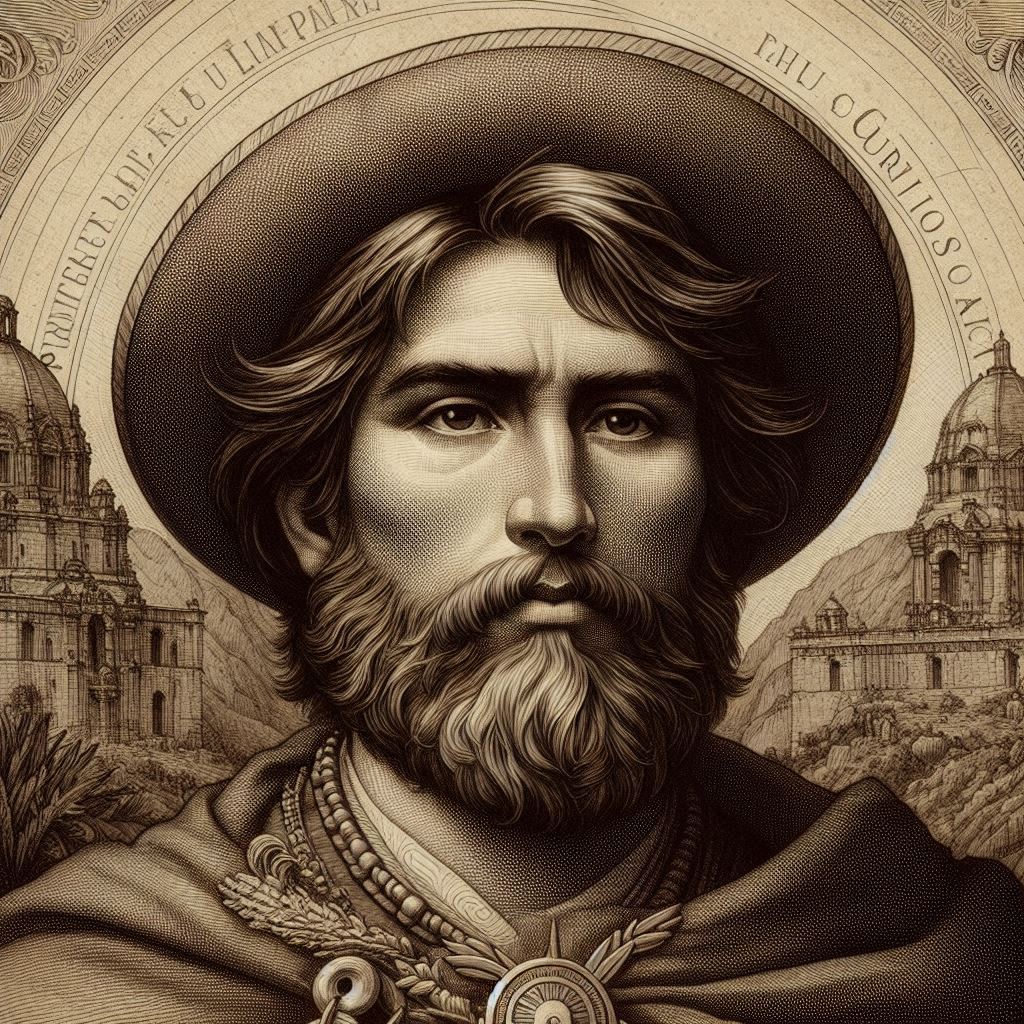
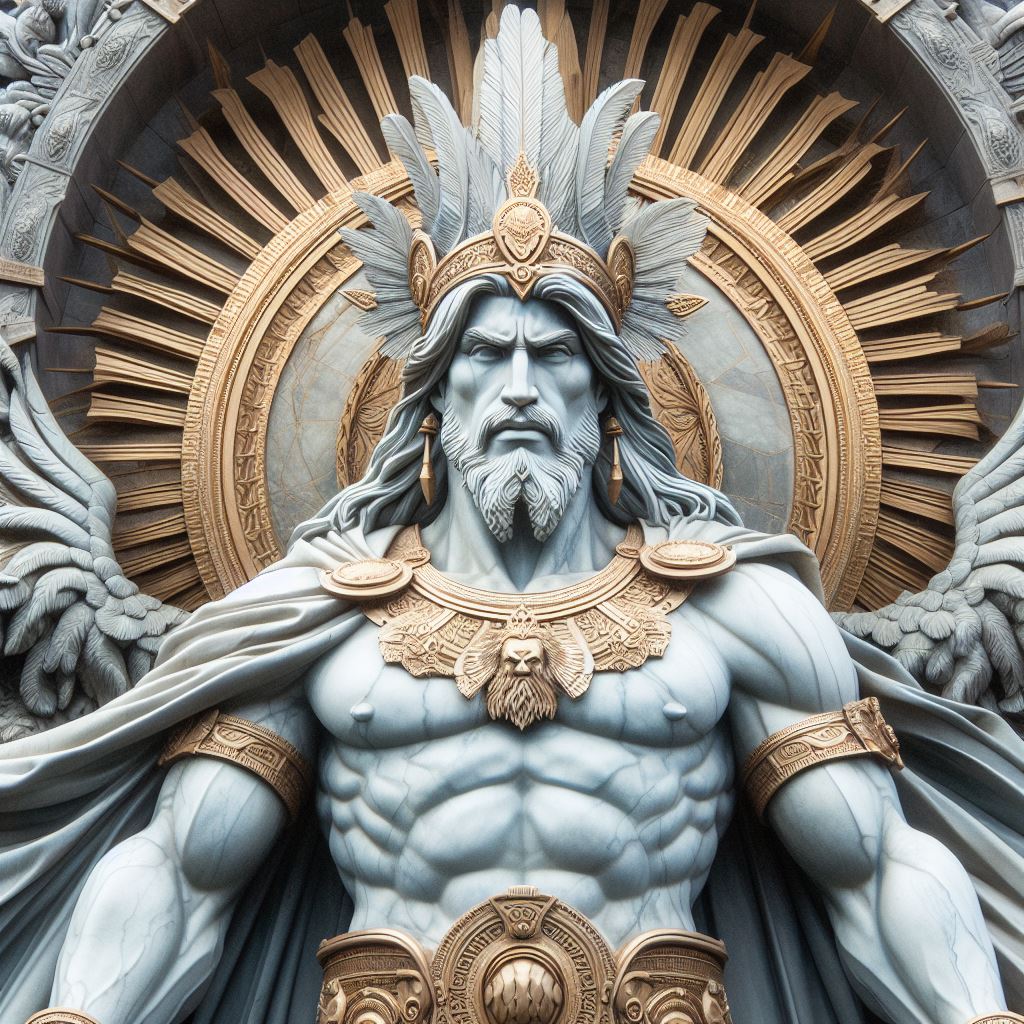
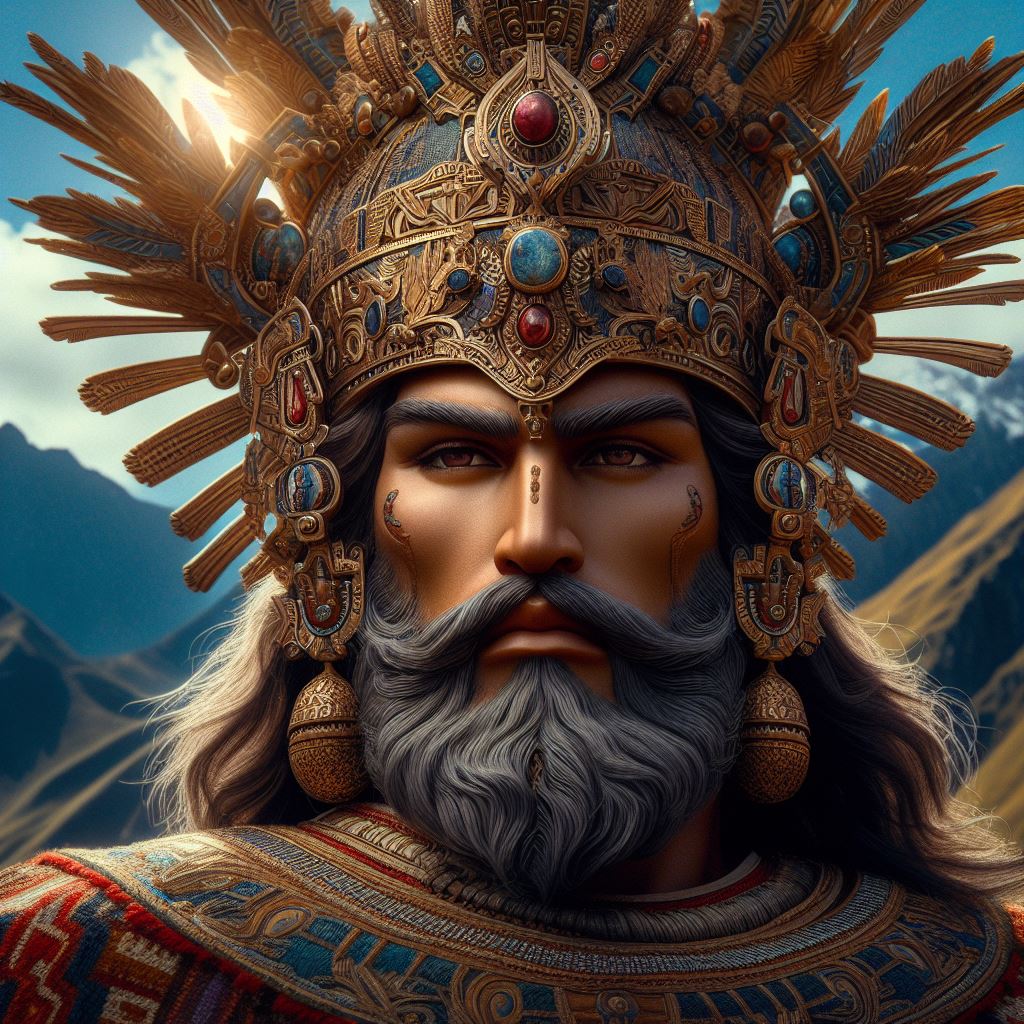
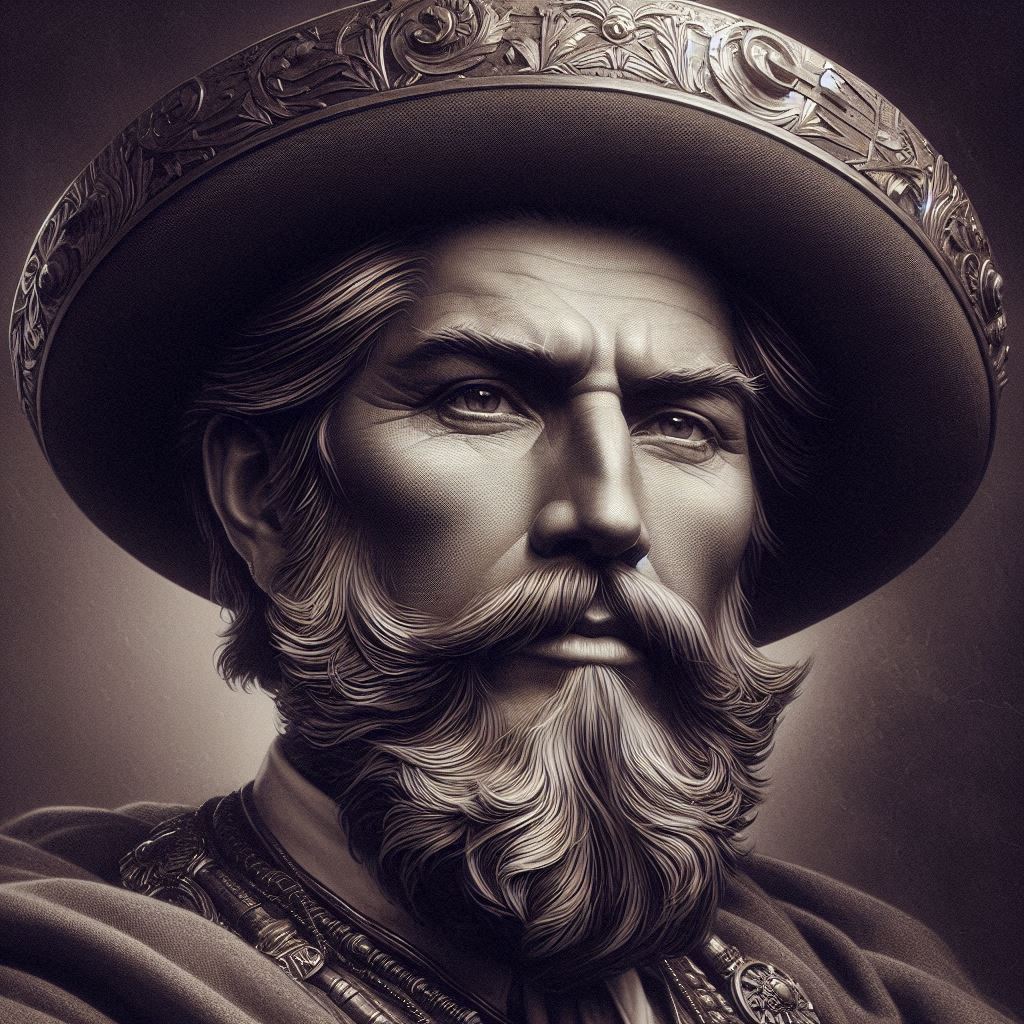
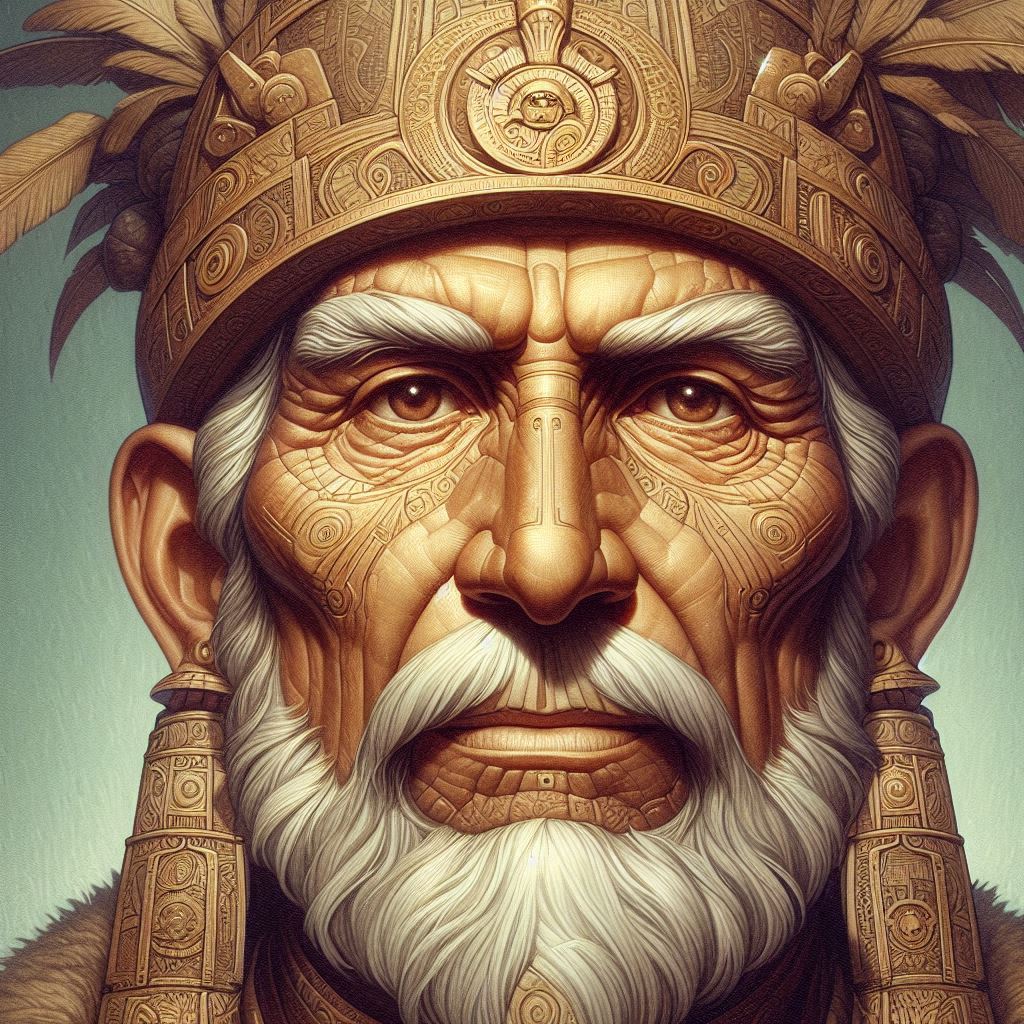
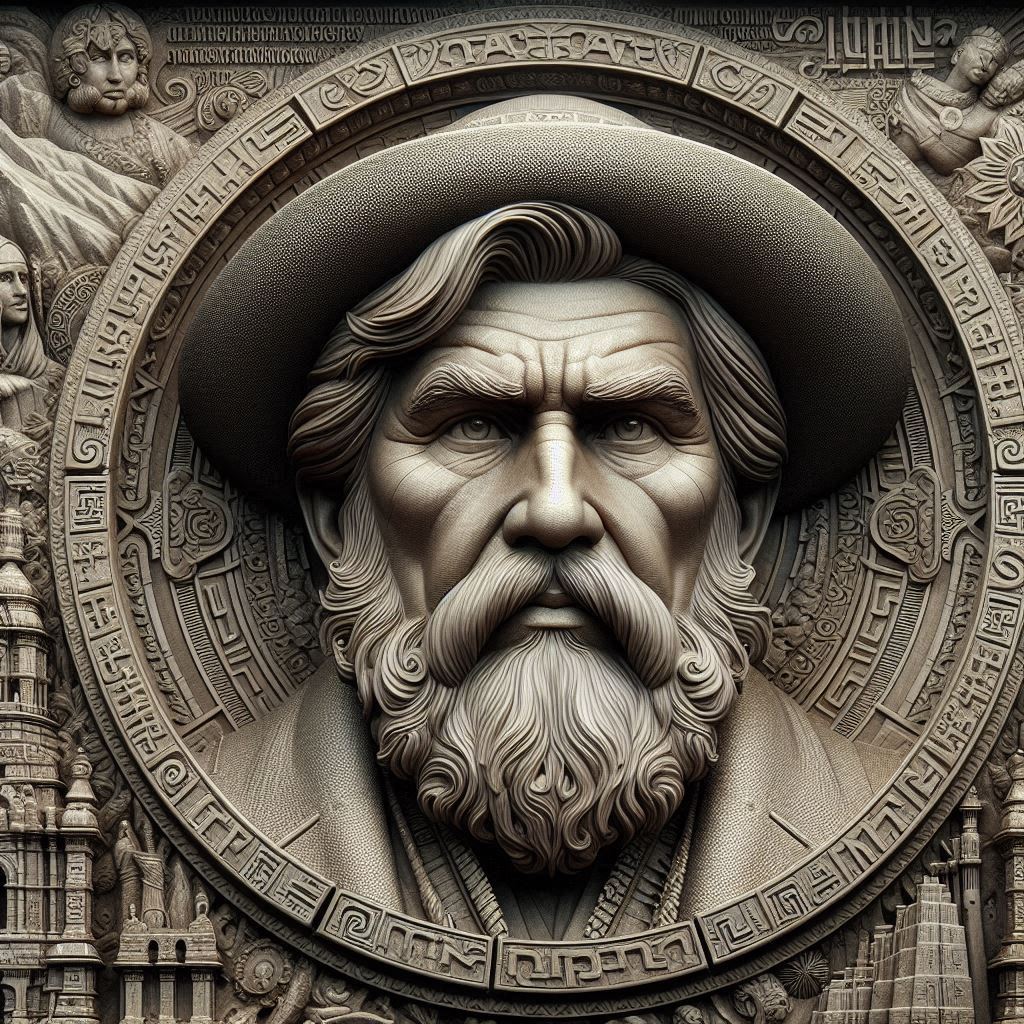
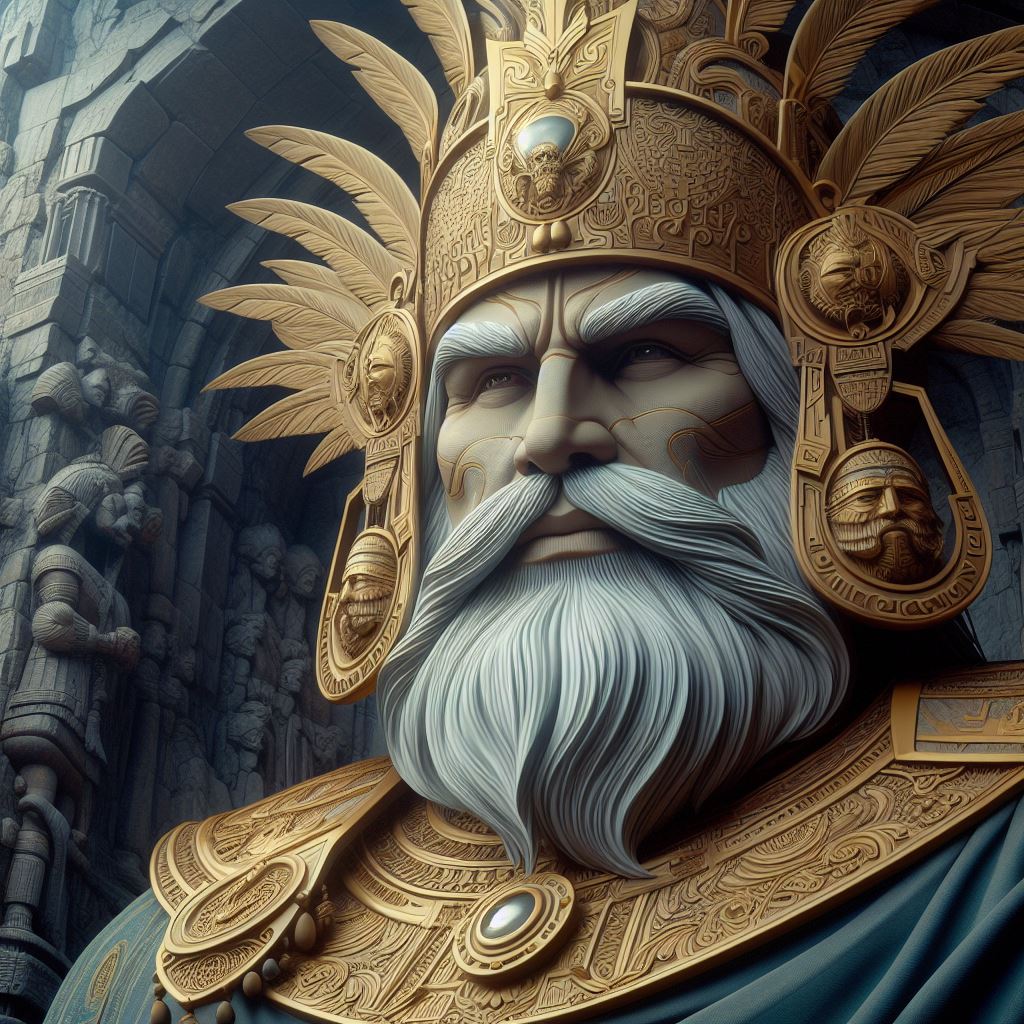
Manco Capac face reconstruction through Microsoft Bing AI software
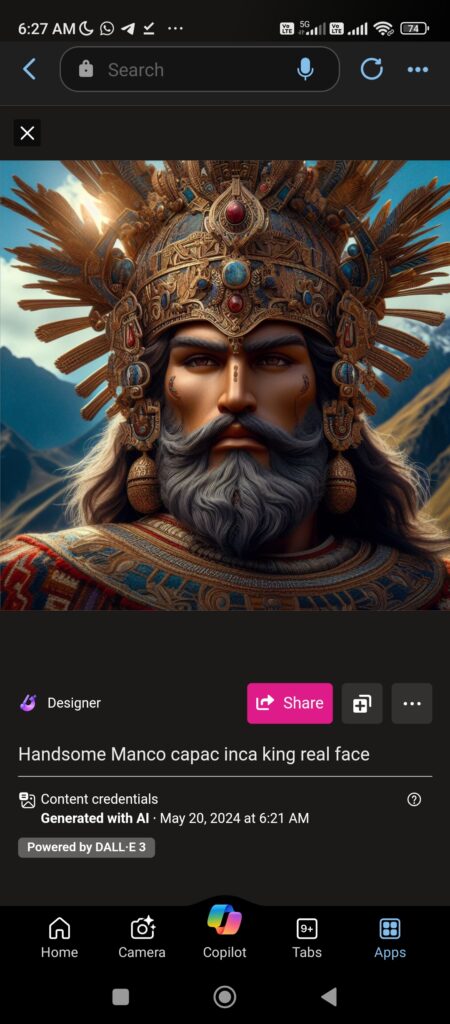
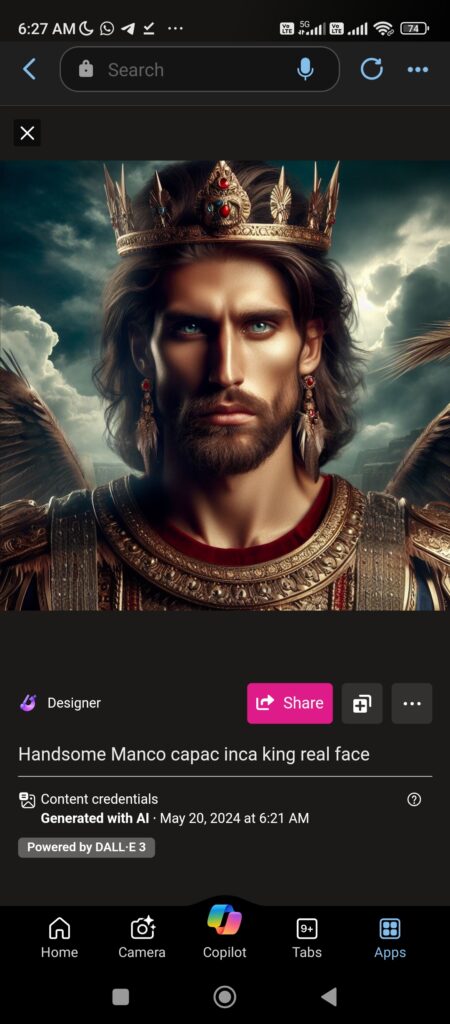
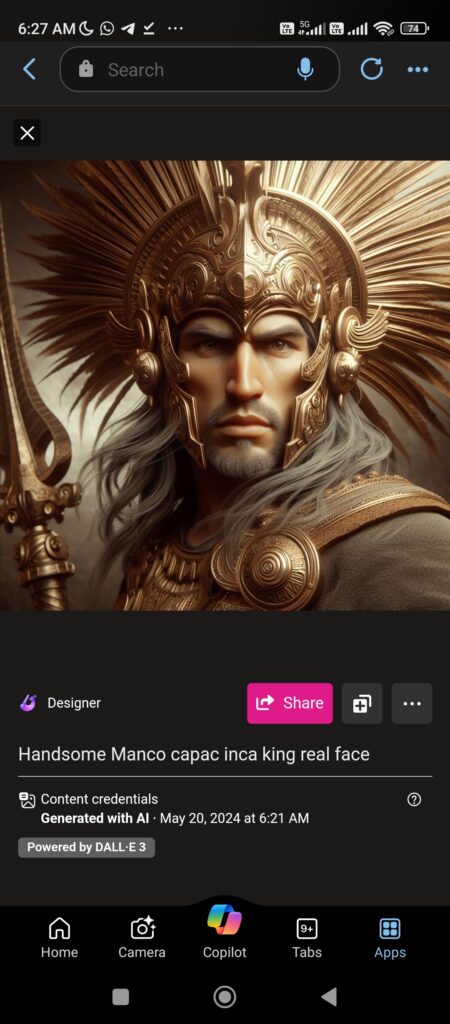
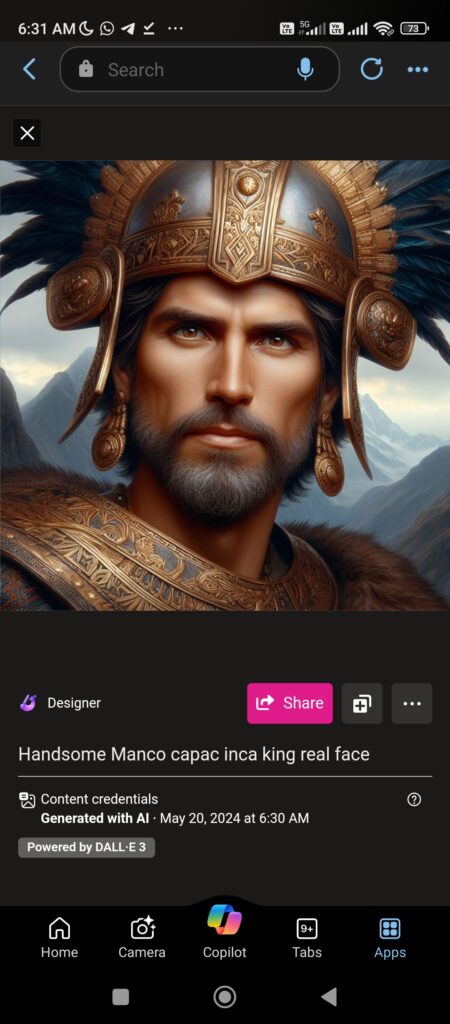
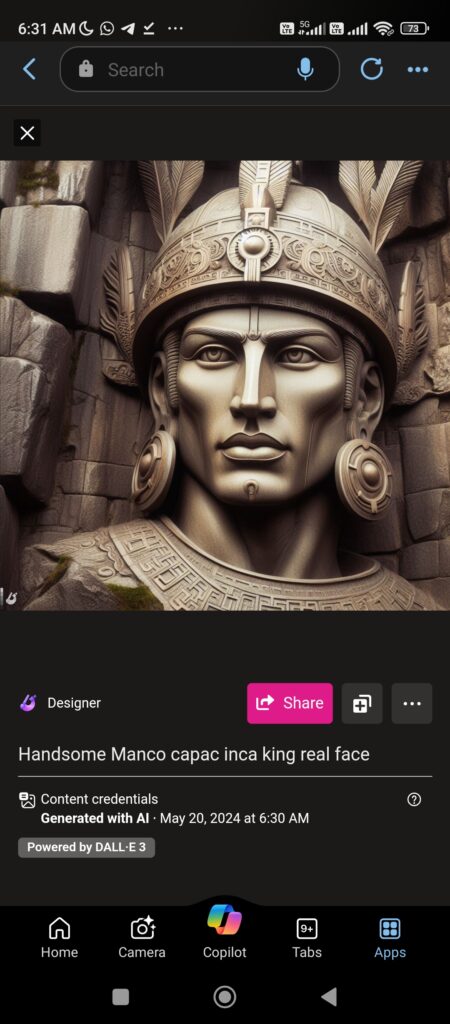
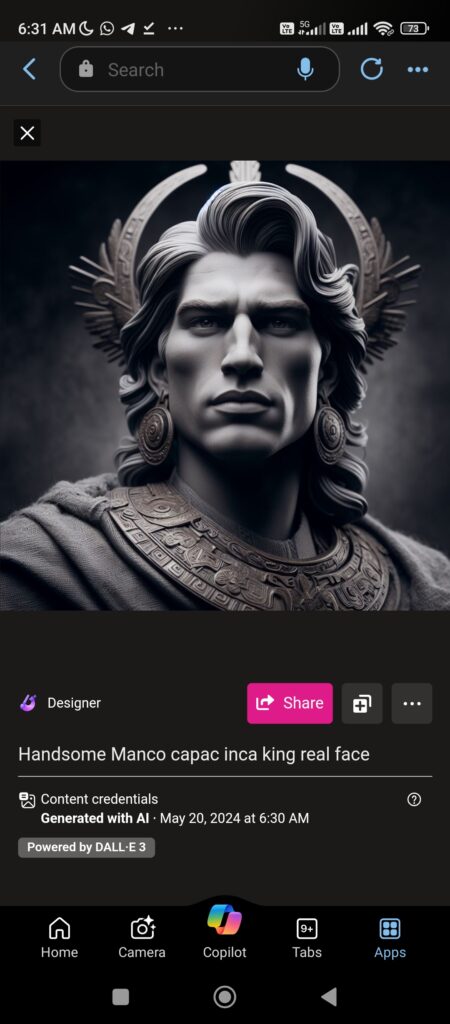
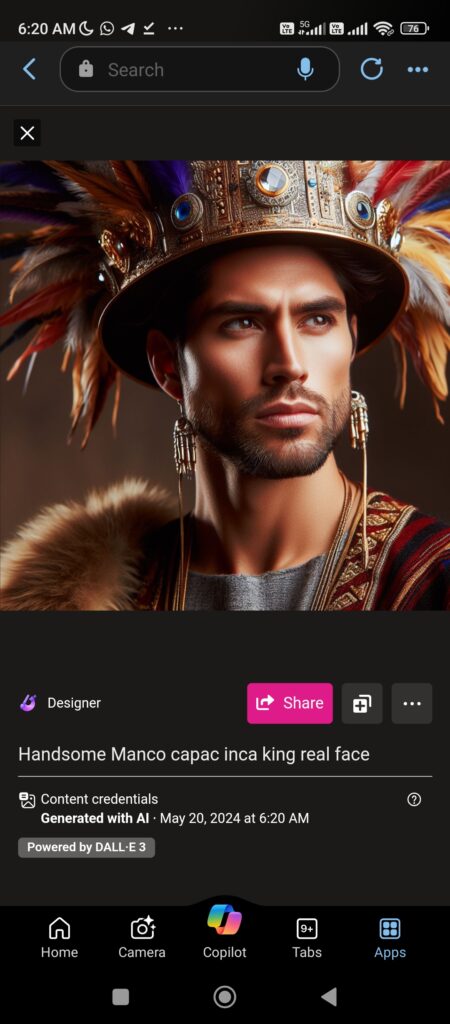

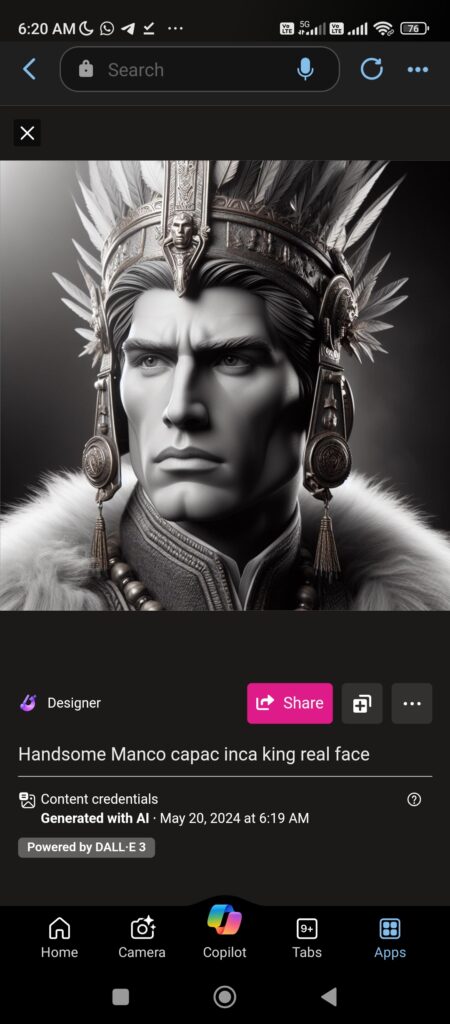
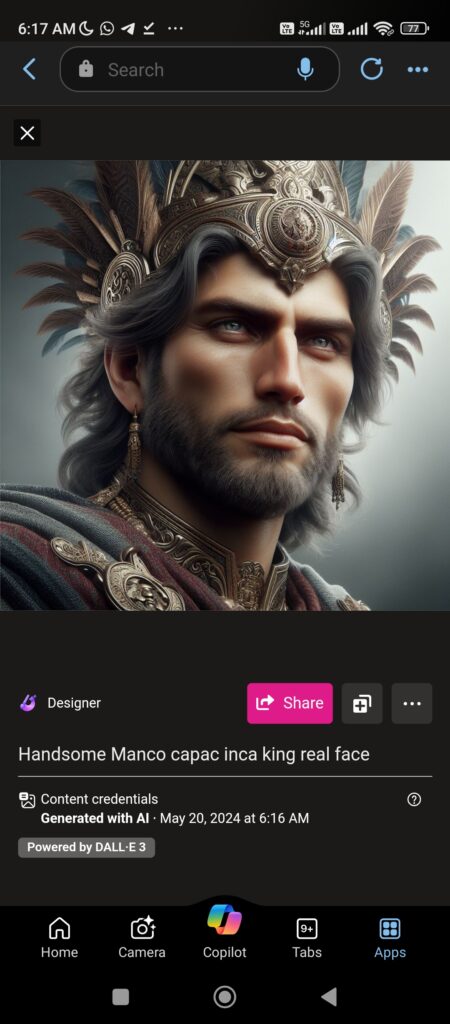
Was he (Manco capac) the same androgynous dying and rising authority, as he founded civilization and dynasty which is the work of this androgynous dying and rising authority, as well as his face match with another possible birth of this androgynous dying and rising authority, is yet remains and unsolved mystery.
Inkari – Founder of El-Paititi, Promise to Return
El-Paititi It is one of the most fascinating Inca mythological stories. And it is still the biggest archaeological mystery in South America today. According to the chronicles and old legends, Patiti was a massive city that was buried somewhere in the Peruvian Amazon Rainforest.
● Paititi is a legendary Inca lost city or land of utopian riches. It is said to be located east of the Andes, deep within the remote rainforests of southeast Peru, northern Bolivia, or northwest Brazil. Recent Proof of City Existence
● One of the most recent developments to prove the existence of El Dorado came in 2001. Mario Polia, an Italian Archaeologist came across a document written in 1600 AD by a missionary named Andrea Lopez, which describes a large city, rich in gold, silver, and gemstones, located in the rainforest and called “Paititi” by its inhabitants. He described waterfalls and deep forests surrounding the golden city
The mythical lost city of Paititi is said to have been founded by Inkarri
Inkari Prophecy- Promise to Return in Future

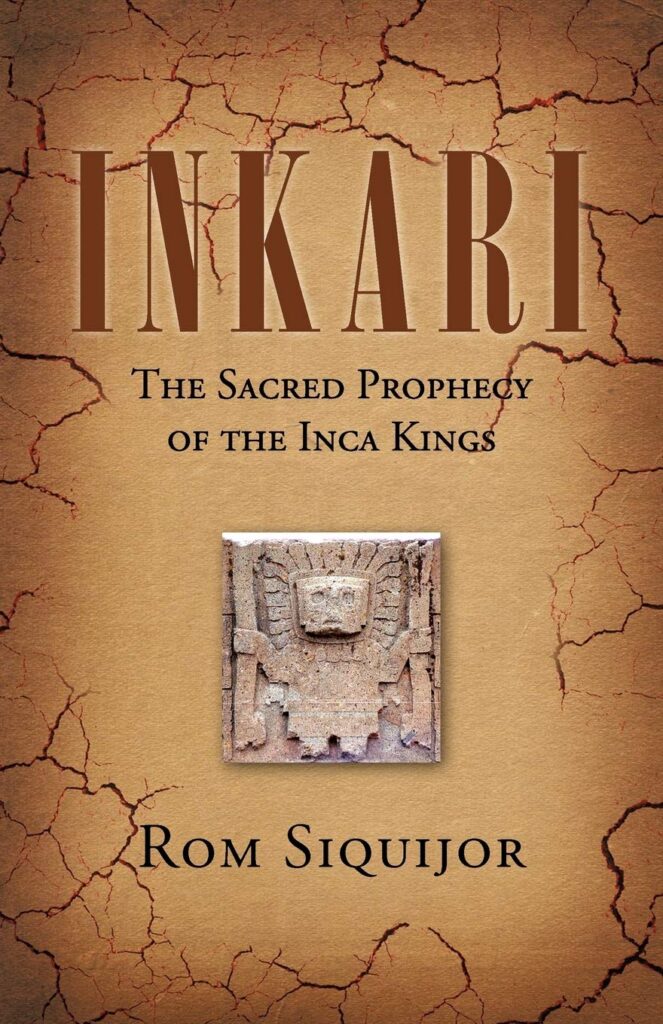
The Paititi legend in Peru is based on the story of Inkari, a culture-hero who, after founding Q’ero and Cusco civilizations, retired to the Pantiacolla forests to live out the remainder of his days in his refuge city of Paititi. According to legend, the first Inka was called the Inkari.
● Inkari was the name of the first father. He was a man gifted with magical powers. With his hand, he could change the direction of the rivers, and with his feet, he could flatten the hills, and his spirit was as strong and awesome as the wind that blows over Titicaca, the highest lake in the world. ”
● Inkari was a human being with his heavenly father, the Sun.
● Her mother was a dark space, a cosmic womb from which the stars came. Shortly after his birth, Inkari set out in search of a fertile valley in which to establish a new civilization. To explore the ground, the Sun had given him a golden scepter. The crew would sink into the fertile soft soil “in the middle of the earth,” the future city of Cusco.
Inkari’s staff landed in the Andean highlands the first time he threw it, but the soil was too hard to grow much fruit.
● The terrain, however, was so magnificent that Inkari designated it as the home of the Q’ero people, entrusting them with the responsibility of safeguarding the wisdom and initiation rites.
● The Q’ero would be the ones who remembered the creation story and the prophecy that Inkari would return to establish a second empire based on wisdom rather than military might. The mythical lost city of Paititi is said to have been founded by Inkarri
https://thefourwinds.com/the-primordial-light-and-inkari-and-collari-the-first-father-and-mother/
Since it has been passed on orally for many generations, several different versions of the Inkarri myth exist
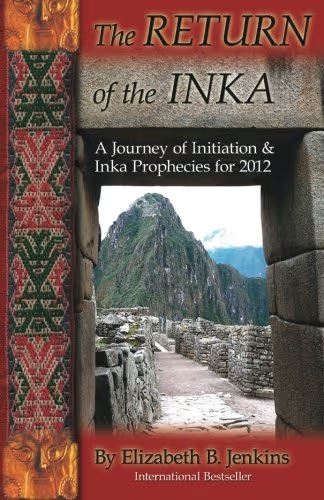
The Harakbut Closed Mouth Face carving of mountain: Amazon Rainforest
Similar Face– The Harakbut Closed Mouth Face Share same face Proportion like Androgynous Dying and Rising Creator of civilization authorities Every Birth Hypothetical Similar Face Proportion
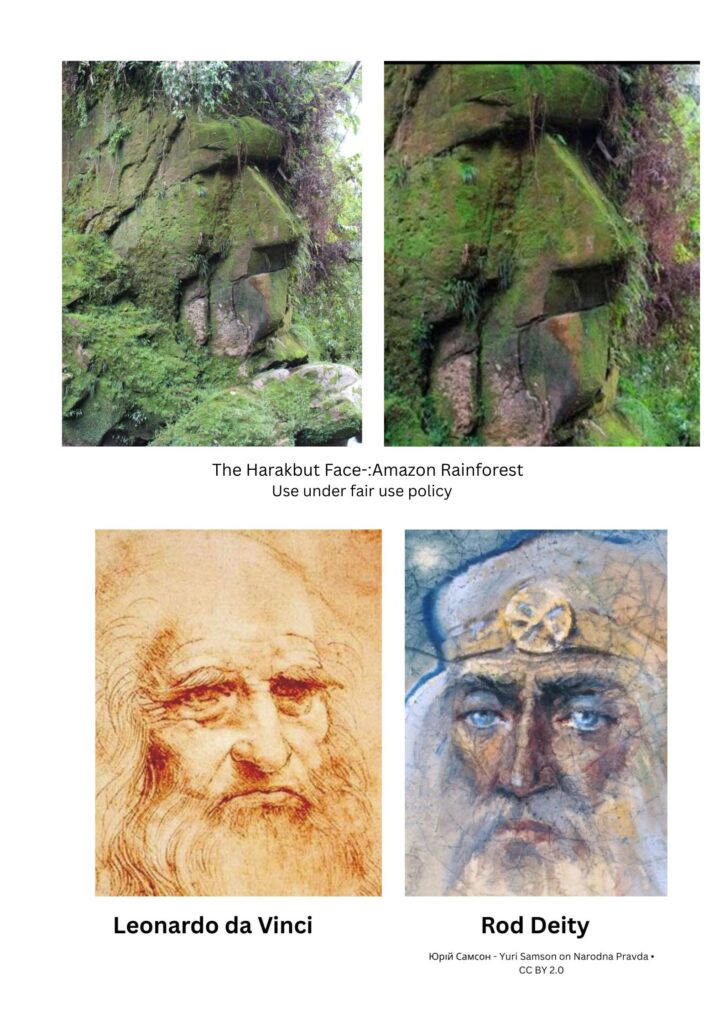
Conclusion – was Inkari the same creator of civilization and dynasty founder Androgynous dying and Rising Deity, as this authority take rebirth and come again and known by different Names in Every Civilization. The Q’ero would be the ones who remembered the story of creation and the prophecy that Inkari would return to found a second empire based on wisdom and not on military might. Because only androgynous dying and Rising authority can said this as he possess authority and capacity to come back through rebirth. And known as a creator of civilization and dynasty founder authority, is yet remains and unsolved mystery.
When He will Return He will Restore Relationship between Earth Goddess and children Myths
Unsolved Mystery
Was he the same Creator of civilization Androgynous dying and Rising authority ?who promised to return to build the golden age empire based on wisdom rather than military might. As he hold eternal authority as a founder of civilization and Dynasty as per Egyptian book of the dead and Indian Vedas.
Glooscap Creator Deity
taught knowledge of civilization
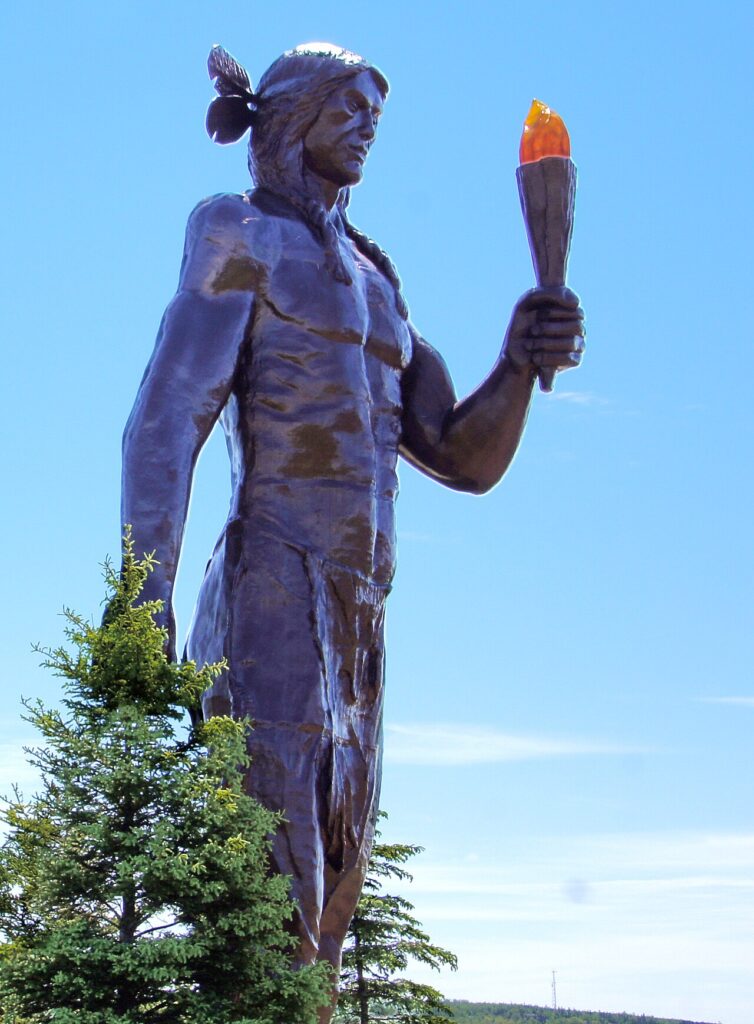
Madereugeneandrew • CC BY-SA 4.0, Glooscap monument, Millbrook First Nation, Nova Scotia
Gloosecap is said to have come from the East, but he was in the form of a man. He told his native Americans everything they knew, from the names of stars to how to hunt and fish. and is depicted as a wise man in most stories.
In his role as creator, Glooscap is similar to that of the Ojibwa Nanabozho and the Cree Wisakedjak. There are variations to the legend of Glooscap as each tribe of the Wabanaki adapted the legend to their own region. At the same time, there are consistencies in the legend with Glooscap always portrayed as “kind, benevolent, a warrior against evil and the possessor of magical powers
The Glooscap tales often share similarities with the Coyote tales of the Apache, the Wihio tales of the Cheyenne, Nih’a’ca tales of the Arapaho, Iktomi tales of the Sioux, and those of many other Native peoples of North America.
Glooscap is also believed to have brought the knowledge of good and evil, fire, Healing medicine, fishing nets, and canoes, making him a Culture hero.
He is known for taming animals.
In addition to being a spiritual figure, Glooscap also became a major figure of regional identity for the Bay of Fundy region with everything from steam locomotives, the ship Glooscap, schools, businesses and the Glooscap Trail tourism region named after the heroic figure.
Glooskap was considered the protector of humankind. He is expected to return as a savior of his people when they are most in need.

